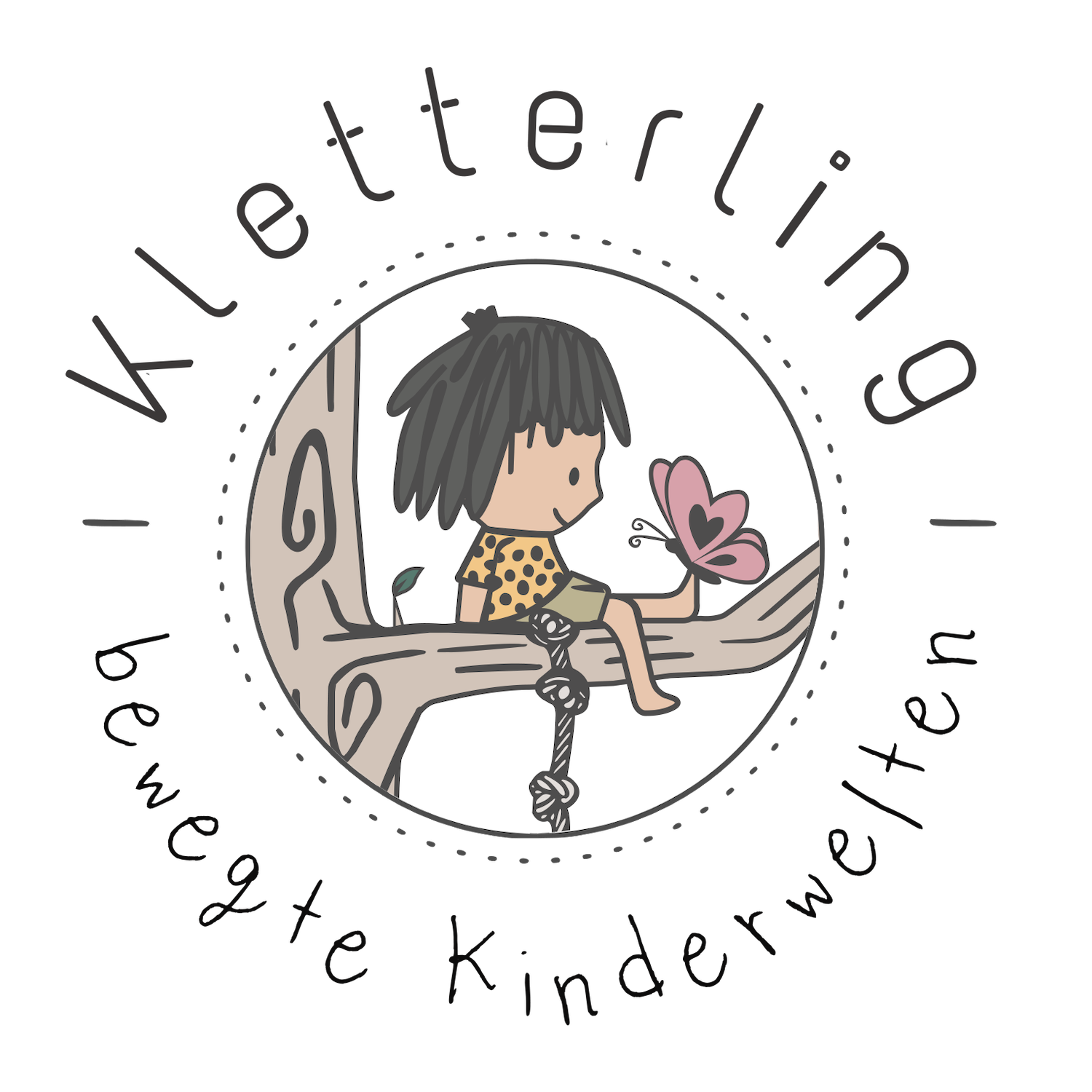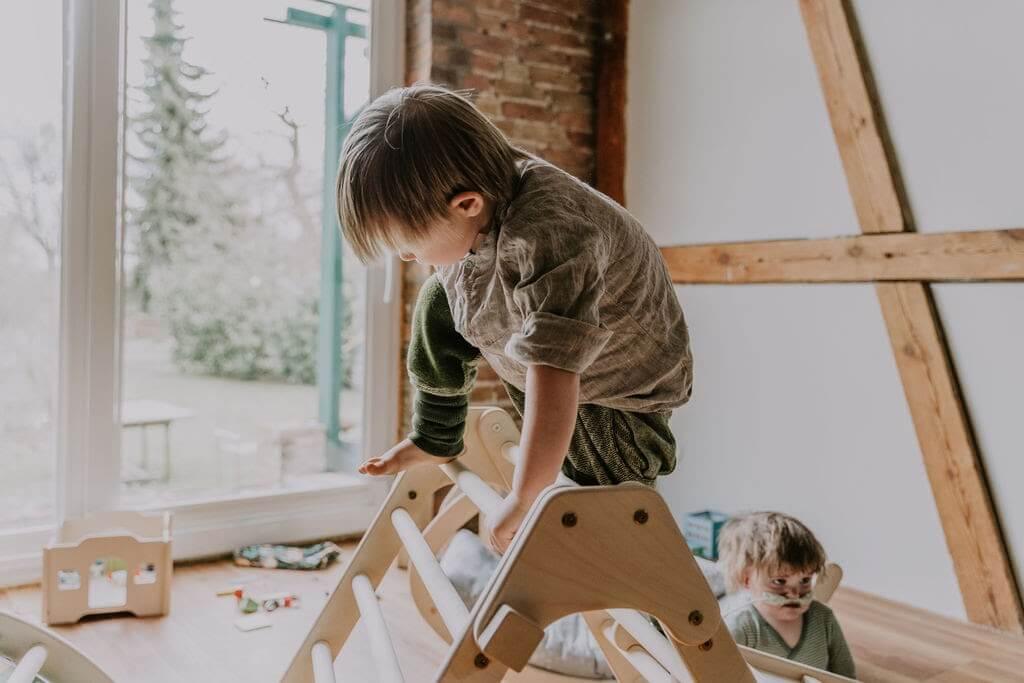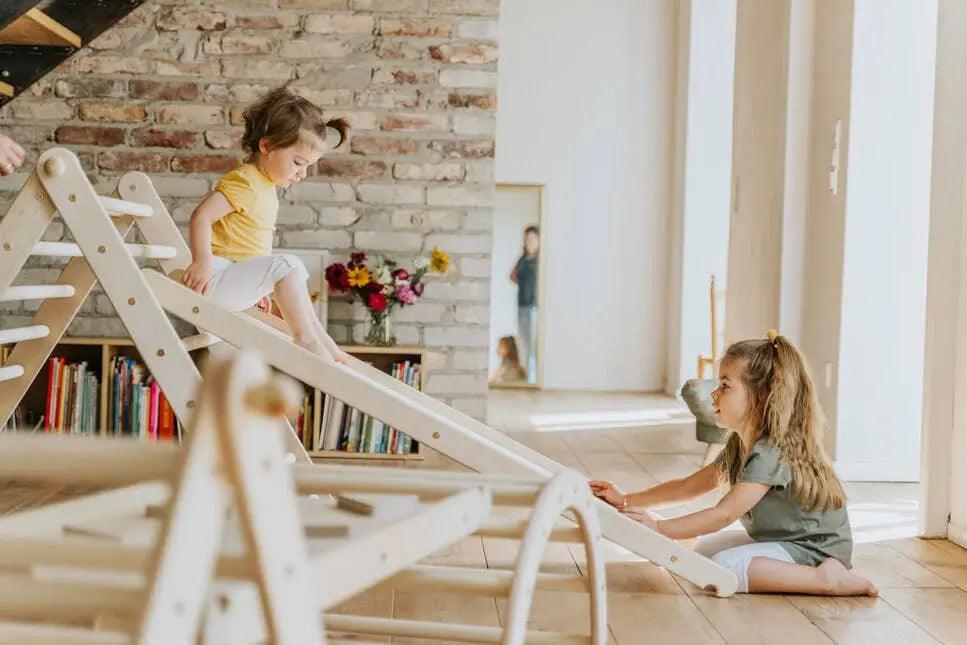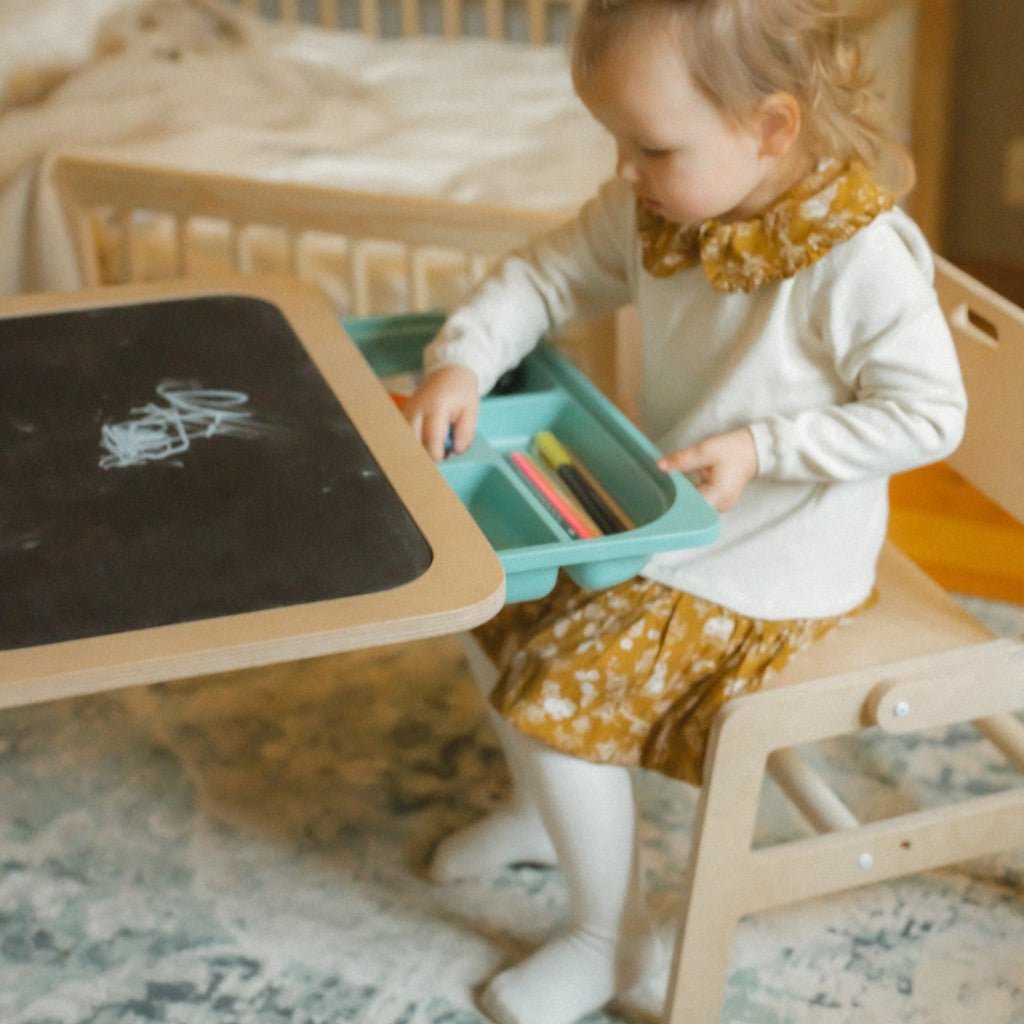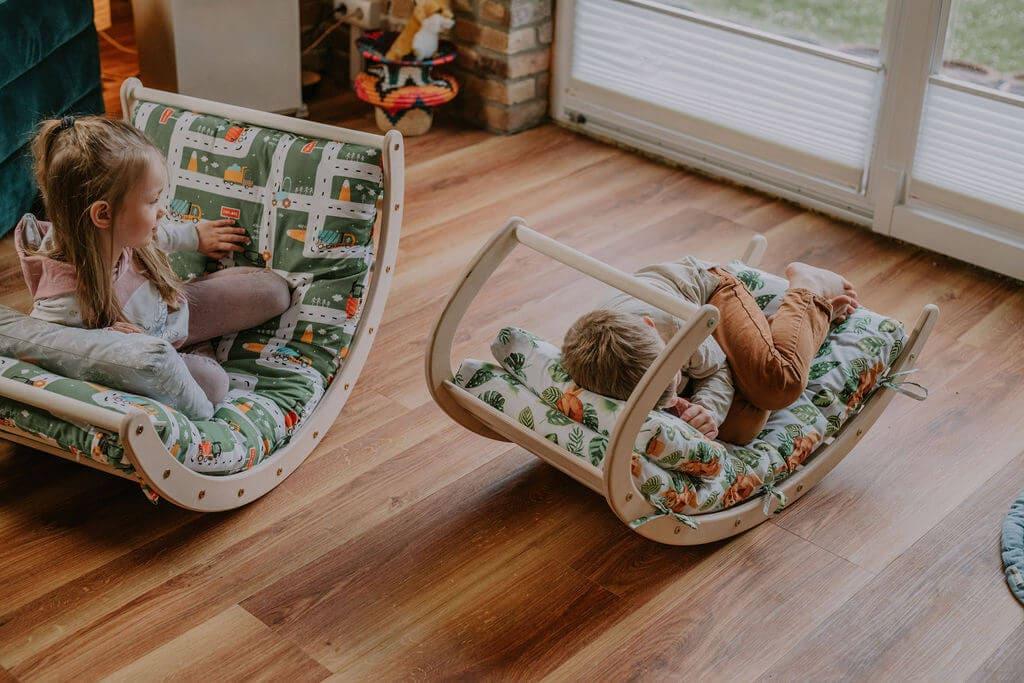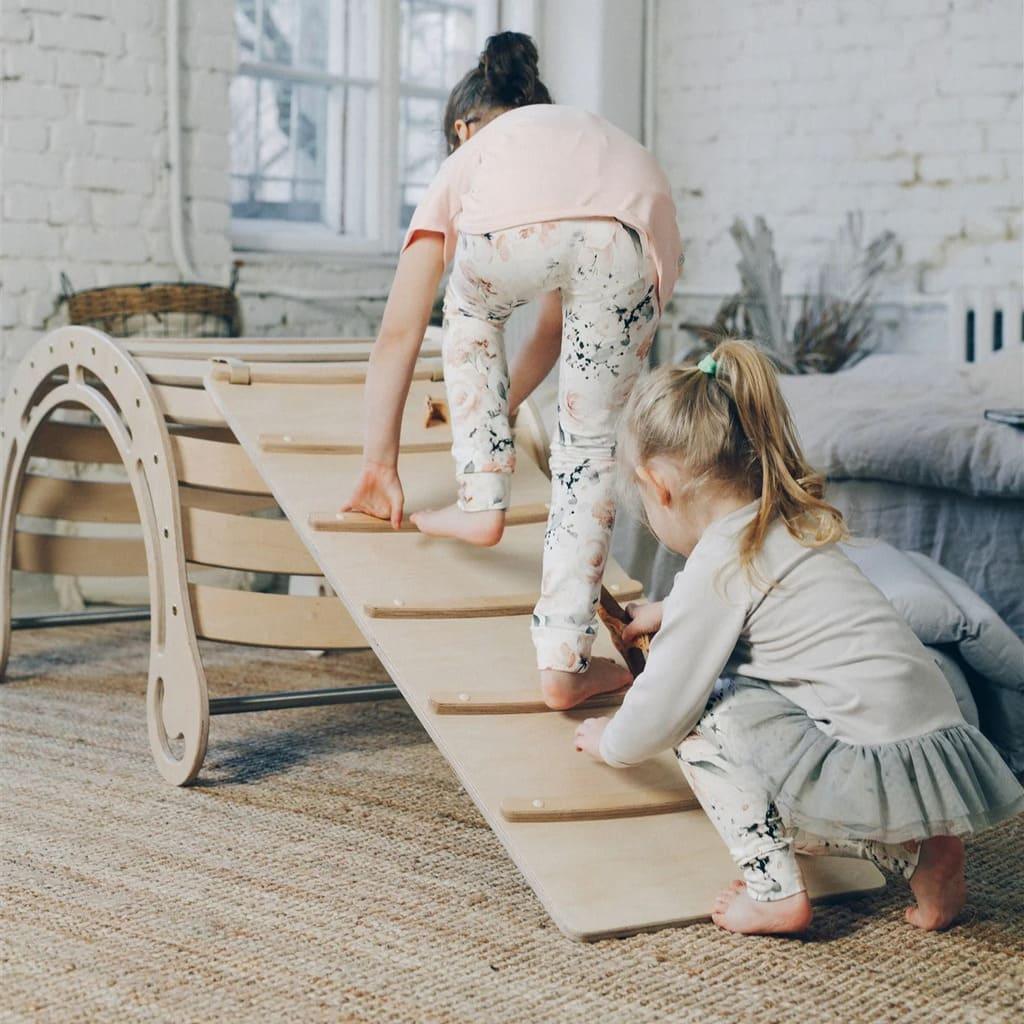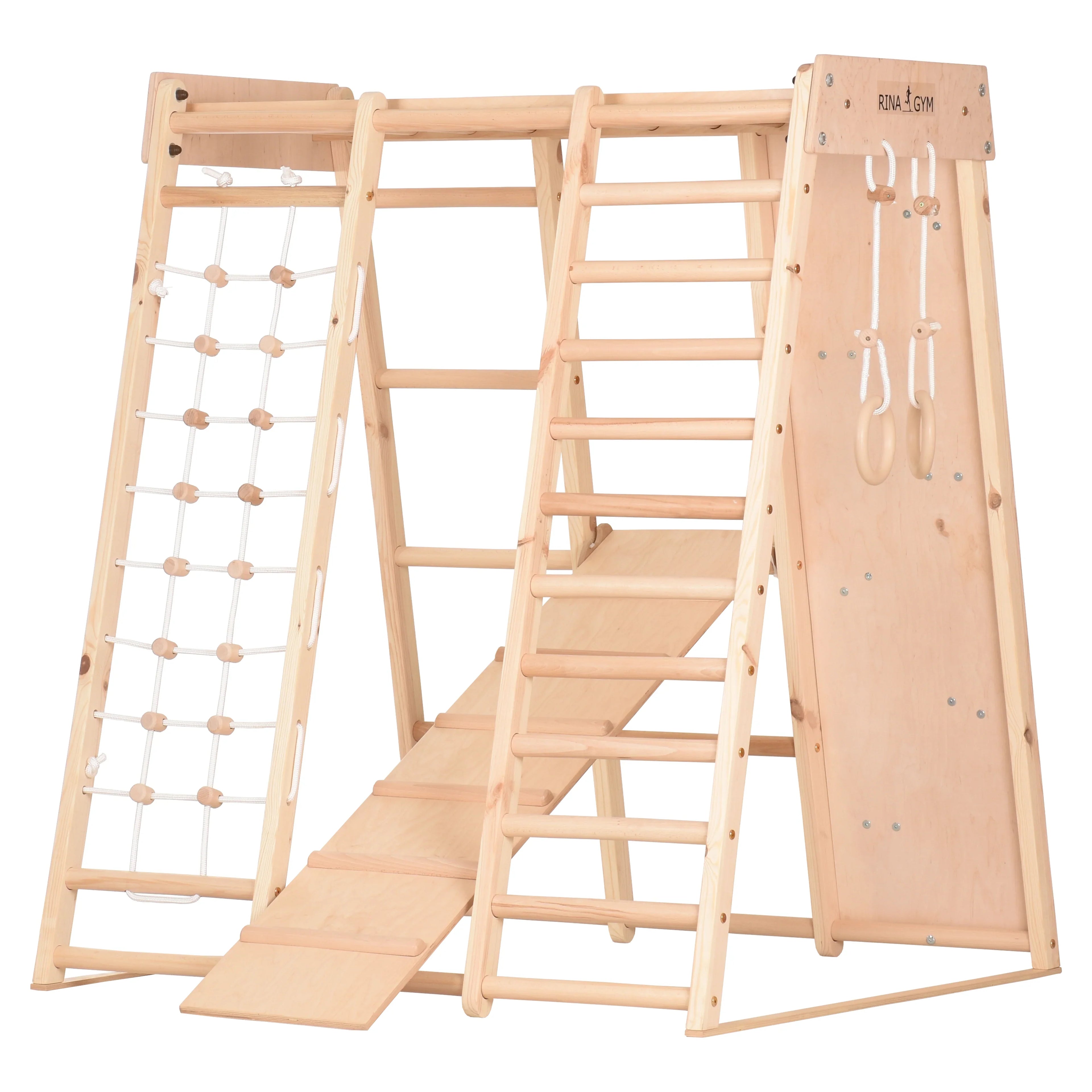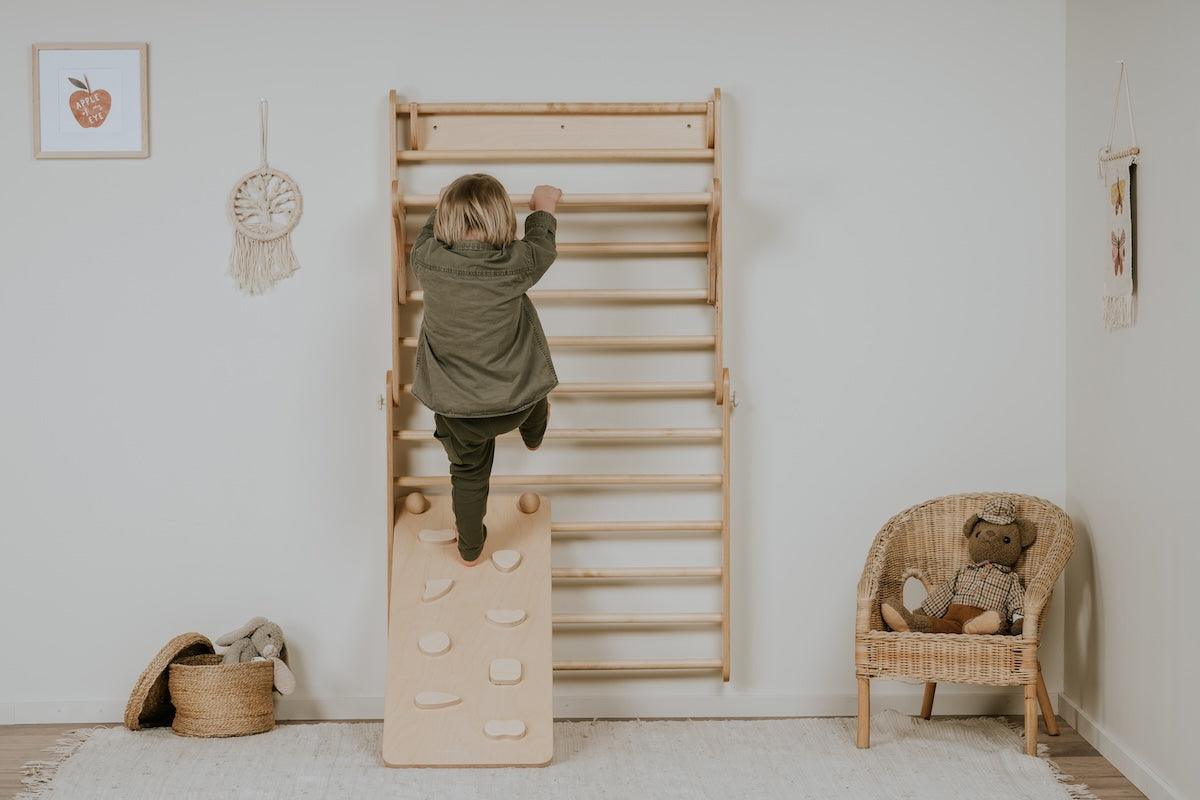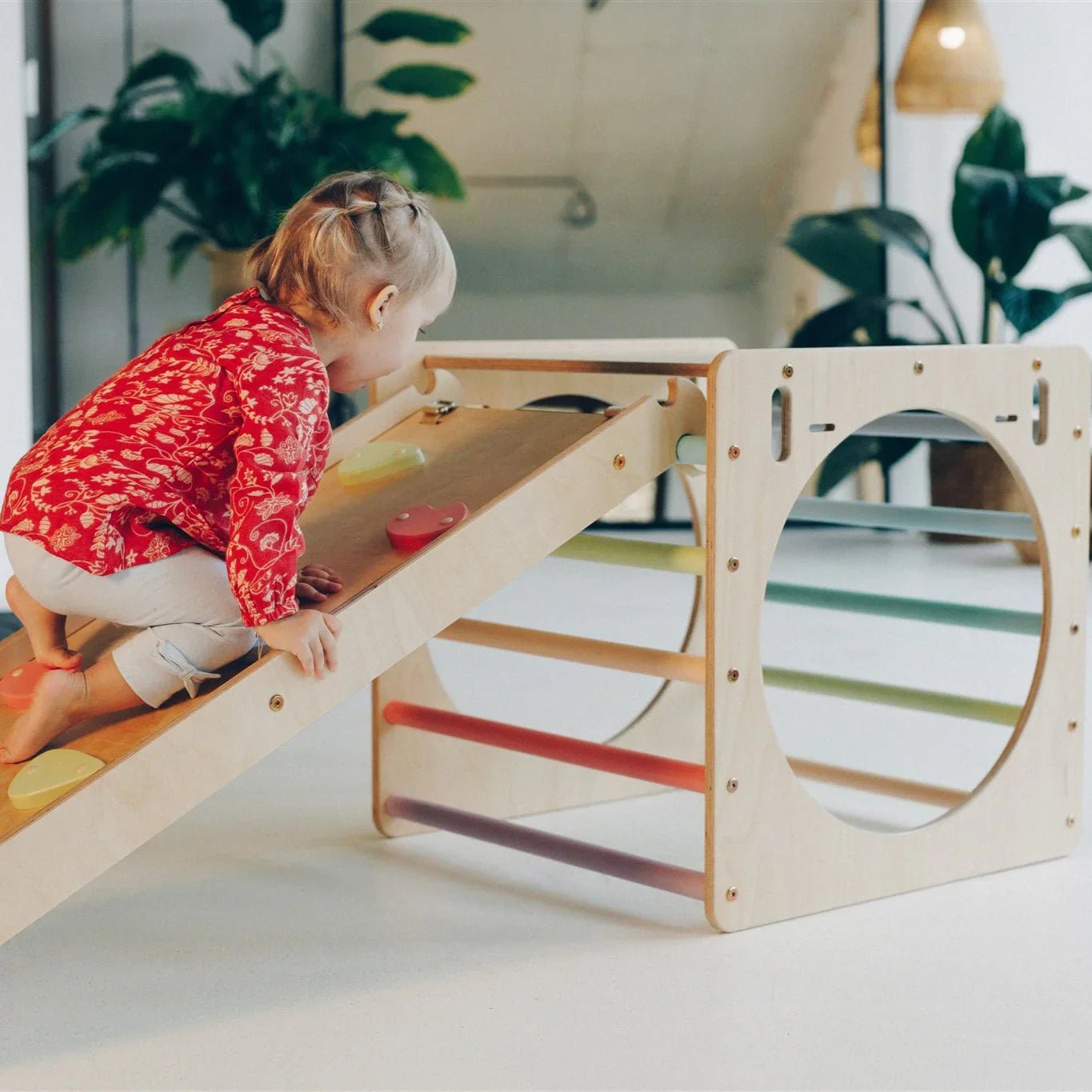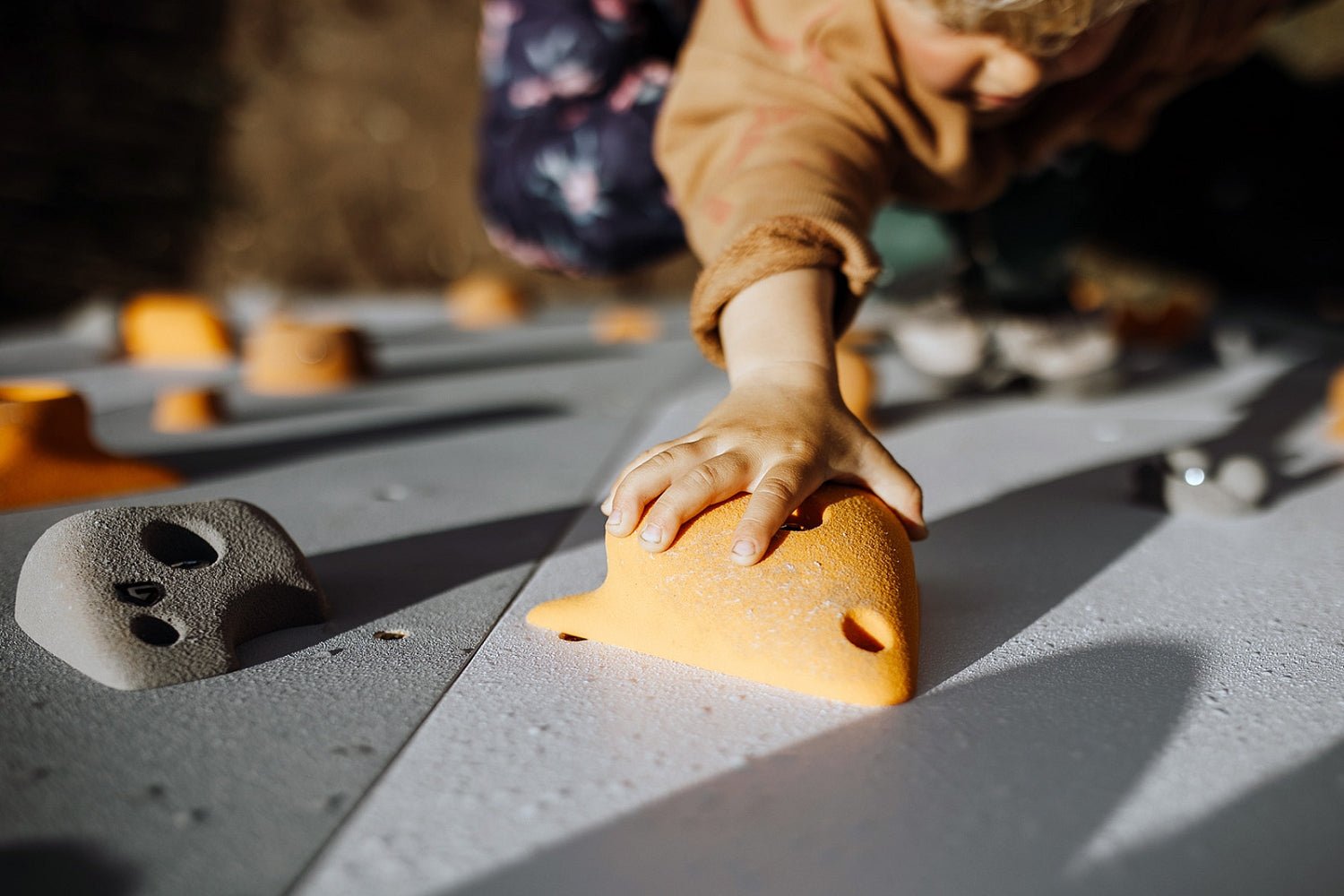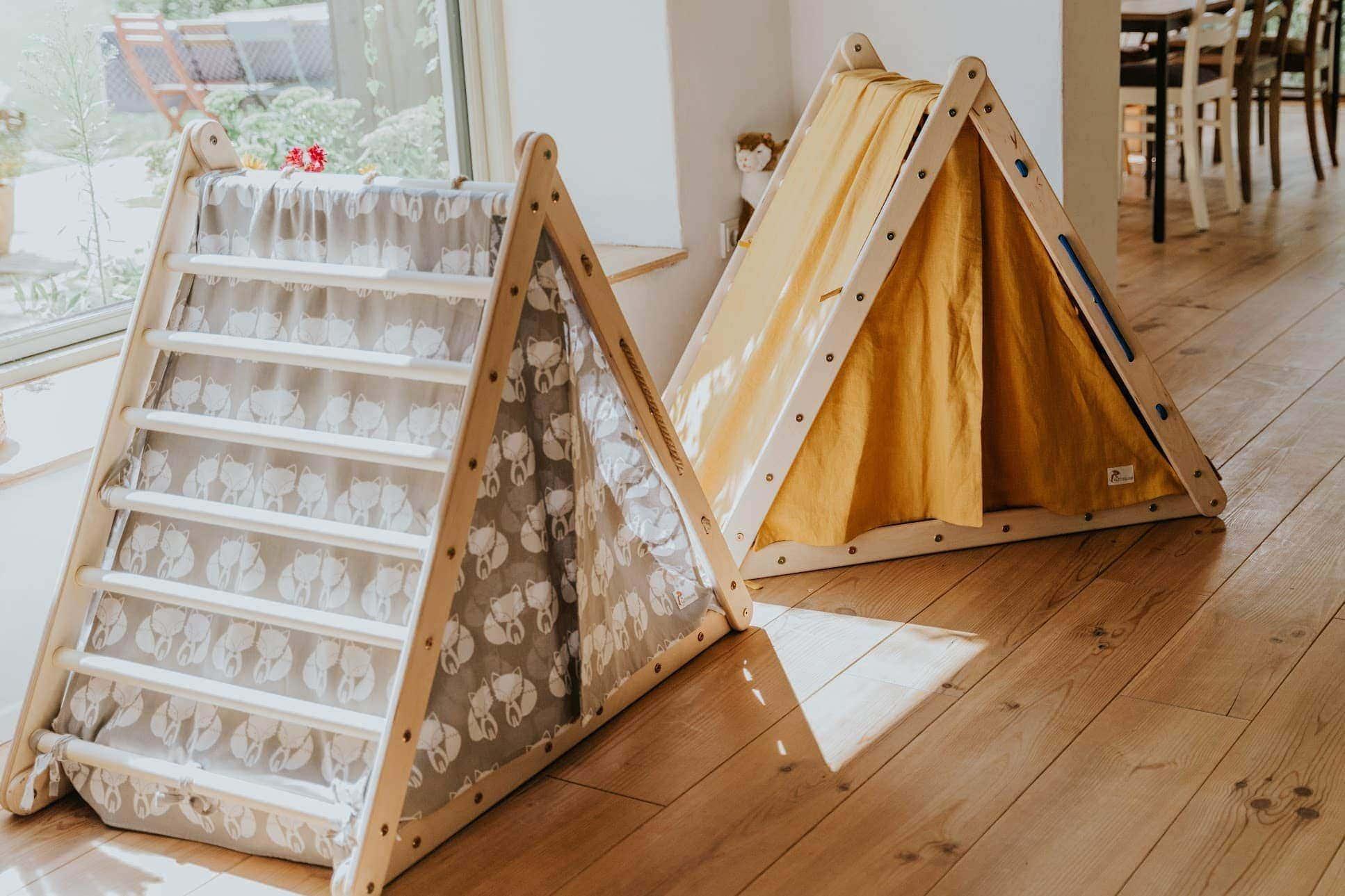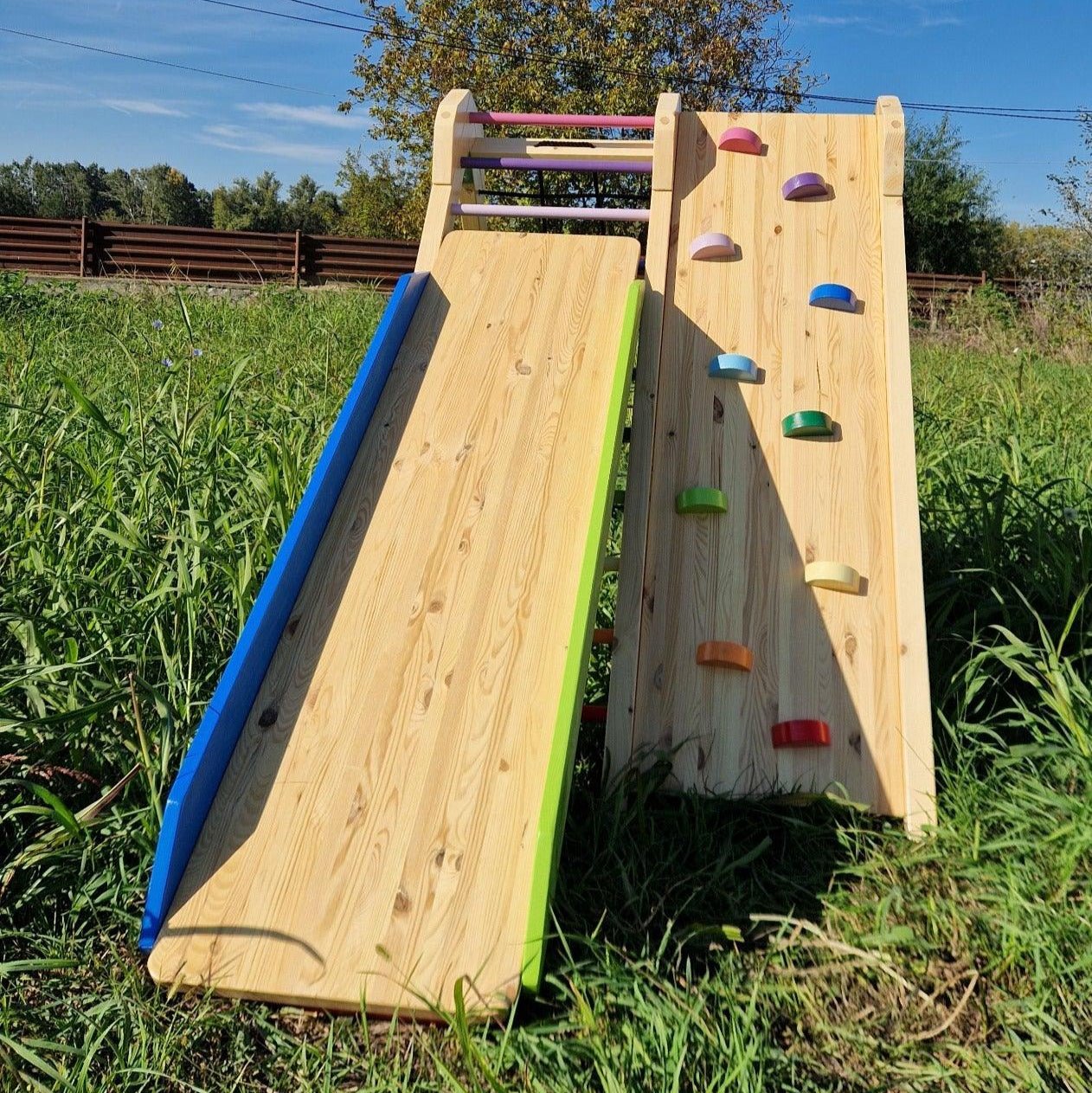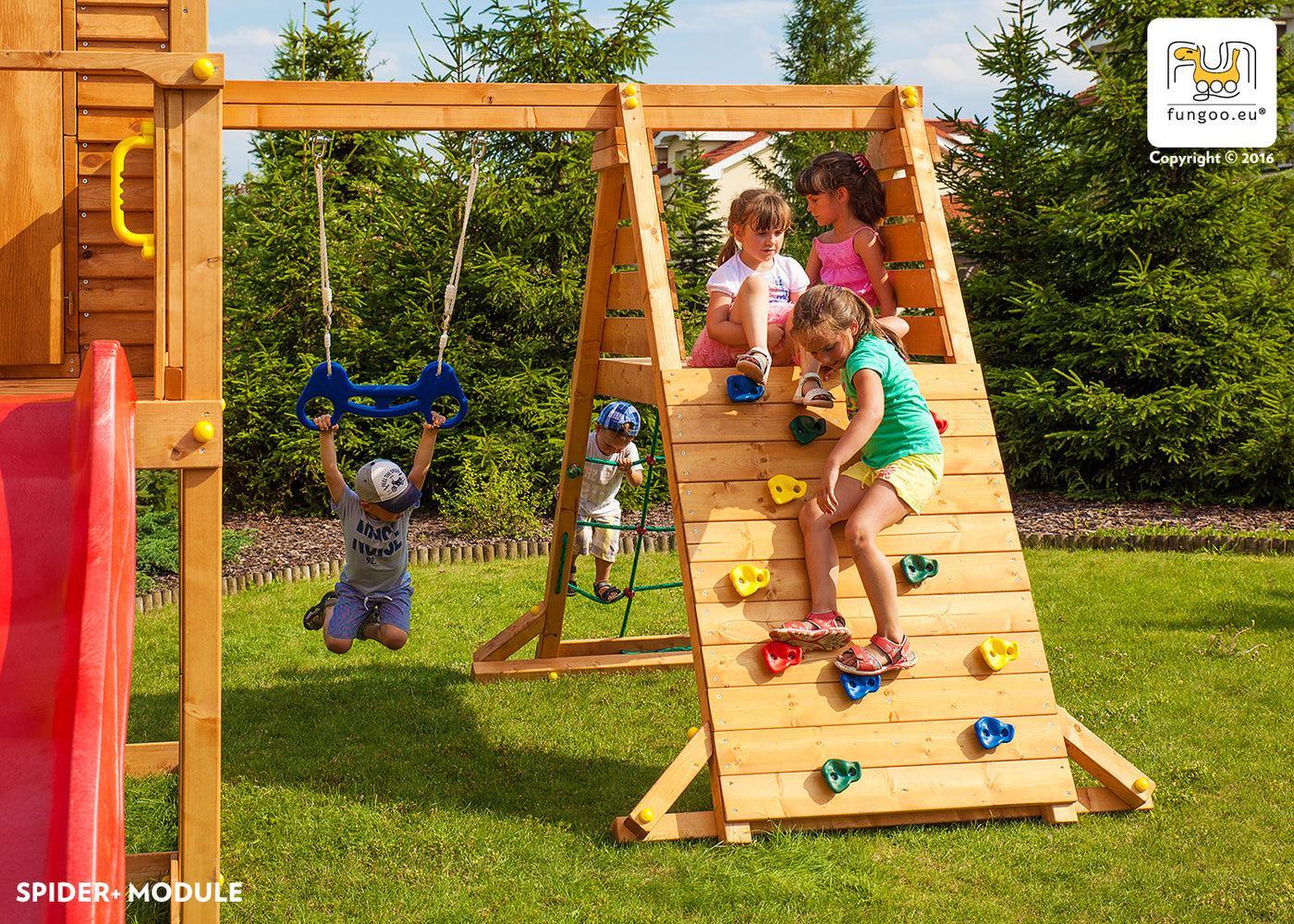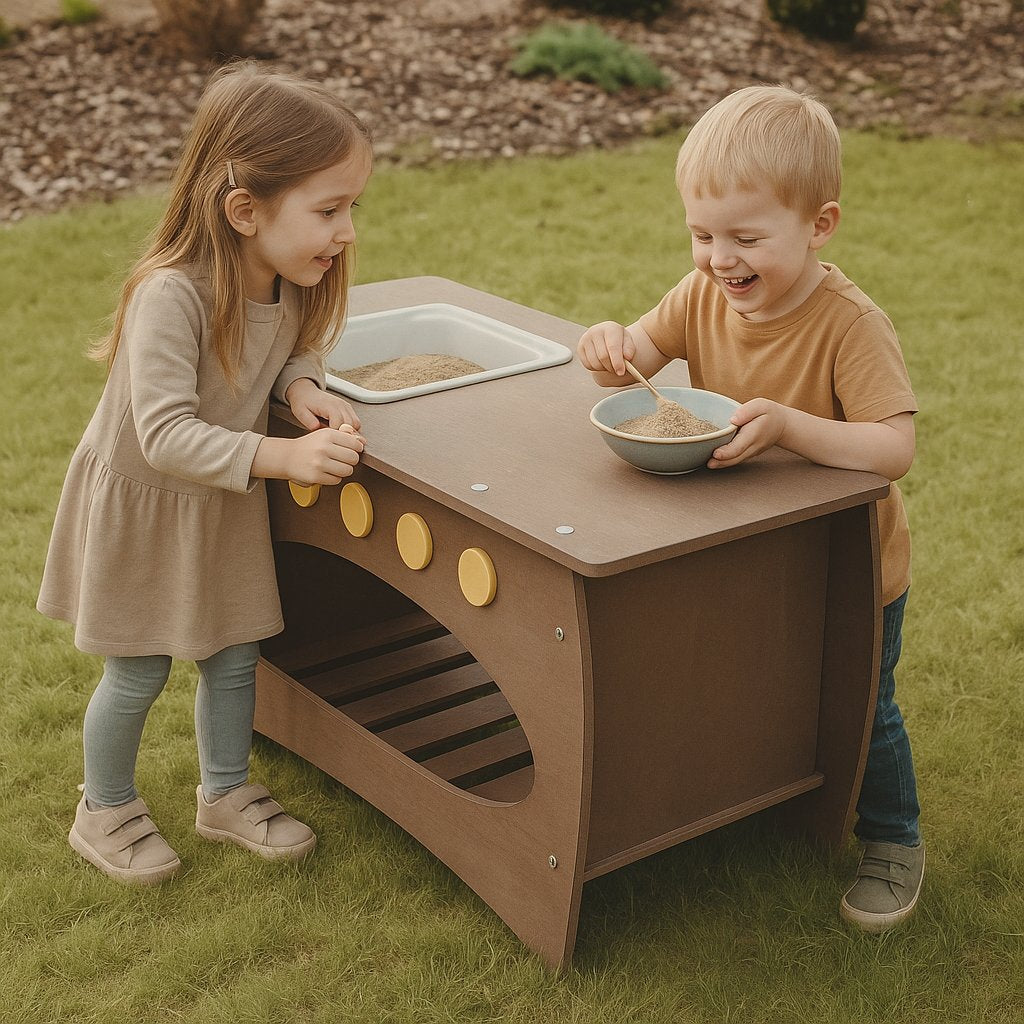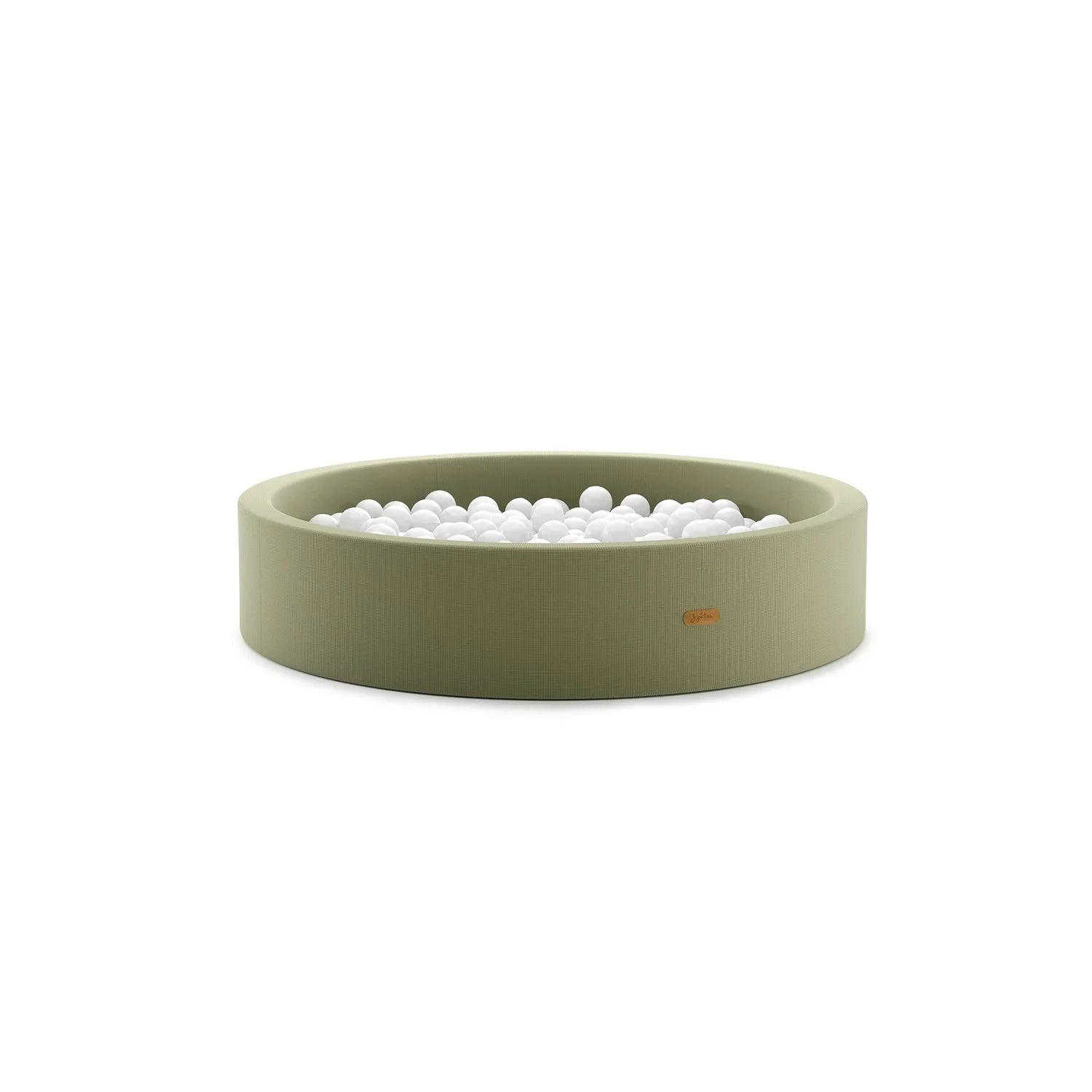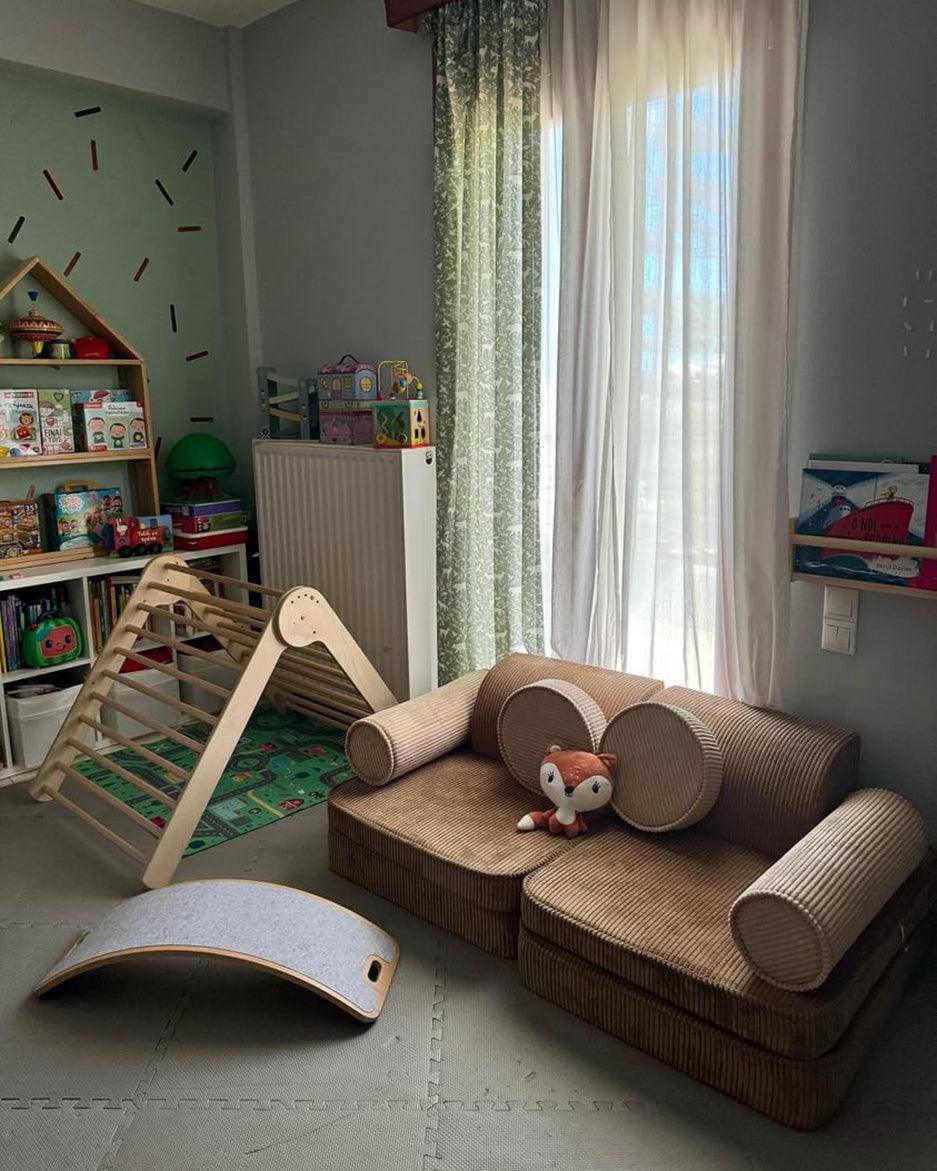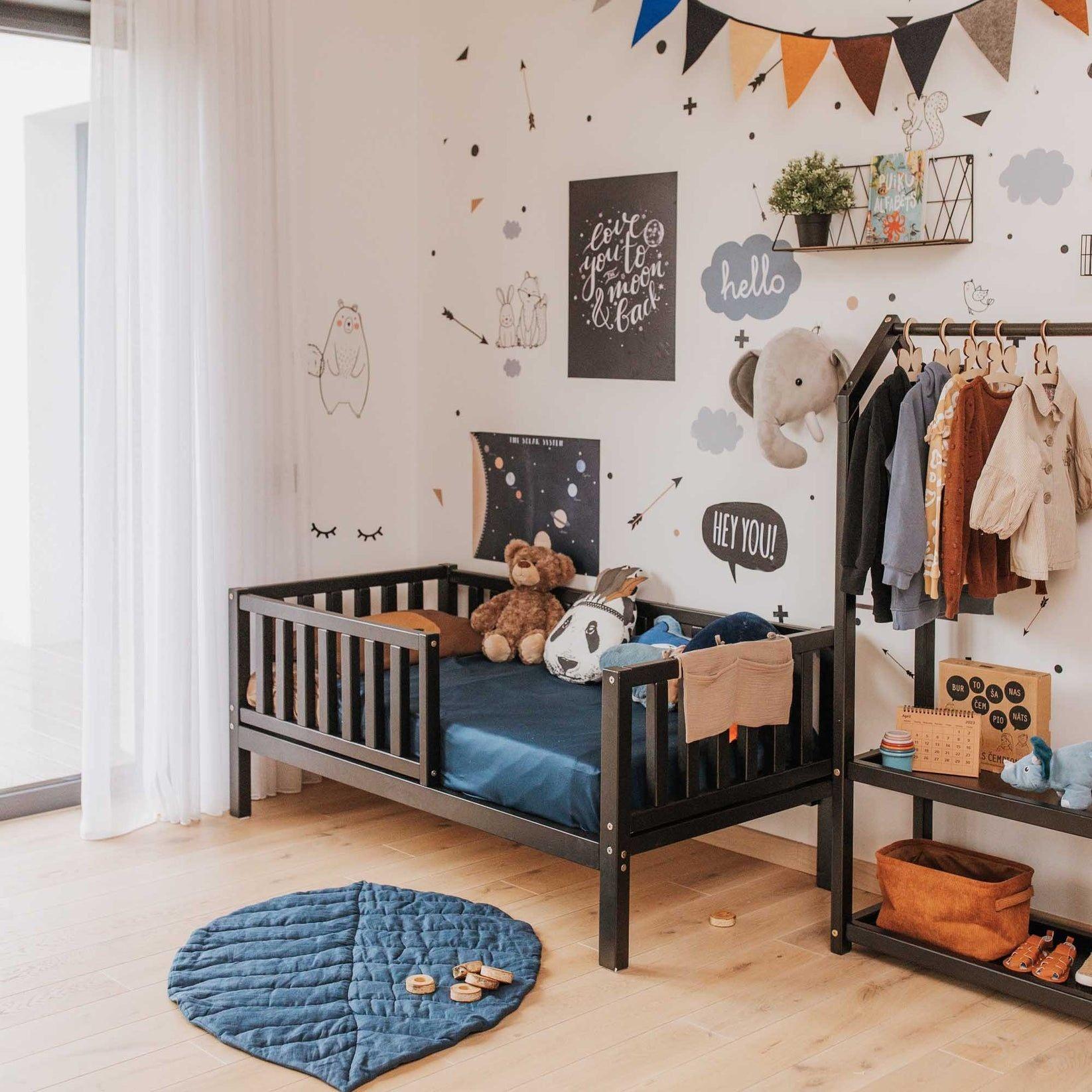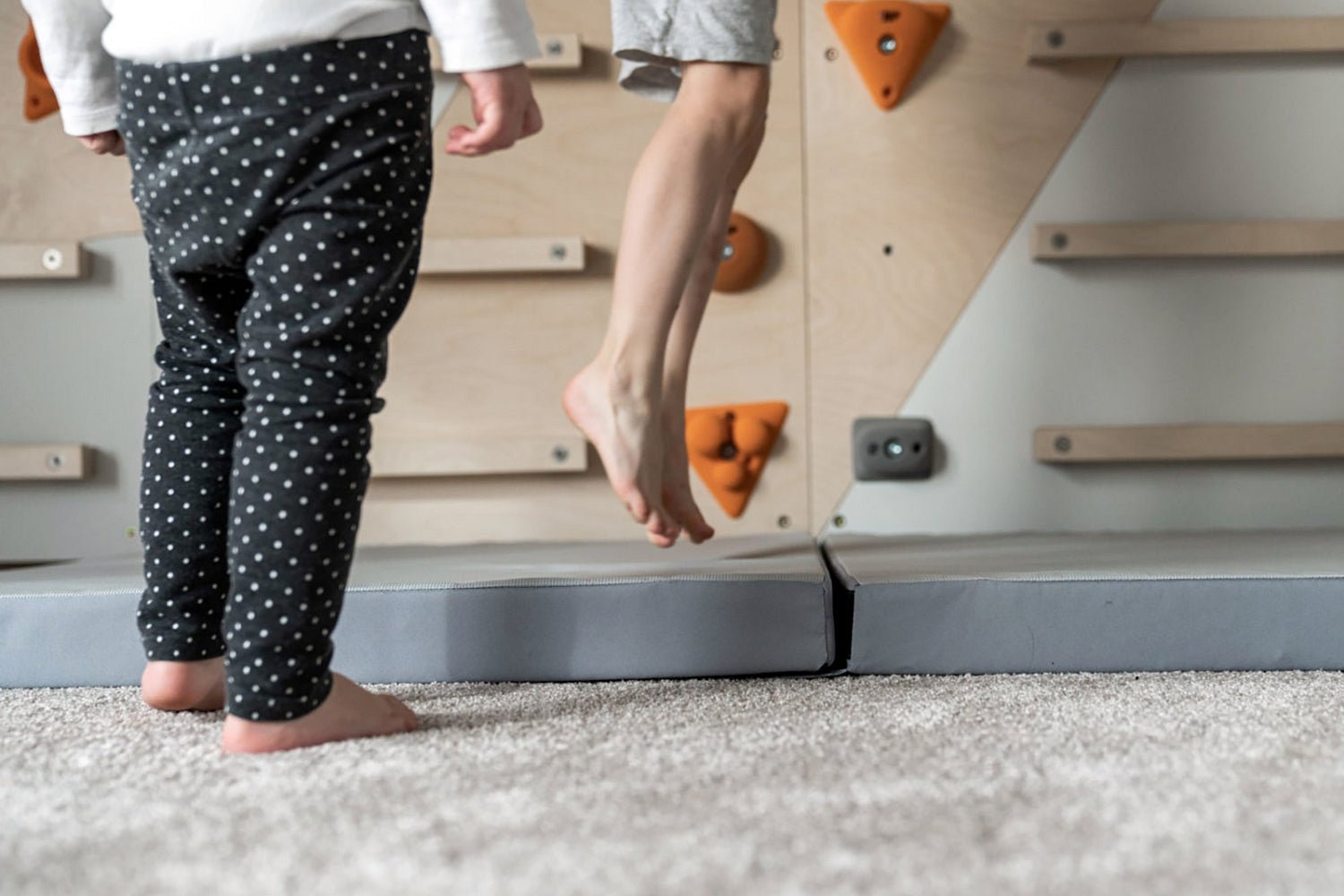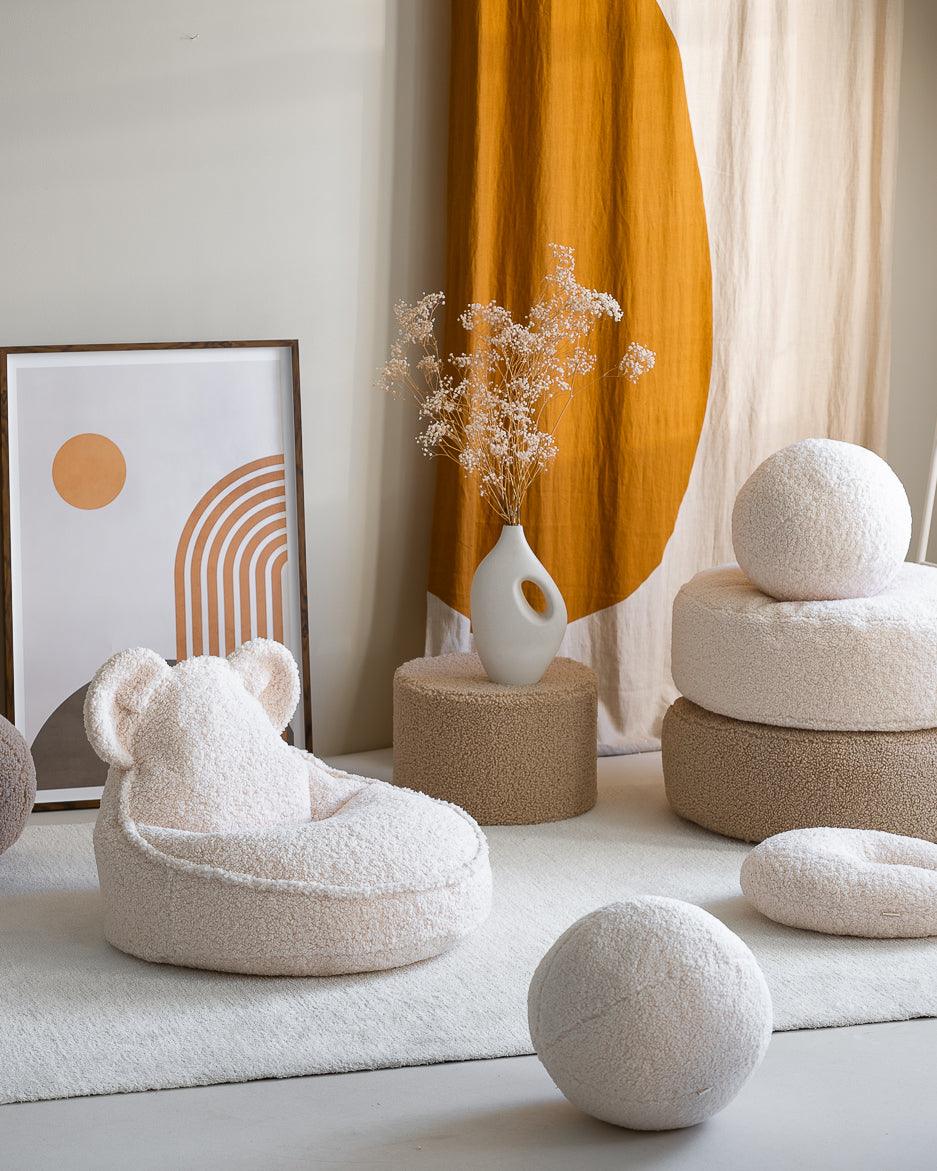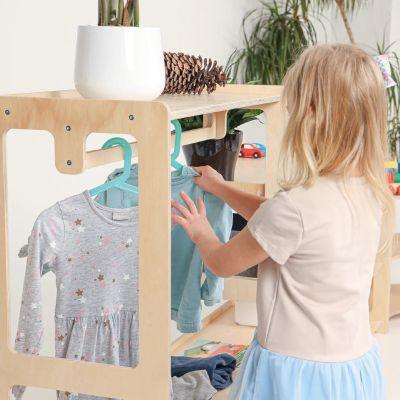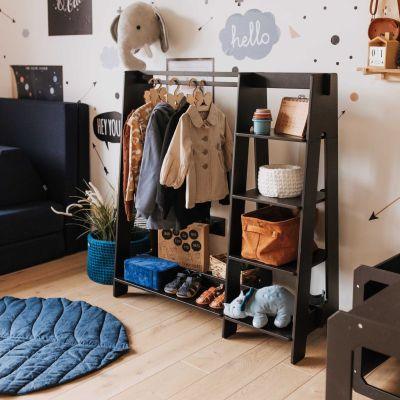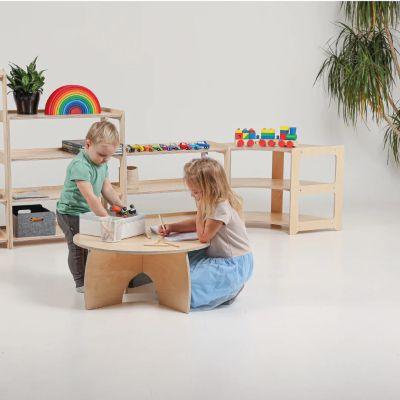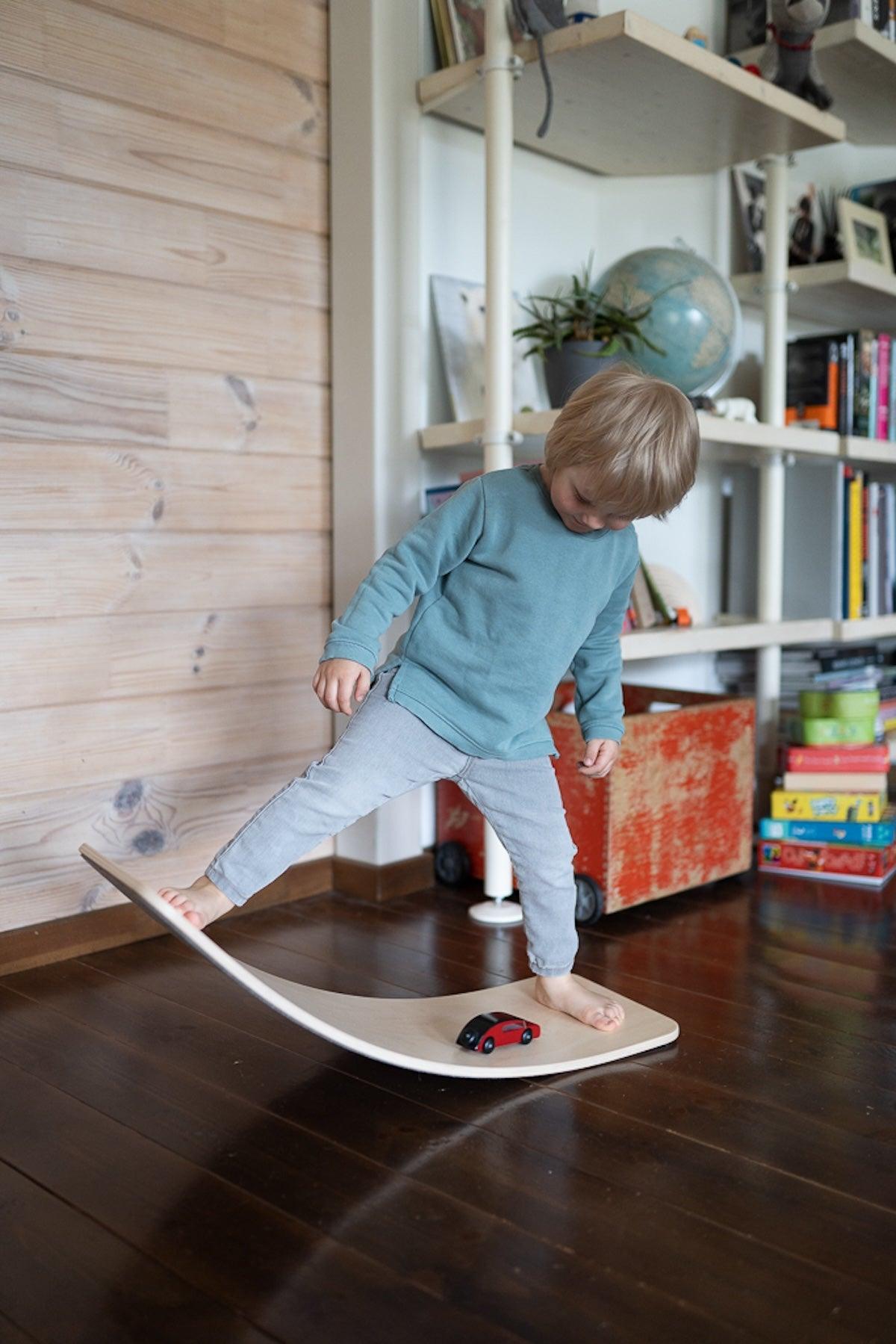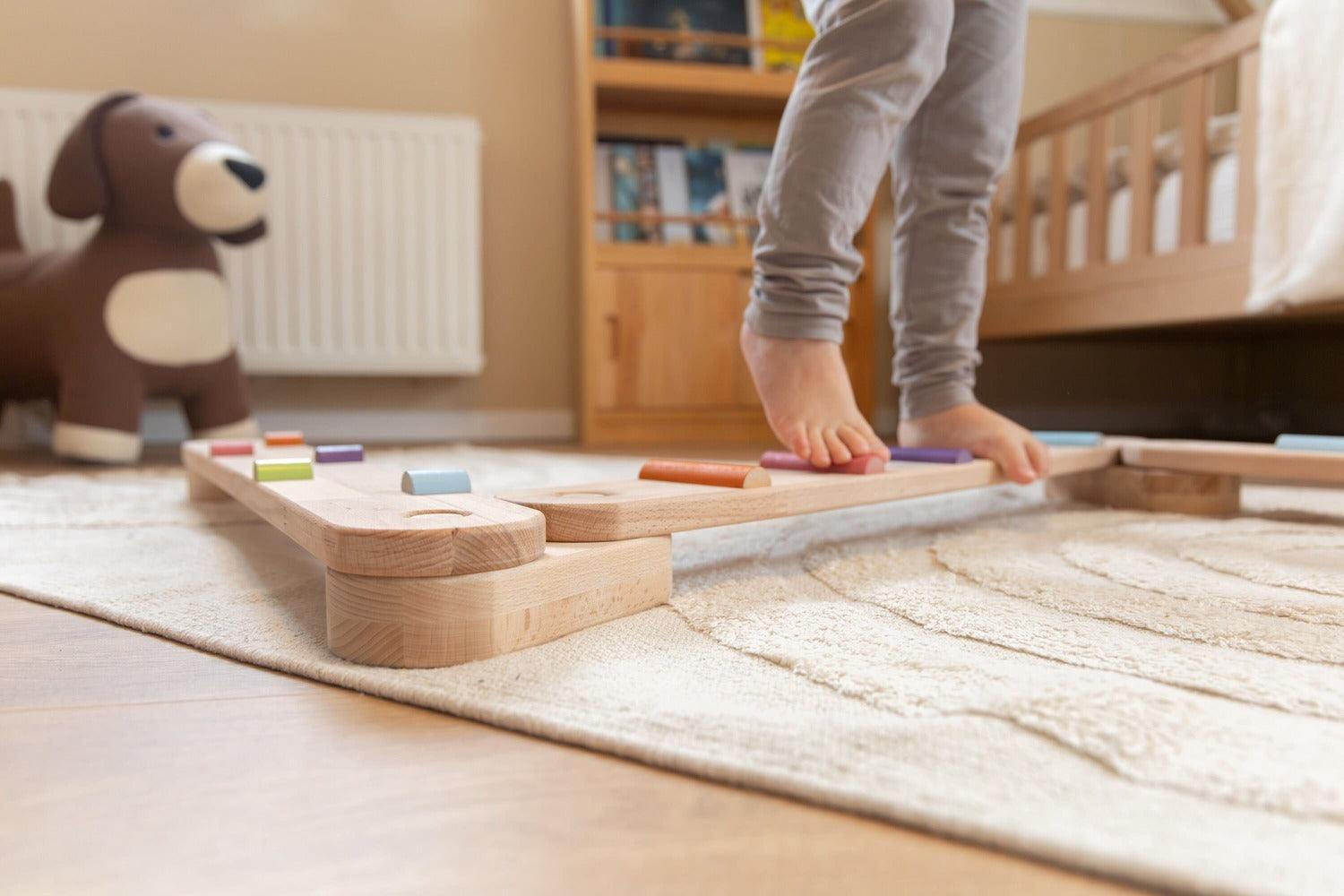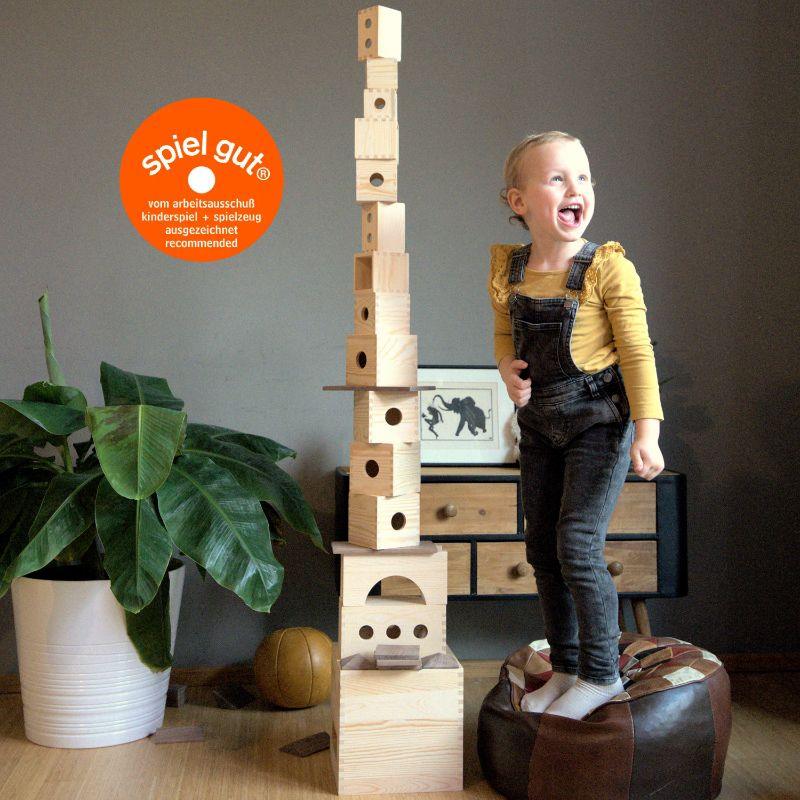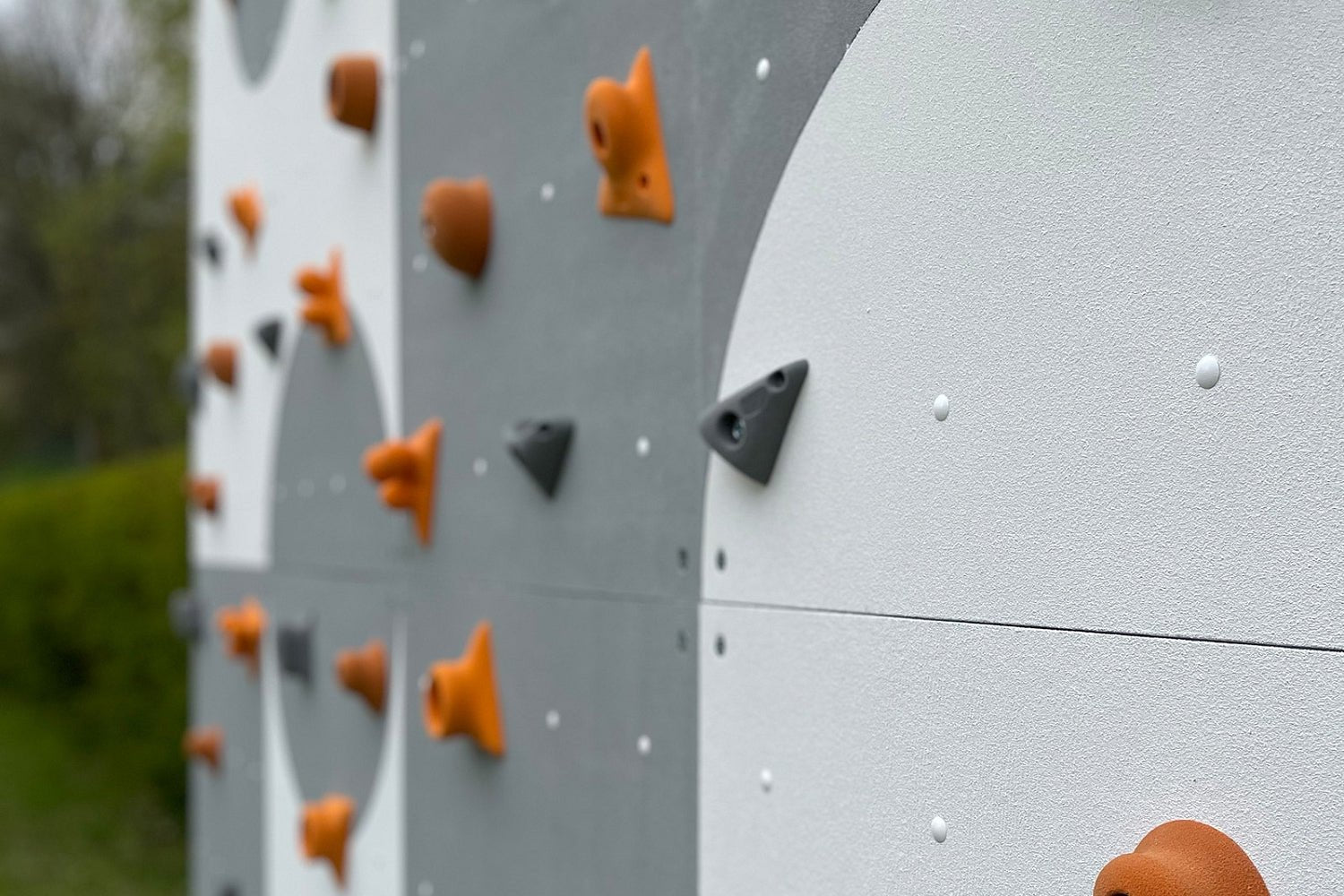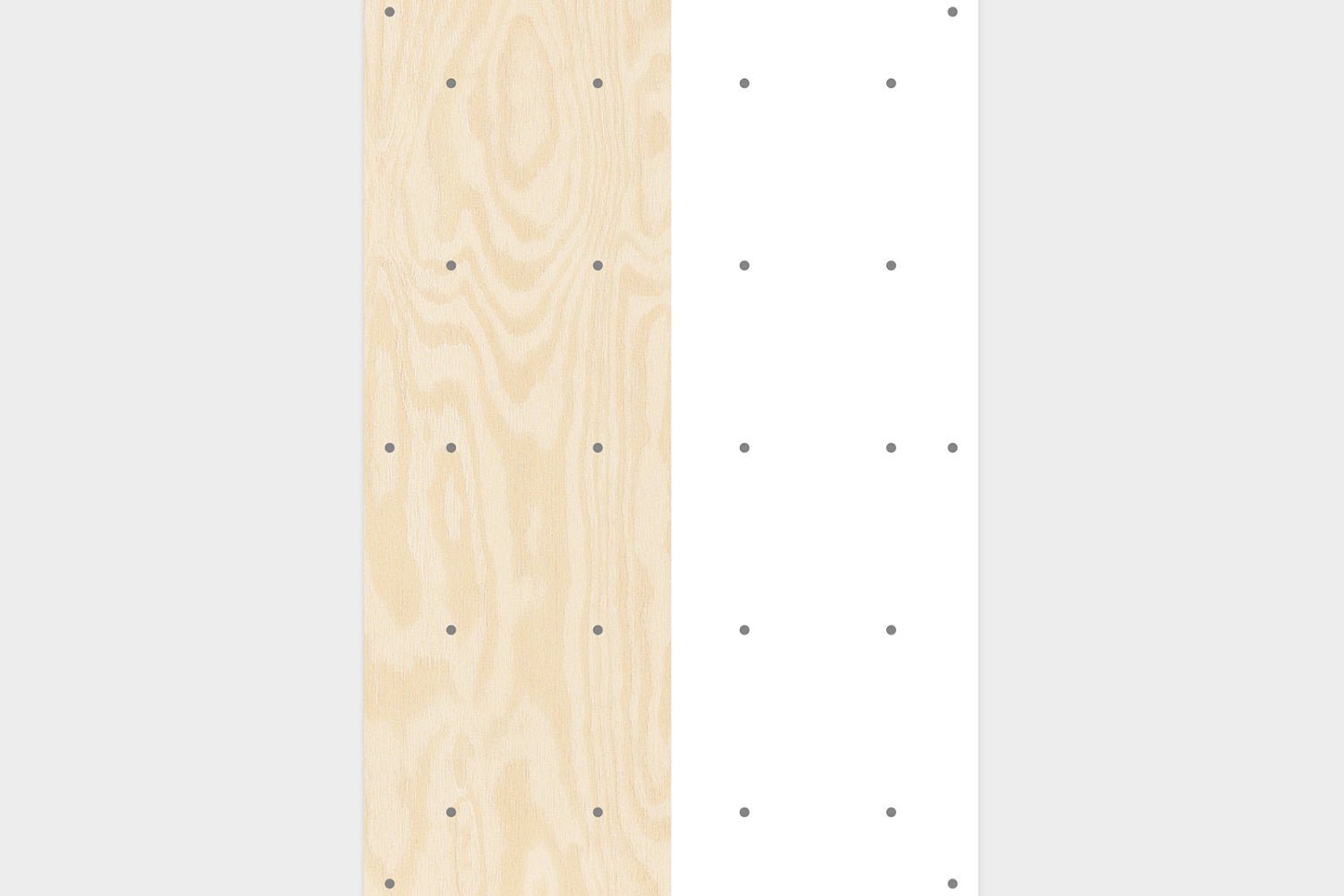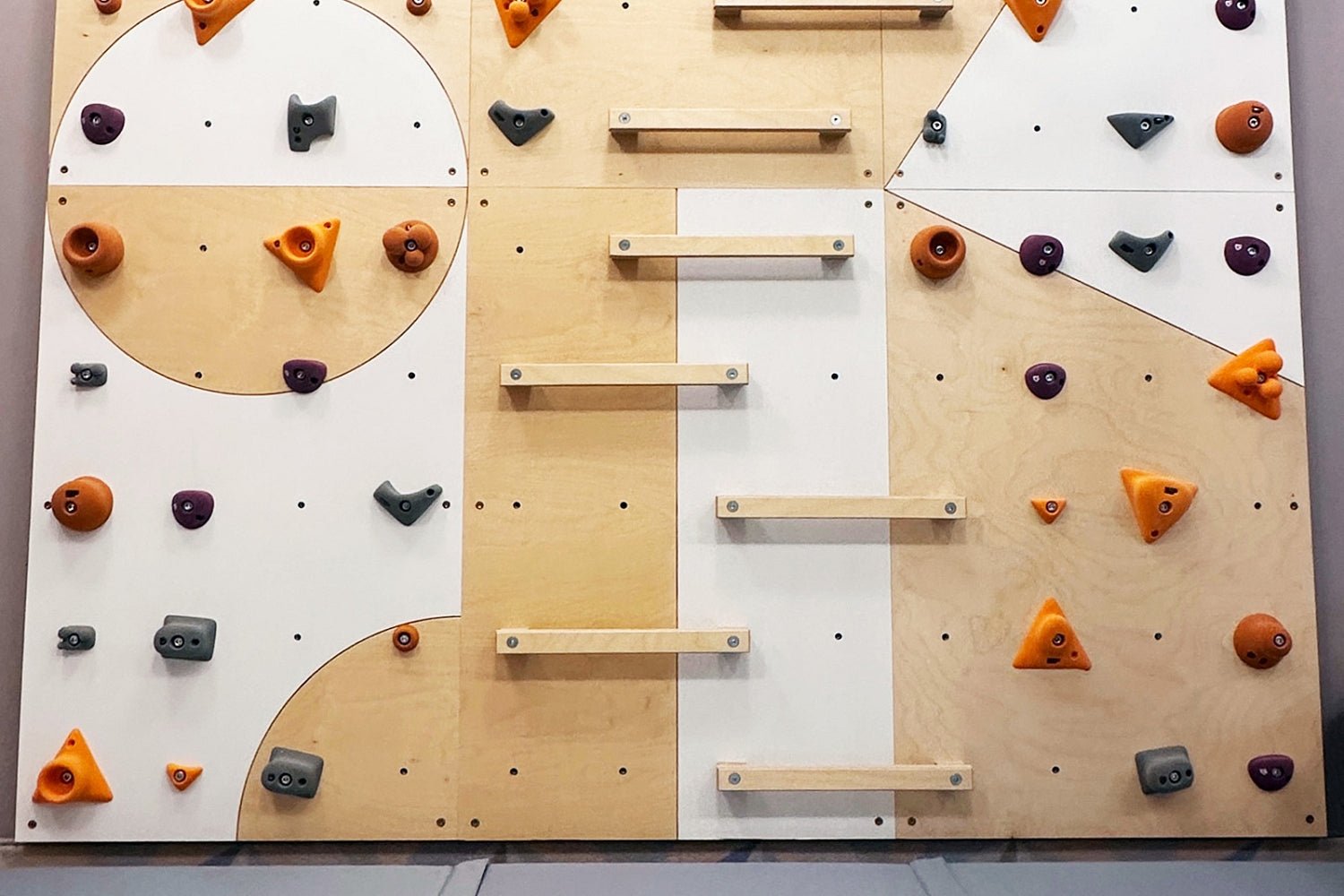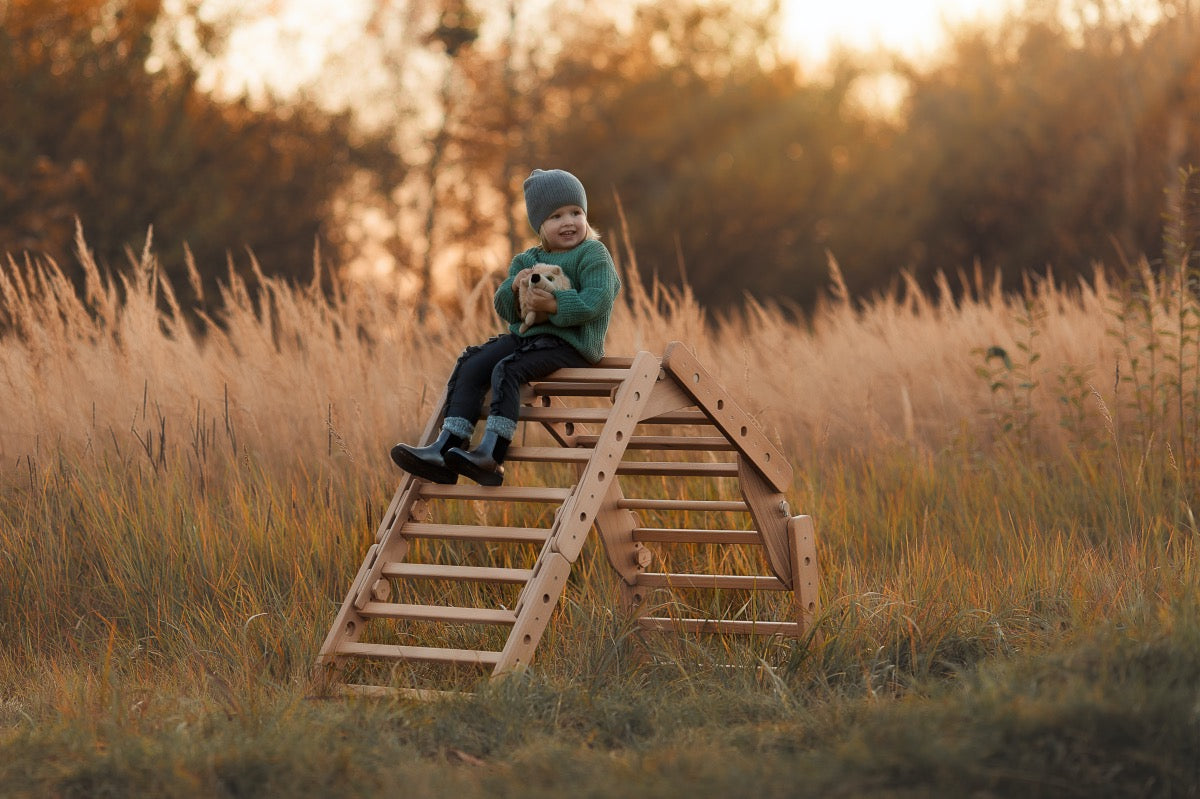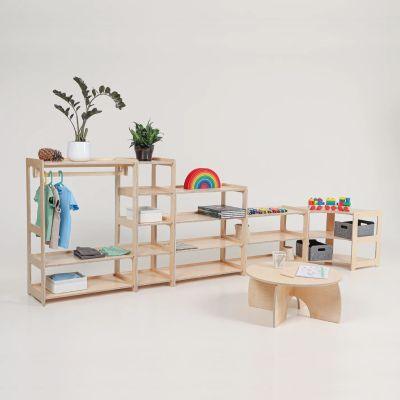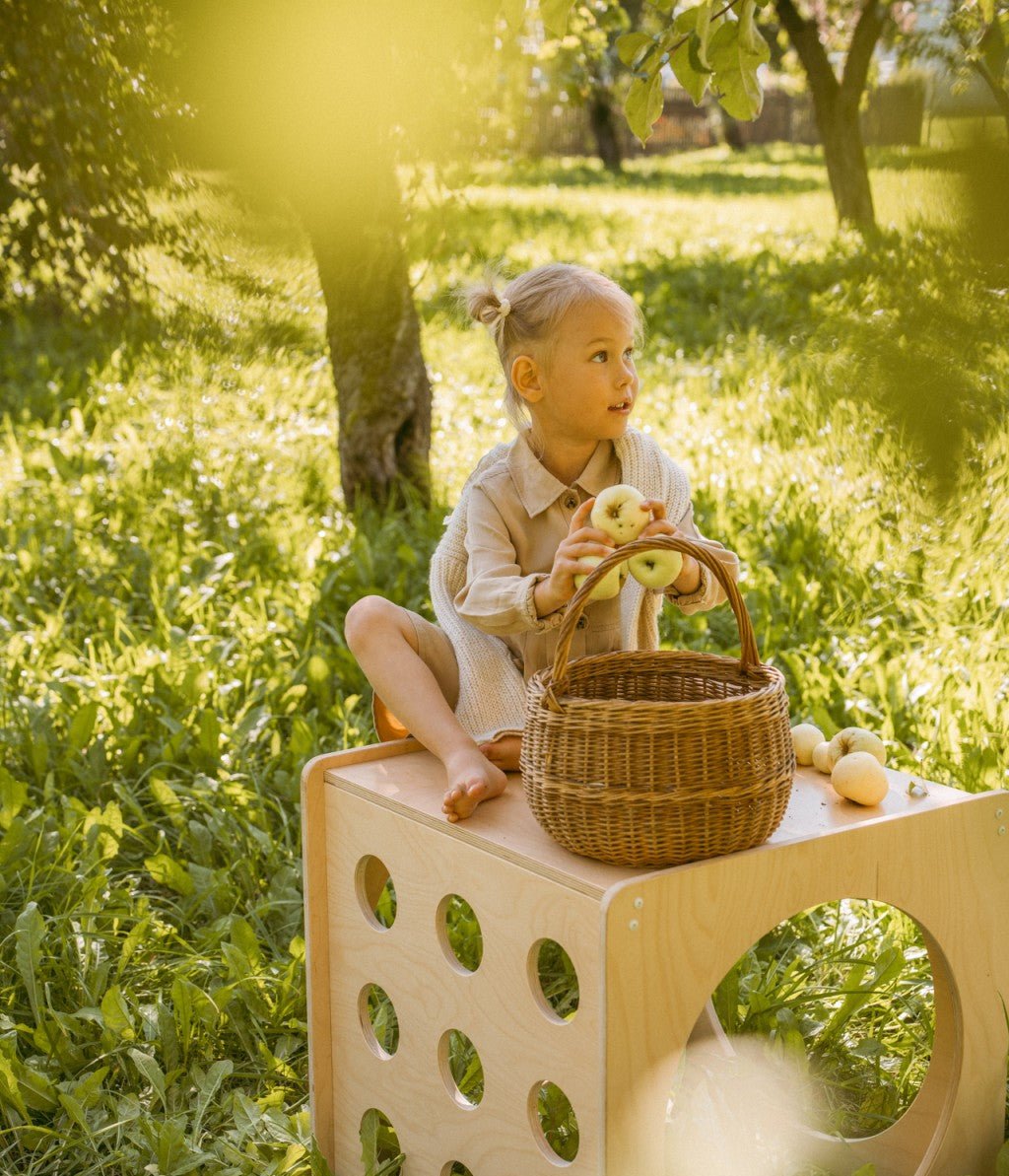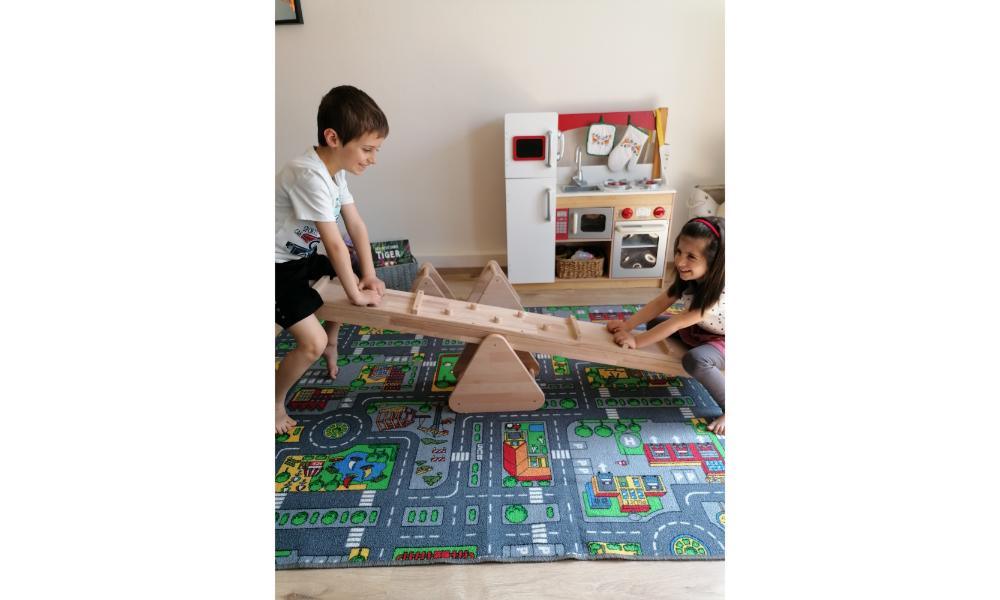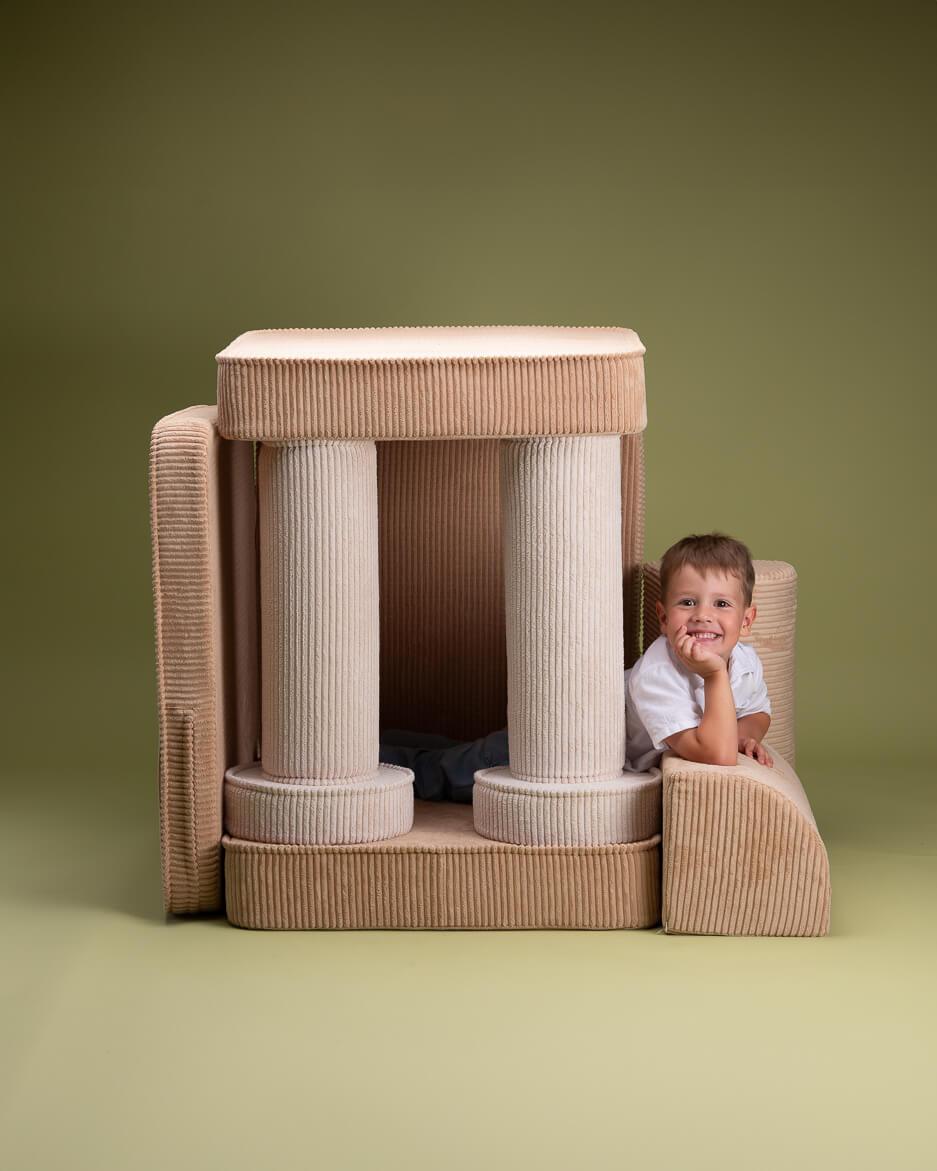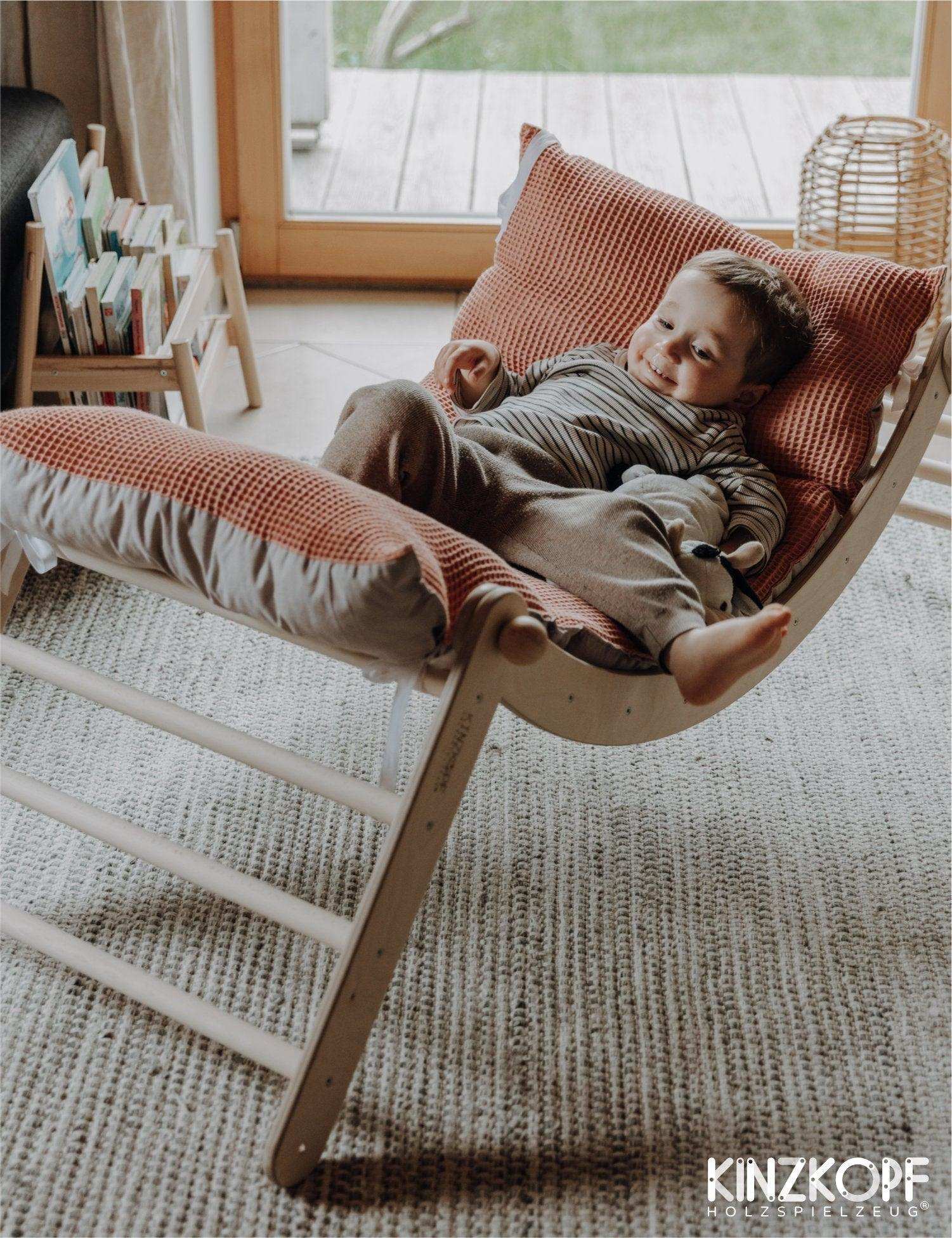Sort by:
36 products
36 products


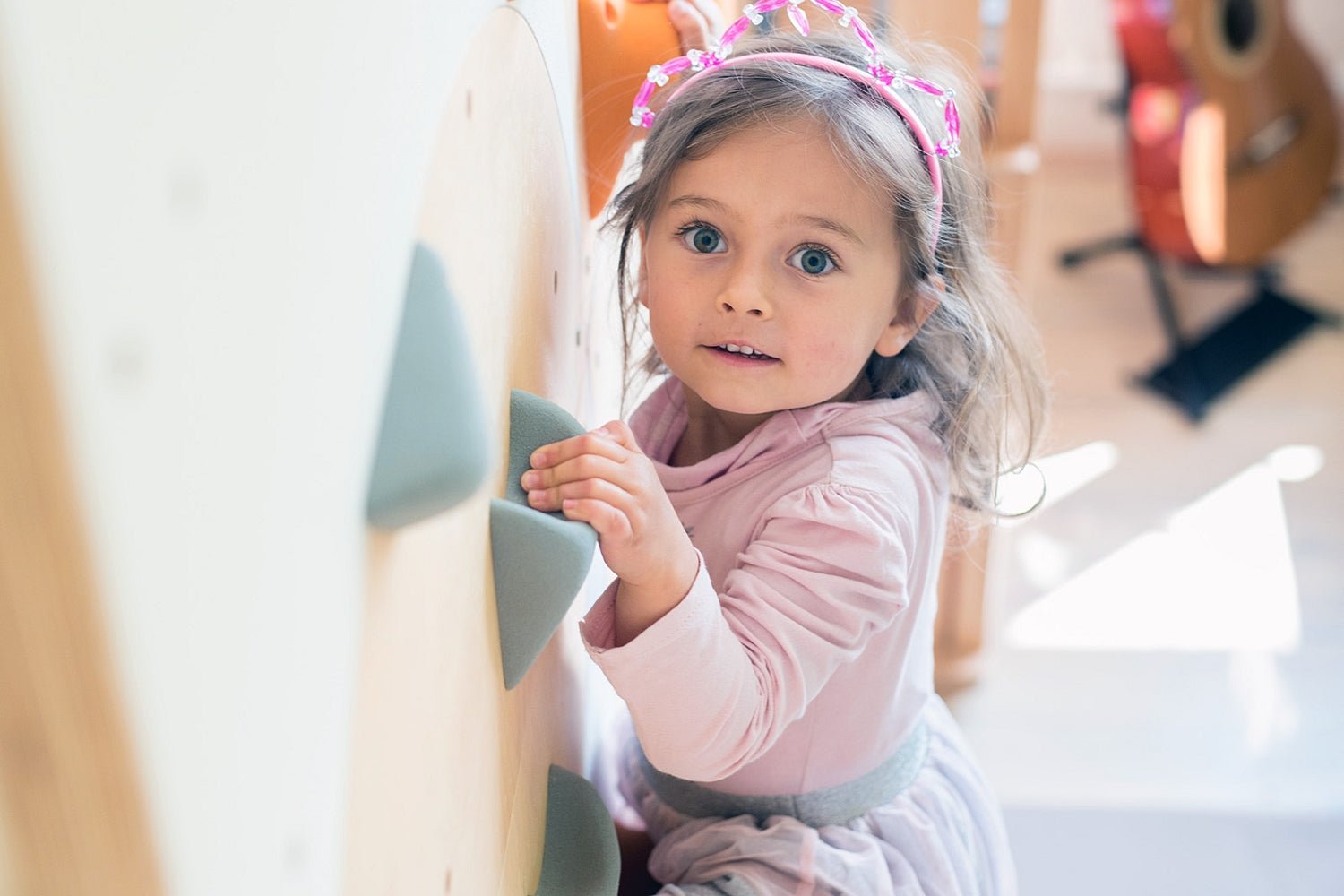
Kletterwand BK INDOOR aus 2 Teilen | 236 x 78 cm | inkl. 15 Griffen | 40 Loch
€439,00
Unit price perKletterwand BK INDOOR aus 2 Teilen | 236 x 78 cm | inkl. 15 Griffen | 40 Loch
€439,00
Unit price perIndoor-Kletterwand für Kinder – erweiterbar, modular, flexibel montierbar und mitwachsend
Diese kompakte Kletterwand ist ideal für kleine Räume – und wächst mit deinem Kind mit. Dank durchdachtem Stecksystem und flexibler Griffpositionierung bleibt das Spiel immer spannend.
Technische Daten:
-
Maße pro Platte: 78 cm × 118 cm × 3,6 cm (inkl. Holzrahmen)
-
Material: 18 mm Birken-Multiplex, Rückseite mit Holzrahmen
-
Bohrungen: 20 Löcher pro Platte für flexible Griffpositionierung
-
Griffe: Set aus 15 Klettergriffen in wählbaren Farbkombinationen (Orange, Blau, Mintgrün/Lila)
-
Montage: geeignet für Wände, Holzunterkonstruktionen und Gipskarton
-
Lieferumfang:
-
2 Kletterplatten
-
15 Klettergriffe in Wunschfarbe
-
Komplettes Montageset für Wand und Griffe
-
Klettern auf kleinem Raum – ganz groß gedacht
Nicht jedes Zuhause bietet Platz für ein komplettes Klettergerüst – aber Bewegung braucht jedes Kind. Die Kletterwand für Kinder wurde genau für diesen Anspruch entwickelt: platzsparend, stabil, erweiterbar und perfekt für kleine Kletterfans.
Zwei Platten – viele Möglichkeiten
Die beiden Kletterplatten aus Birkenholz bilden zusammen eine robuste, optisch ansprechende Kinder-Kletterwand. Durch je 20 vorgebohrte Löcher pro Platte können die 15 enthaltenen Klettergriffe jederzeit neu angeordnet werden – für neue Routen, neue Reize und dauerhaftes Spielvergnügen.
Die Griffe sind in drei Farbkombinationen erhältlich: Orange, Mintgrün/Lila, Blau – passend zum Stil deines Kinderzimmers.
Erweiterbar & langlebig
Die Kletterwand ist modular aufgebaut. Wenn dein Kind wächst, wächst die Wand einfach mit: Zusätzliche Platten und Komponenten aus dem Sortiment lassen sich jederzeit ergänzen – horizontal wie vertikal. So wird aus einer kleinen Indoor-Wand nach und nach ein ganz persönlicher Kletterbereich.
Stabil, sicher und durchdacht
Jede Platte besteht aus 18 mm starkem Birken-Multiplex, verstärkt durch einen rückseitigen Holzrahmen. Die gesamte Tiefe pro Platte beträgt 3,6 cm, was für flaches und platzsparendes Montieren sorgt – ob an einer klassischen Wand, Holzstruktur oder Gipskarton. Das komplette Zubehör zur sicheren Montage ist im Set enthalten.
Das steckt drin:
-
2 kompakte Kletterplatten aus Birke
-
15 farbenfrohe Klettergriffe (Farbe wählbar)
-
40 Bohrungen zur freien Griffplatzierung
-
Komplettes Befestigungsmaterial
-
Wandmontage auf verschiedenen Untergründen möglich
-
Platzsparend, modular und erweiterbar
Fazit
Die Kletterwand ist die perfekte Lösung für Eltern, die ihrem Kind aktiven Spielspaß bieten möchten – auch bei wenig Platz. Hochwertige Materialien, clevere Details und die Möglichkeit zur Erweiterung machen diese Wand zu einem langfristigen Begleiter für Bewegung, Entwicklung und Kletterabenteuer im eigenen Zuhause.
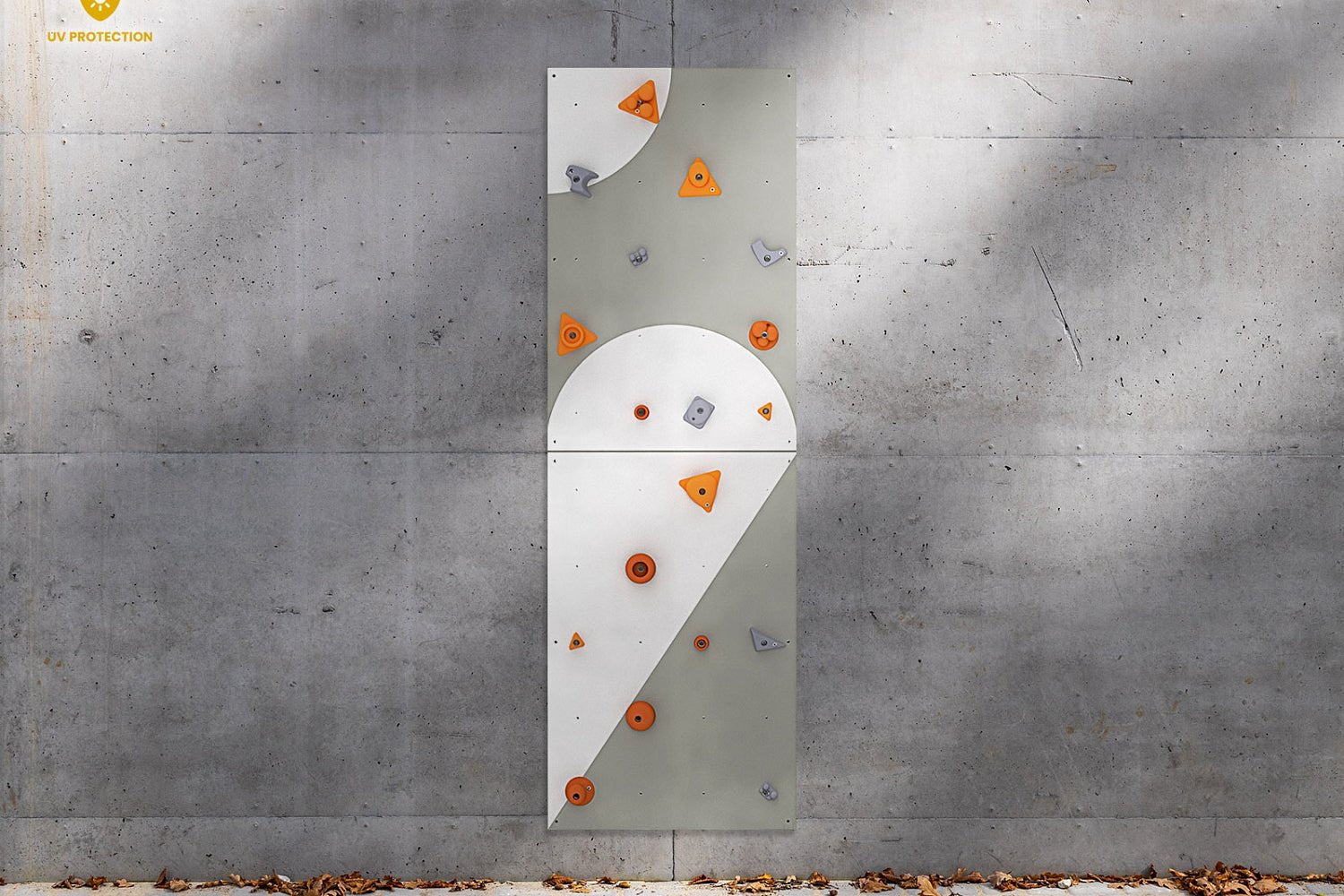

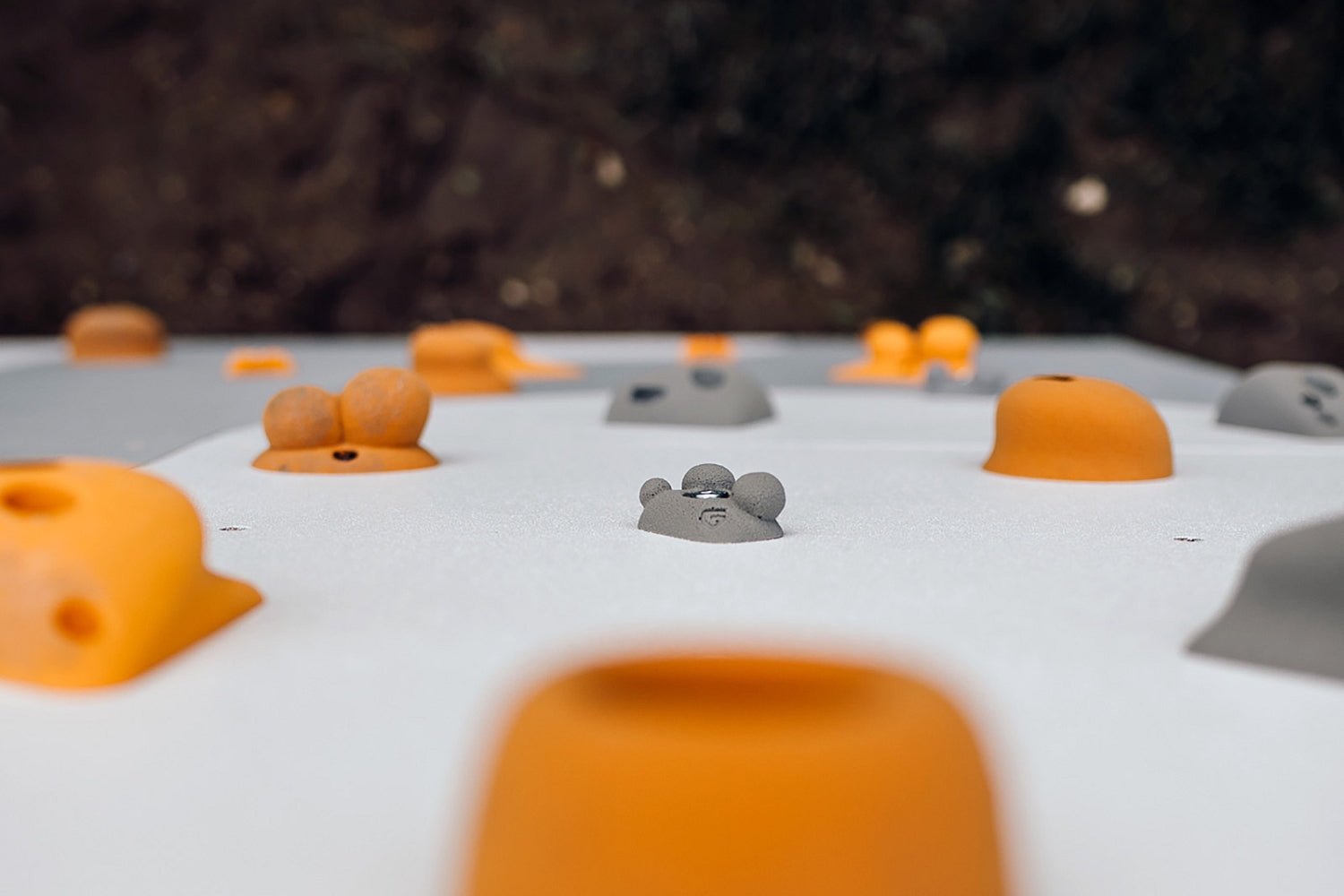
Kletterwand BK OUTDOOR aus 2 Teilen | 236 x 78 cm | inkl. 15 Griffen | 40 Loch
€519,00
Unit price perKletterwand BK OUTDOOR aus 2 Teilen | 236 x 78 cm | inkl. 15 Griffen | 40 Loch
€519,00
Unit price perOutdoor-Kletterwand – 2-teilig, kompakt, wetterfest & erweiterbar – die perfekte Kletterwand für kleine Gärten, Balkone, Terrassen oder Spielhöfe
Für alle, die auch draußen nicht auf Kletterspaß verzichten wollen: Diese kompakte Outdoor-Kletterwand lässt sich flexibel montieren und bei Bedarf modular erweitern – ideal für Kinder, die gerne draußen aktiv sind.
Technische Daten:
• Maße pro Platte: 78 cm × 118 cm × 3,6 cm
• Material: 18 mm wetterfestes Outdoor-Sperrholz
• Bohrungen: 20 Löcher pro Platte (insgesamt 40) zur freien Griffpositionierung
• Griffe: 15 Klettergriffe mit UV-Additiv gegen Ausbleichen (Farbauswahl: Orange, Blau, Minze-Lila)
• Montage: geeignet für Außenwände, Holzstrukturen und wettergeschützte Flächen
• Lieferumfang:
• 2 Outdoor-Kletterplatten
• 15 UV-stabile Klettergriffe in Wunschfarbe
• Komplettes Montageset für Wand und Griffe
Kletterspaß draußen – auf kleinem Raum
Nicht jeder Garten bietet Platz für große Spieltürme – aber diese Outdoor-Kletterwand für Kinder passt fast überall hin. Mit zwei wetterfesten Platten und 15 UV-beständigen Klettergriffen schafft ihr im Handumdrehen einen Kletterbereich auf der Terrasse, an der Hauswand oder an einer Holzunterkonstruktion.
Kompakt, stabil und langlebig
Die zwei Kletterplatten bestehen aus robustem 18 mm Outdoor-Sperrholz und sind mit einem rückseitigen Rahmen verstärkt. Jede Platte ist mit 20 Bohrlöchern ausgestattet, sodass sich die mitgelieferten Griffe immer wieder neu anordnen lassen – für neue Routen, neue Reize und dauerhaftes Spielvergnügen. Die Klettergriffe sind farbecht und UV-stabilisiert – damit sie auch bei Sonne lange schön bleiben.
Einfach montiert – jederzeit erweiterbar
Ob an der Außenwand, im überdachten Bereich oder an einer Holzstruktur: Diese Kletterwand ist in wenigen Schritten montiert und sofort einsatzbereit. Und wenn euer Kind wächst? Kein Problem: Das System ist modular aufgebaut und lässt sich mit weiteren Kletterplatten oder Zubehör jederzeit ergänzen.
TIPP: Wenn ihr ein Outdoor-Klettergerüst habt, können die Kletterplatten auch daran befestigt werden.
Das steckt drin:
• 2 wetterfeste Outdoor-Kletterplatten
• 15 x UV-stabile Klettergriffe in Wunschfarbe
• 40 Löcher zur freien Platzierung
• Vollständiges Befestigungsmaterial
• Zertifiziertes Material – sofort einsatzbereit
• Erweiterbar mit zusätzlichem Zubehör (Platten, Klettergriffe, Holzelemente für gesteigerten Schwierigkeitsgrad)
Fazit
Diese Outdoor-Kletterwand mit zwei Paneelen ist perfekt für alle, die wenig Platz haben, aber großen Wert auf Bewegung und Spiel im Freien legen. Robust, sicher und langlebig – für kleine Abenteurer, die hoch hinaus wollen.
Zertifikate: Zertifizierte Sperrholzplatte und Klettergriffe.
📎 Anleitungen & technische Infos:
• ➤ Anleitung zur Installation der Kinderkletterwand
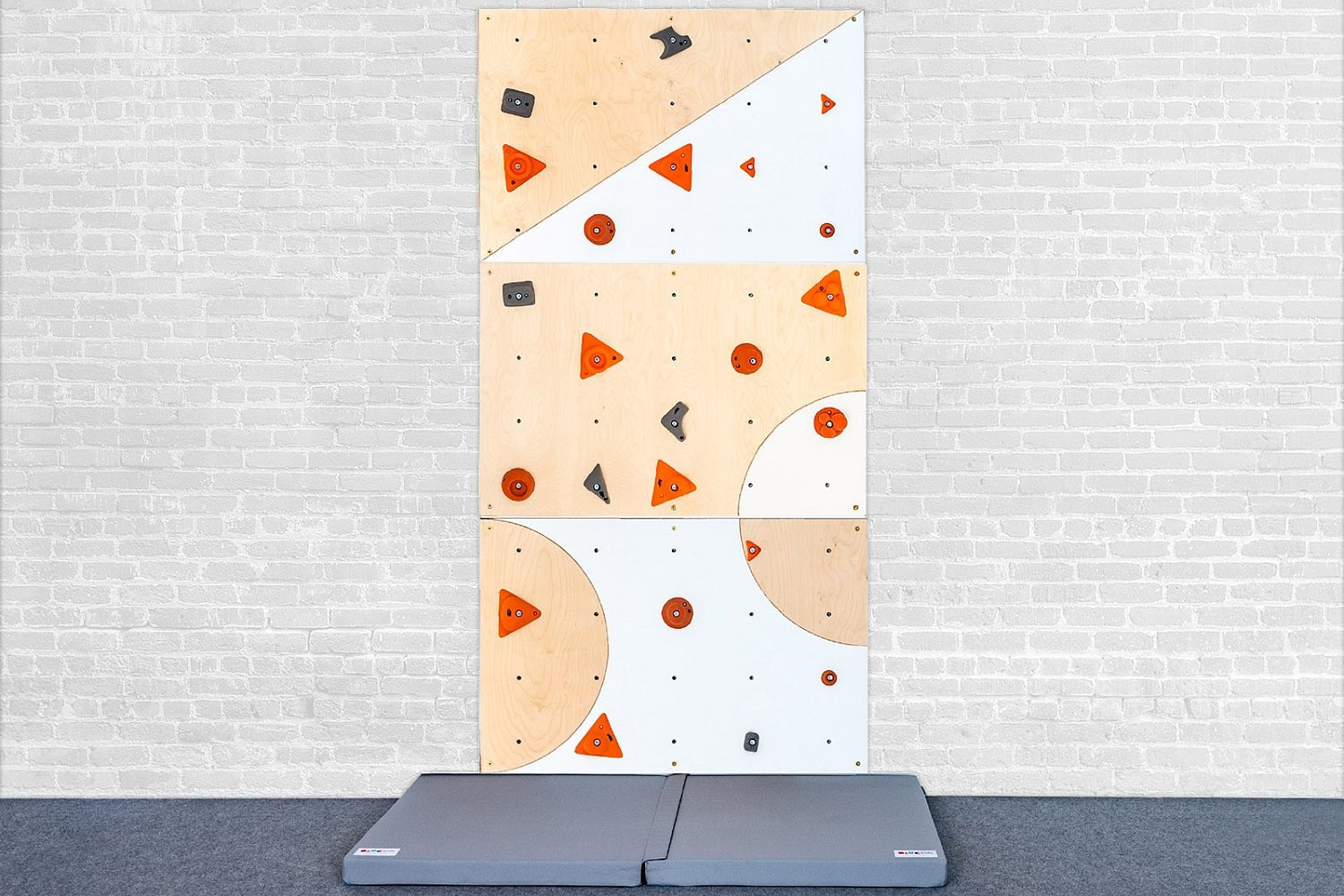
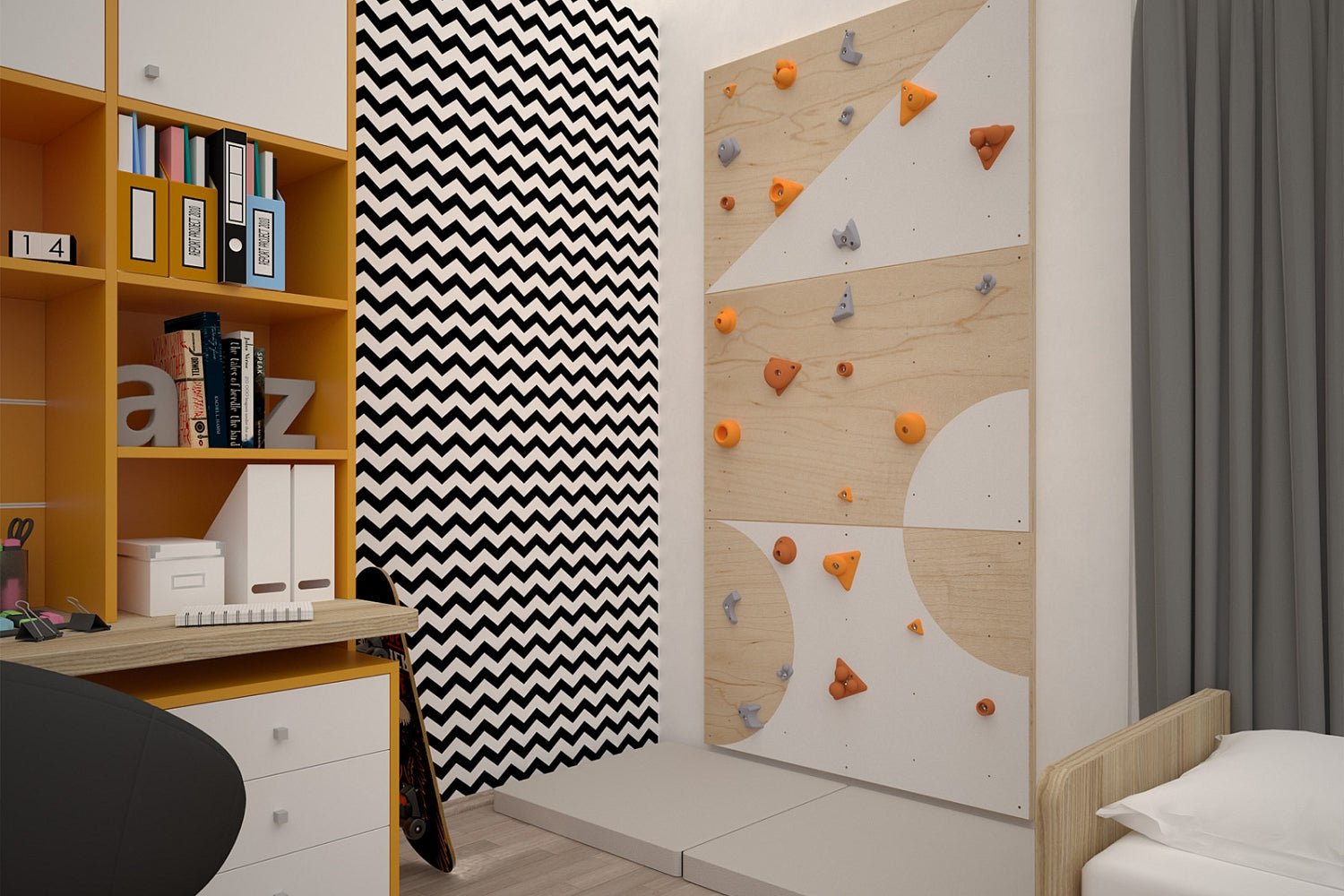
Kletterwand BK INDOOR aus 3 Teilen | 234 cm x 118 cm | inkl. 23 Griffen | 60 Loch
€649,00
Unit price perKletterwand BK INDOOR aus 3 Teilen | 234 cm x 118 cm | inkl. 23 Griffen | 60 Loch
€649,00
Unit price perHorizontale Kletterfläche für kleine Räume – platzsparend, erweiterbar und kindgerecht
Drei Kletterplatten auf einer Ebene – dieselbe Höhe, mehr Breite, weniger Platzbedarf. Diese durchdachte Indoor-Kletterwand bringt Bewegung, Spiel und Herausforderung auch in schmale Räume.
Technische Daten:
-
Maße pro Platte: 118 cm × 78 cm × 3,6 cm (inkl. Holzrahmen)
-
Material: 18 mm Birken-Multiplex mit rückseitigem Holzrahmen
-
Bohrungen: 20 Löcher pro Platte (insgesamt 60) für freie Griffpositionierung
-
Griffe: 23 Klettergriffe in wählbaren Farbkombinationen (Orange, Blau, Mintgrün, Lila)
-
Montage: geeignet für Wände, Holzunterkonstruktionen und Gipskarton
-
Lieferumfang:
-
3 Kletterplatten
-
23 Klettergriffe in Wunschfarbe
-
Komplettes Montageset
-
Kleine Überraschung als Geschenk
-
Die kompakte Kletterfläche für kreative Kinderzimmerlösungen
Klettern macht Kinder stark – körperlich und mental. Die 3-teilige Indoor-Kletterwand ist die ideale Lösung für schmale Räume, in denen trotzdem Raum für Bewegung, Mut und Spiel entstehen soll. Durch die horizontale Anordnung der drei Kletterplatten ergibt sich eine breite Kletterfläche bei gleichbleibender Höhe, perfekt für Kinderzimmer, Flure oder Spielbereiche mit wenig Wandhöhe.
Modular, sicher und dauerhaft anpassbar
Jede der drei Platten besteht aus stabilem Birken-Multiplex, verstärkt durch einen rückseitigen Holzrahmen. Durch die je 20 Bohrungen pro Platte lassen sich die 23 mitgelieferten Klettergriffe immer wieder neu positionieren – für neue Herausforderungen und anhaltende Begeisterung. Die Griffe sind in vier Farben verfügbar: Orange, Blau, Mintgrün und Lila – farbenfroh, aber harmonisch.
Wie bei allen Varianten lässt sich auch diese Kletterwand durch weitere Platten und Zubehör aus der gleichen Serie erweitern – für ein wachsendes Abenteuer mit deinem Kind.
Einfach zu montieren – überall im Innenraum
Die Kletterplatten lassen sich an klassischen Wänden, Holzunterkonstruktionen oder Trockenbauwänden befestigen. Das komplette Montagematerial ist im Set enthalten. Für maximale Sicherheit empfehlen wir zwei passende Sturzmatten – sie bieten Schutz beim Klettern und lassen sich gleichzeitig als Spielunterlage oder Gästebett nutzen.
Das steckt drin:
-
3 stabile Kletterplatten aus Birke
-
23 bunte, frei platzierbare Klettergriffe
-
60 vorgebohrte Löcher für individuelle Gestaltung
-
Komplettes Montagematerial inklusive
-
Platzsparende Wandmontage in horizontaler Ausrichtung
-
Modular erweiterbar mit weiterem Zubehör
-
Bonus: kleine Überraschung im Paket
Fazit
Diese 3-teilige Indoor-Kletterwand ist ideal für alle, die auf wenig Fläche viel Raum für Bewegung schaffen möchten. Robust, sicher und anpassbar – für Kinder, die gern klettern, entdecken und wachsen.
📎 Anleitungen & technische Infos:
➤ Anleitung Kletterwand Montage (PDF)
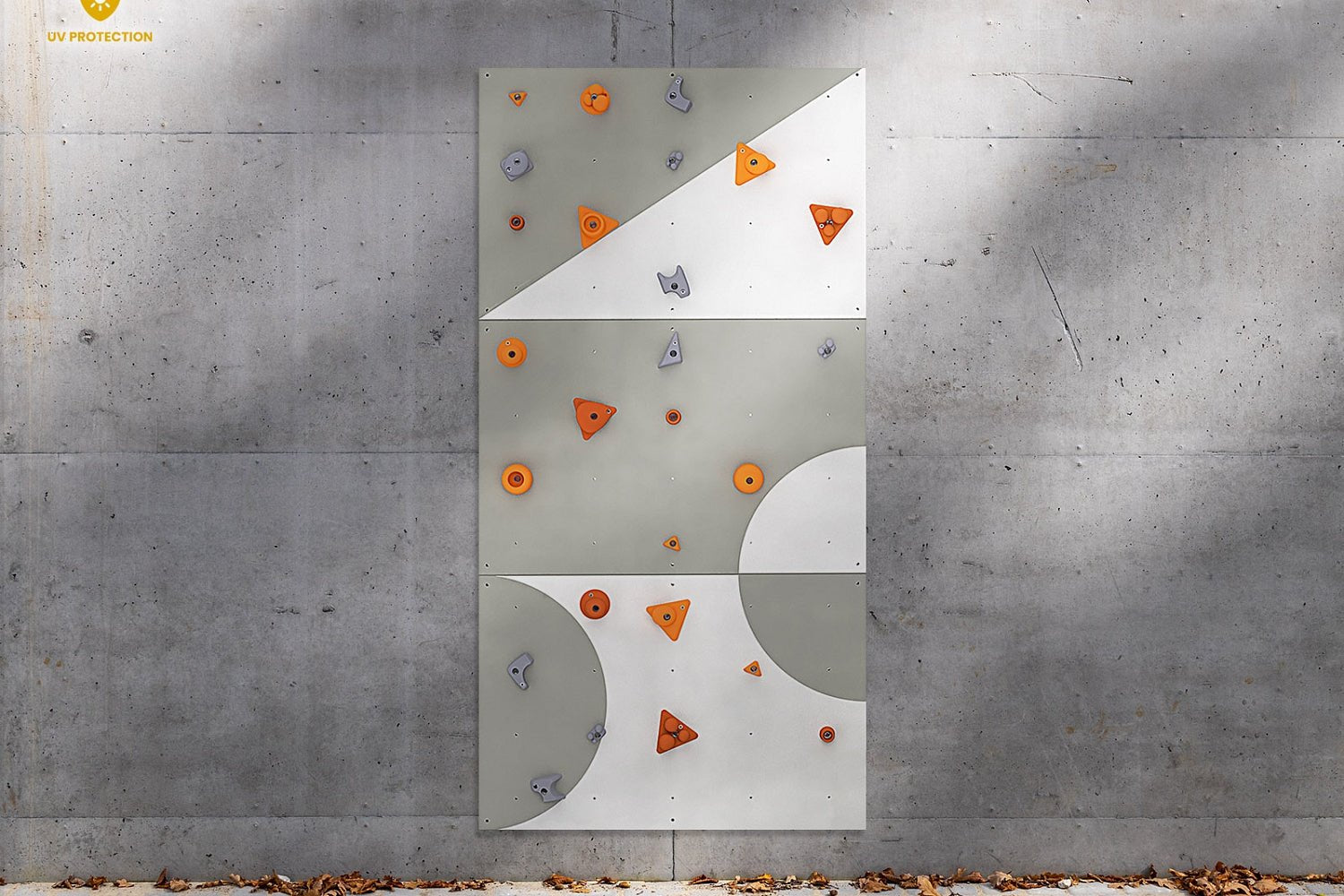
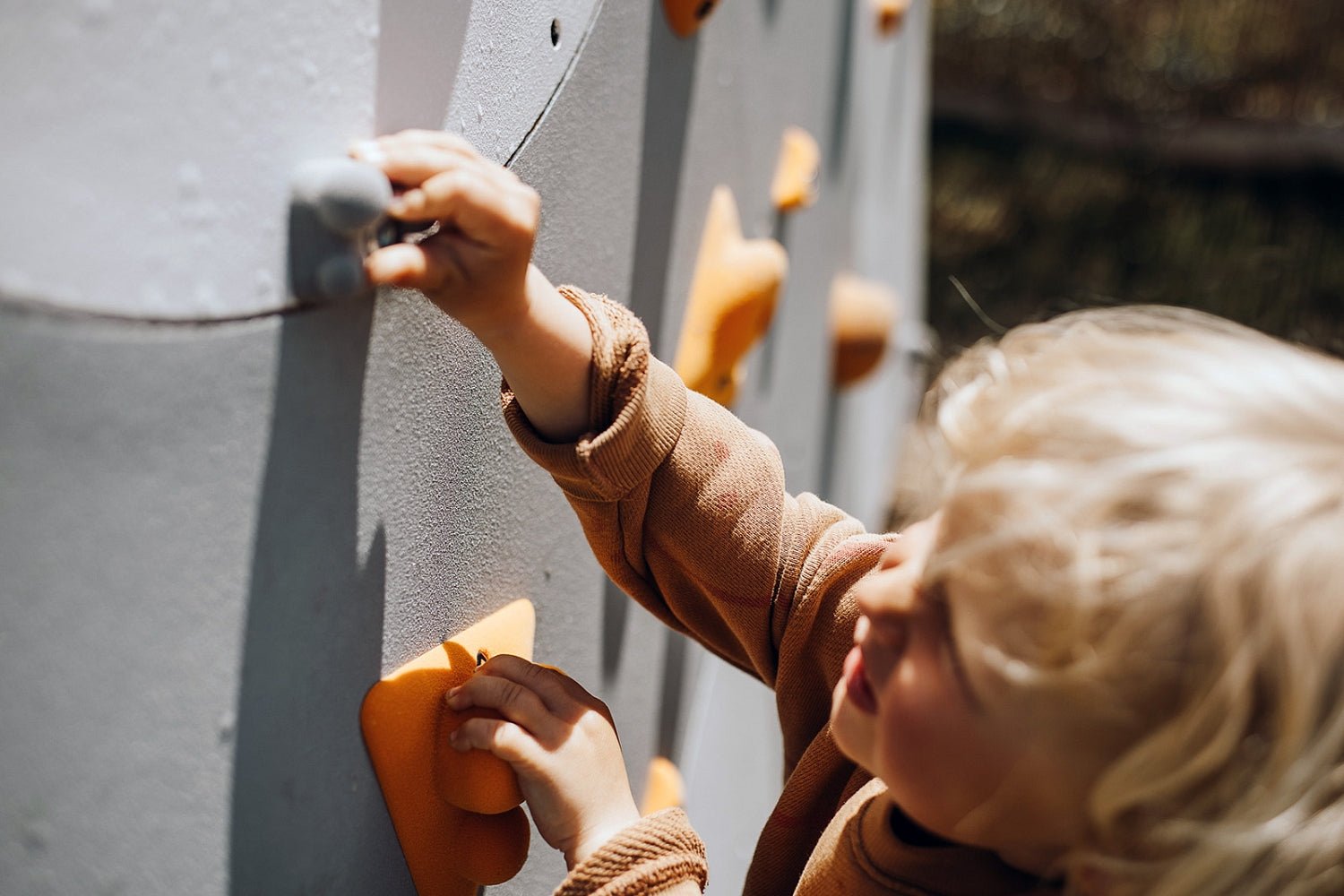
Kletterwand BK OUTDOOR aus 3 Teilen | 234 cm x 118 cm | inkl. 23 Griffen | 60 Loch
€759,00
Unit price perKletterwand BK OUTDOOR aus 3 Teilen | 234 cm x 118 cm | inkl. 23 Griffen | 60 Loch
€759,00
Unit price perWetterfeste Kletterwand für Kinder – 3-teilig Flach, kompakt & flexibel
Diese 3-teilige Outdoor-Kletterwand wird horizontal montiert und bietet trotz geringer Höhe eine breite, herausfordernde Kletterfläche. Die perfekte Lösung für Terrassen, Gartenhäuser oder schmale Außenbereiche.
Technische Daten:
-
Maße pro Platte: 78 cm × 118 cm × 3,6 cm
-
Material: 18 mm wetterfestes Outdoor-Sperrholz
-
Bohrungen: 20 pro Platte (insgesamt 60) zur freien Platzierung der Griffe
-
Griffe: 23 UV-stabile Klettergriffe (Farbauswahl: Orange, Blau, Minze-Lila)
-
Montage: für Wände, Holzstrukturen und geschützte Außenbereiche
Lieferumfang:
-
3 wetterfeste Kletterplatten
-
23 UV-resistente Klettergriffe in Wunschfarbe
-
Komplette Montageausstattung
Diese horizontal ausgerichtete Outdoor-Kletterwand nutzt den vorhandenen Platz optimal aus. Drei stabile Platten schaffen eine durchgehende Kletterfläche in kindgerechter Höhe – ideal für kleine Abenteurer mit großer Entdeckerlust.
Flexibel, sicher und modular erweiterbar
Die Outdoor-Paneele bestehen aus widerstandsfähigem Sperrholz, das speziell für den Einsatz im Freien konzipiert ist. Die 23 mitgelieferten UV-geschützten Griffe können beliebig neu angeordnet werden – so bleibt das Klettern spannend und abwechslungsreich.
Einfache Montage für vielseitige Einsätze
Dank der kompakten Bauweise ist die Wand schnell montiert und kann auf vielen Untergründen befestigt werden. Auch eine Kombination mit anderen Klettermodulen ist jederzeit möglich.
TIPP: Die Kletterwand kann auch an einen Kletterturm im Garten befestigt werden.
Enthalten:
-
3 wetterfeste Kletterplatten mit 60 Grifflöchern
-
23 UV-beständige Klettergriffe in Wunschfarbe
-
Vollständiges Montageset für Platten & Griffe
-
Erweiterbar mit Zubehör oder weiteren Platten
Zertifizierung: Zertifizierte Sperrholzplatten und Klettergriffe.
📎 Anleitungen & technische Infos:
➔ Anleitung zur Installation der Kinderkletterwand
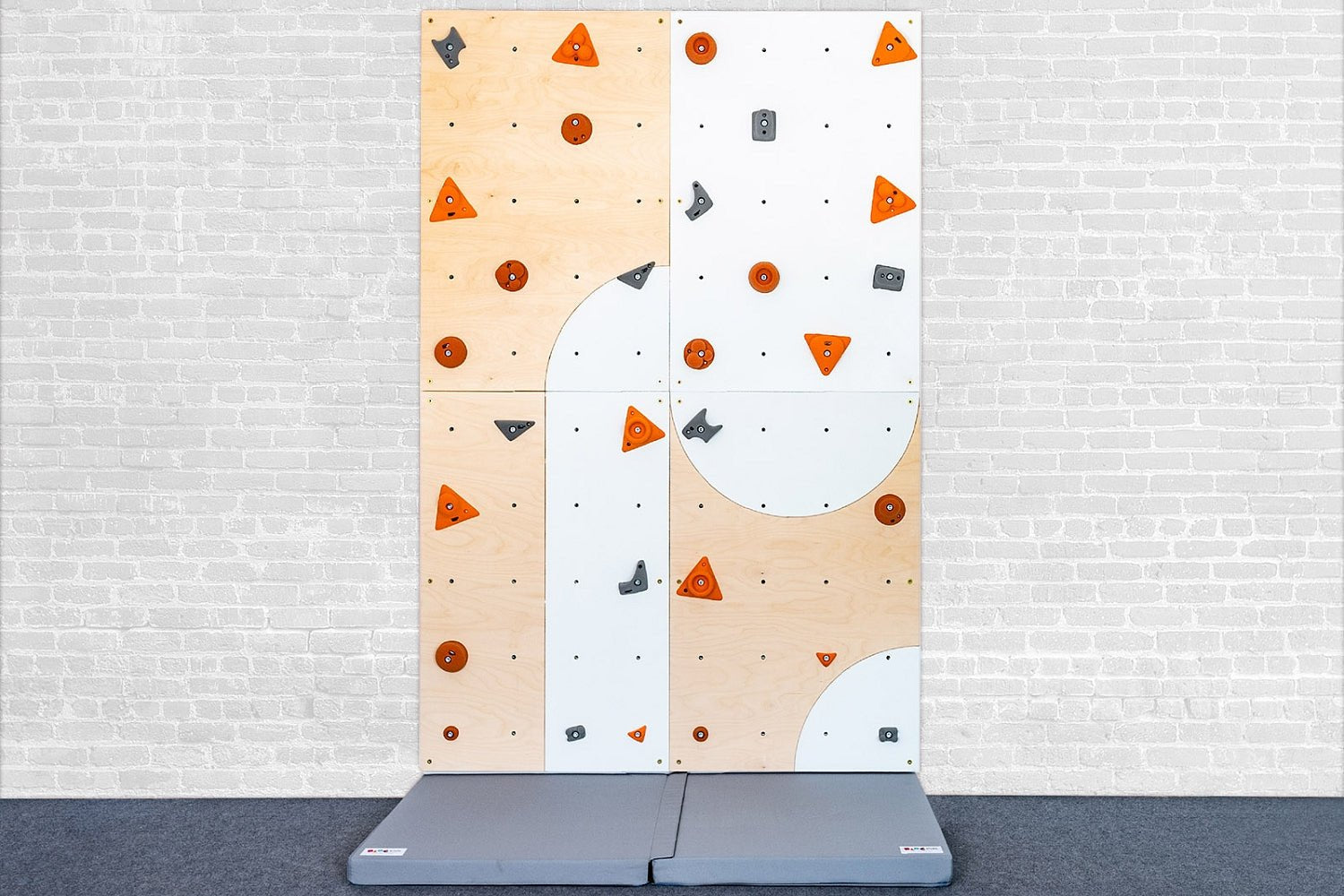
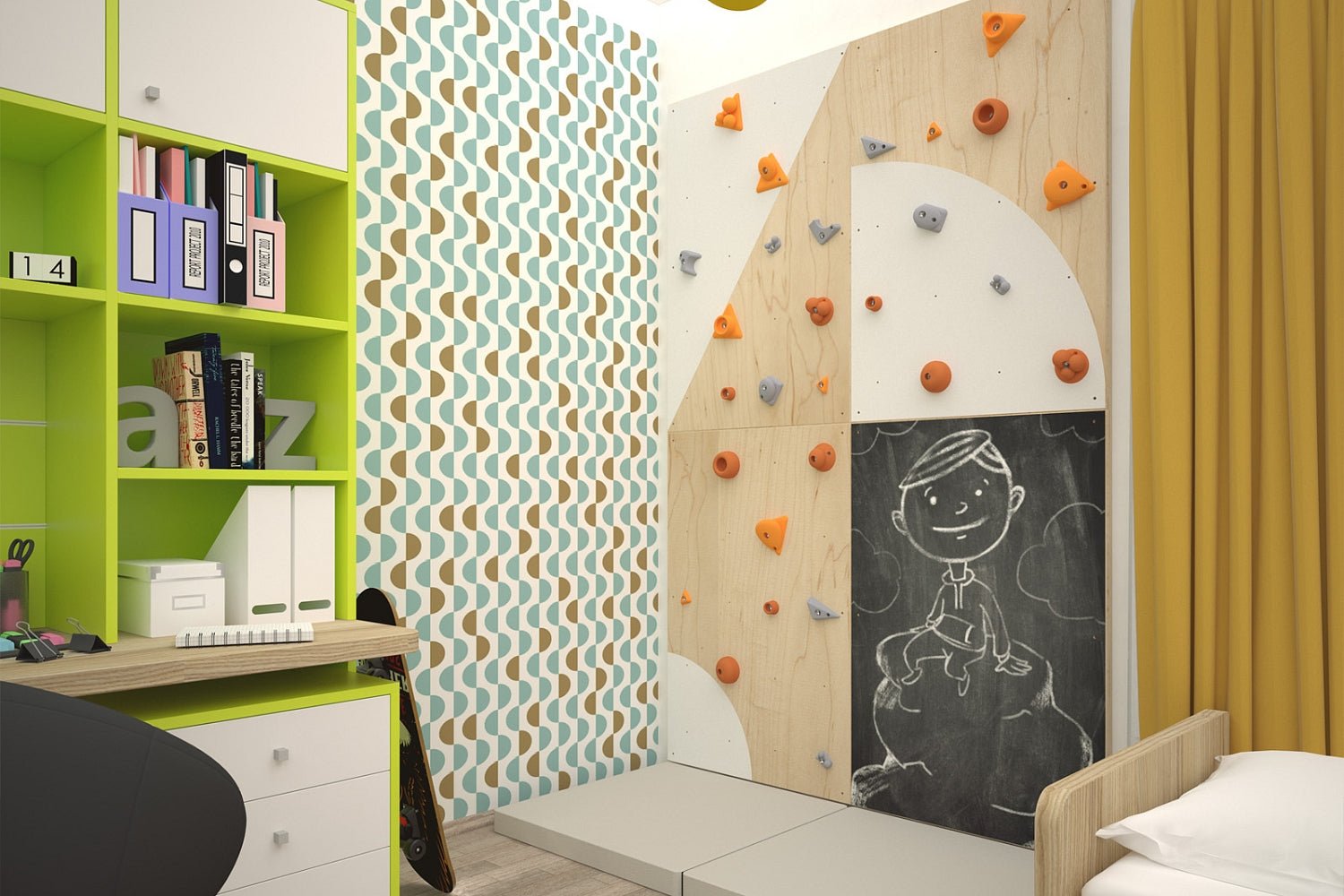
Kletterwand BK INDOOR aus 4 Teilen | 236 cm x 156 cm | inkl. 30 Griffen | 80 Loch
€849,00
Unit price perKletterwand BK INDOOR aus 4 Teilen | 236 cm x 156 cm | inkl. 30 Griffen | 80 Loch
€849,00
Unit price perNoch mehr Kletterfläche für drinnen – erweiterbar, sicher und voller Bewegungspotenzial
Diese vier stabilen Kletterplatten schaffen einen vielseitigen Spielbereich an der Wand – für Kinder, die gern klettern, sich austoben und dabei ganz nebenbei Kraft, Koordination und Selbstvertrauen entwickeln.
Technische Daten:
-
Maße pro Platte: 78 cm × 118 cm × 3,6 cm (inkl. Holzrahmen)
-
Material: 18 mm Birken-Multiplex mit rückseitigem Holzrahmen
-
Bohrungen: 20 Löcher pro Platte (insgesamt 80) zur freien Griffpositionierung
-
Griffe: 30 Klettergriffe in wählbaren Farbkombinationen (Orange, Blau, Mintgrün/ Lila)
-
Montage: geeignet für Wände, Holzunterkonstruktionen und Gipskarton
-
Lieferumfang:
-
4 Kletterplatten
-
30 Klettergriffe in Wunschfarbe
-
Komplettes Montageset für Platten & Griffe
-
Raum für Bewegung – direkt an deiner Wand
Je größer die Fläche, desto größer das Kletterabenteuer: Die 4-teilige Indoor-Kletterwand bietet eine breite, modulare Kletterfläche für Kinder, die sich bewegen, probieren und wachsen wollen. Ob im Spielzimmer, an der Wohnzimmerwand oder im Flur – diese Kletterlösung passt sich dem Alltag an und wird schnell zum Mittelpunkt aktiver Kindheit.
Mehr Fläche, mehr Möglichkeiten
Die vier Kletterplatten aus hochwertigem Birkenholz bieten zusammen 80 Bohrungen für die 30 farbenfrohen Klettergriffe. Diese lassen sich jederzeit neu anordnen, sodass immer neue Routen, Schwierigkeitsgrade und Spielideen entstehen. Durch die modulare Bauweise kann die Wand auch mit optionalen Holzelementen ergänzt werden – zum Beispiel für Überhänge oder seitliche Griffe, die noch mehr Abwechslung bringen.
Die Griffe sind in vier stimmigen Farbkombinationen erhältlich: Orange, Blau, Mintgrün und Lila – passend für moderne Kinderzimmer.
Stabil, sicher und wandfreundlich
Jede Platte ist aus 18 mm starkem Birken-Multiplex gefertigt und mit einem stabilisierenden Holzrahmen versehen. Die Tiefe bleibt mit nur 3,6 cm schlank, sodass sich die Wand auch in kleineren Räumen flach montieren lässt – an Mauerwerk, Holz oder Gipskarton. Das komplette Montagematerial ist im Set enthalten.
Das steckt drin:
-
4 Kletterplatten mit 80 Grifflöchern
-
30 Klettergriffe in Wunschfarbe
-
Frei kombinierbar & jederzeit umbaubar
-
Montage an verschiedenen Untergründen möglich
-
Optional erweiterbar mit weiteren Klettermodulen
-
Stabile, splitterfreie Holzkonstruktion für den Innenbereich
Fazit
Diese große Kletterwand für Kinder bietet viel Fläche, viel Freiheit und viel Bewegung – genau das Richtige für Familien, die ihrem Kind Raum zum Wachsen schenken wollen. Sicher, modular, erweiterbar – und so kompakt wie nötig.
📎 Anleitungen & technische Infos:
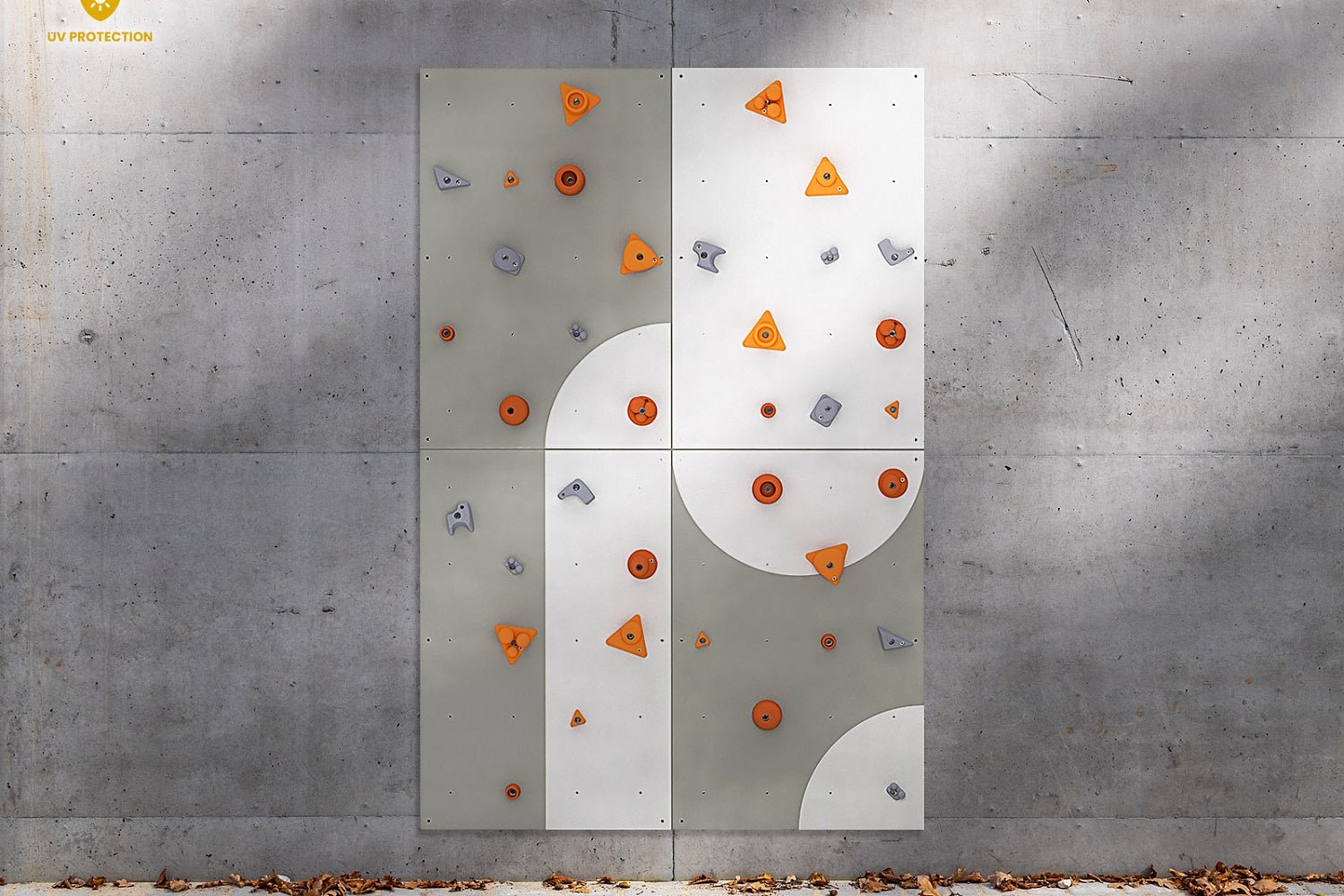
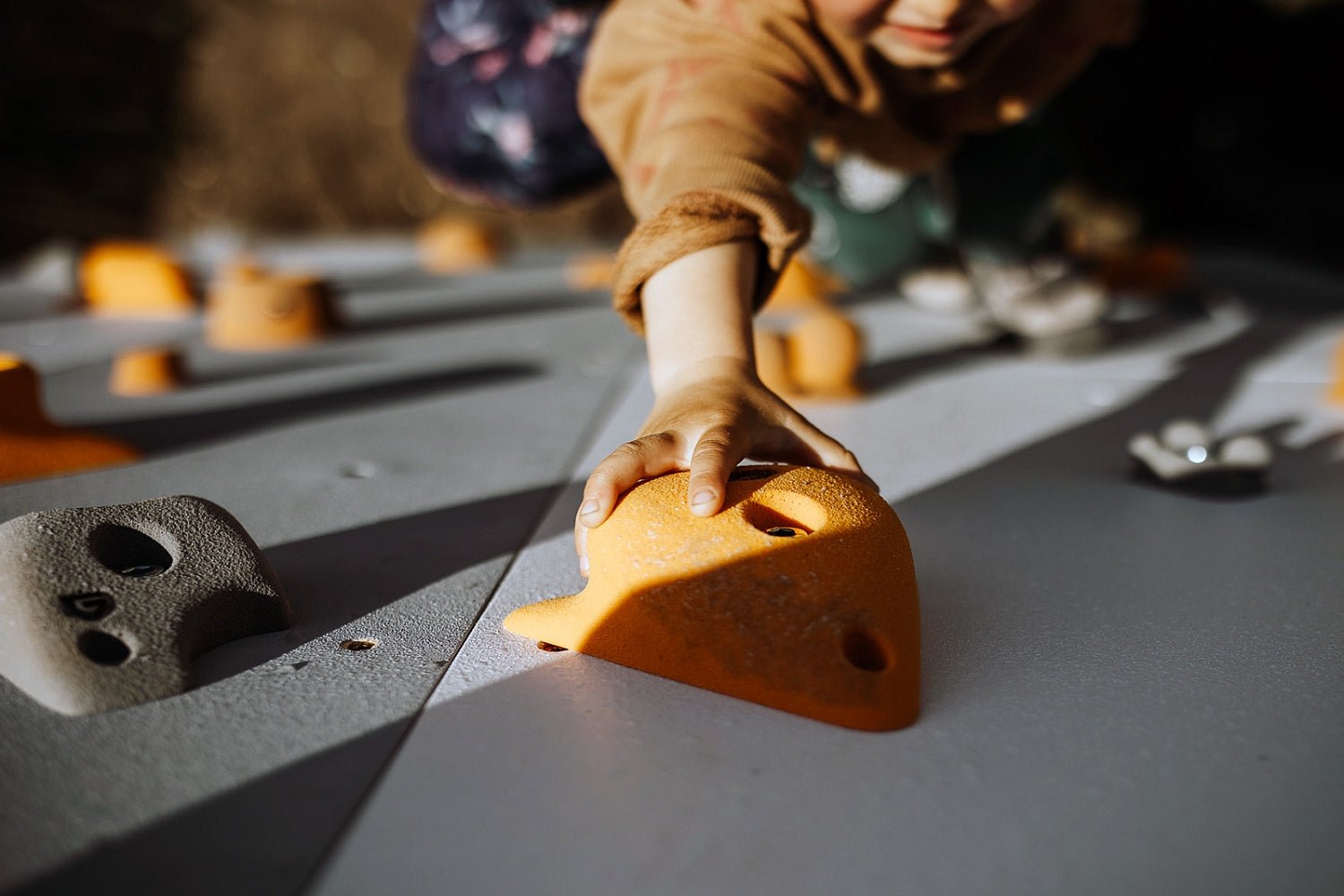
Kletterwand BK OUTDOOR aus 4 Teilen | 236 cm x 156 cm | inkl. 30 Griffen | 80 Loch
€999,00
Unit price perKletterwand BK OUTDOOR aus 4 Teilen | 236 cm x 156 cm | inkl. 30 Griffen | 80 Loch
€999,00
Unit price perWetterfeste, erweiterbare Kletterwand für Kinder – 4-teilig
- Große Outdoor-Kletterfläche – für aktives Spielen mit viel Platz
Diese 4-teilige Kletterwand bietet besonders viel Raum für Bewegung und Kreativität. Die wetterfesten Outdoor-Paneele lassen sich vielseitig montieren und laden Kinder zum freien Klettern, Entdecken und Austoben ein.
Technische Daten:
-
Maße pro Platte: 78 cm × 118 cm × 3,6 cm
-
Material: 18 mm wetterfestes Outdoor-Sperrholz
-
Bohrungen: 20 pro Platte (insgesamt 80) zur freien Griffpositionierung
-
Griffe: 30 UV-stabile Klettergriffe (Farbauswahl: Orange, Blau, Minze-Lila)
-
Montage: für Wände, Holzunterkonstruktionen und jegliche Außenbereiche.
- TIPP: kann auch an einem Kletterturm befestigt werden
Lieferumfang:
-
4 wetterfeste Kletterplatten
-
30 UV-beständige Klettergriffe in Wunschfarbe
-
Komplettes Befestigungsset für Wand & Griffe
Noch mehr Kletterspaß im eigenen Garten
Mit vier robusten Platten bietet diese Kletterwand eine große, zusammenhängende Spielfläche für Kinder, die gerne ihre Grenzen austesten. Ob an der Hauswand, am Gartenhaus oder in Kombination mit anderen Outdoor-Spielgeräten – hier ist Platz für echte Abenteuer.
Vielseitig, sicher und jederzeit veränderbar
Die UV-stabilisierten Griffe lassen sich beliebig an den 80 Bohrungen anbringen und jederzeit neu arrangieren. So bleibt das Klettererlebnis spannend und kann mit dem Können der Kinder wachsen. Die wetterfesten Sperrholzplatten sind langlebig und für den dauerhaften Einsatz im Freien konzipiert.
Erweiterbar & kombinierbar
Die Kletterwand kann mit weiteren Platten, Klettergriffen oder Holzelementen individuell ergänzt werden. Auch bestehende Klettergerüste lassen sich problemlos damit ausstatten.
Enthalten:
-
4 Outdoor-Kletterplatten mit je 20 Bohrungen
-
30 UV-beständige Klettergriffe (Farbauswahl bei Bestellung)
-
Vollständiges Montageset für Wand und Griffe
Zertifizierung: Sperrholzplatten und Klettergriffe sind einzeln zertifiziert und sofort einsatzbereit.
📎 Anleitungen & technische Infos:


Fallschutzmatte BK PADDY INDOOR | 1 - 4 Teile | ab 78 x 78 cm | erweiterbar | Zubehör BK Kletterwände
€109,00
Unit price perFallschutzmatte BK PADDY INDOOR | 1 - 4 Teile | ab 78 x 78 cm | erweiterbar | Zubehör BK Kletterwände
€109,00
Unit price perFallschutzmatte für Kinder – 1 - 4 Teile - erweiterbar.
Die perfekte Ergänzung für Kletterwände & Spielecken – weich, sicher, flexibel einsetzbar
Diese Sturzmatte wurde speziell für die BK Kletterwände entwickelt und bietet optimalen Fallschutz auf kleinem Raum. 1 Matte passt exakt unter eine BK Kletterwand-Platte und lässt sich beliebig durch den festen Klettverschluss erweitern oder stapeln.
Technische Daten:
-
Maße einer Matte: 780 x 780 x 70 mm
-
Material (Oberfläche): Schmutz- und staubabweisender Stoff (waschbar)
-
Material (Unterseite): Rutschfester Stoff
-
Füllung: Polyurethan-Recycling-Schaum (herausnehmbar)
-
Zertifiziert nach EN 1177 (Stoßprüfung)
-
Verbindung: Doppelseitiger Klettverschluss zur Fixierung oder Stapelung
Lieferumfang je nach Variante:
-
1 - 4 x PADDY Fallschutzmatte mit Anti-Rutsch-Unterseite und Klettverbindung
Diese 7 cm starke Fallschutzmatte ist das meist empfohlene Zubehör zu unseren Kletterwänden. Ob als Sturzfläche, Sportmatte, Sitzkissen oder sogar als Gästebett für kleine Freunde: Die PADDY-Matte ist ein echtes Allroundtalent im Alltag für Kinder.
Praktisch im Alltag & einfach zu reinigen
Der robuste Bezug kann mit einem feuchten Tuch abgewischt oder bei Bedarf bei 30 Grad gewaschen werden. Dank Reißverschluss kann die Füllung entfernt werden. Die Antirutsch-Unterseite sorgt für Stabilität, selbst auf glatten Böden.
Kombinierbar & stapelbar
Die Matten können durch den Klettverschluss sicher verbunden werden – nebeneinander als große Spielfläche oder übereinander für erhöhten Schutz. Die exakten Maße passen perfekt unter eine einzelne Kletterwandplatte INDOOR.
Eigenschaften:
-
1 - 4 zertifizierte Fallschutzmatte (1 Matte: 78 x 78 x 7 cm) je nach gewählte Variante (1 Matte, 2 Matten, 3 Matten, 4 Matten)
-
Rutschfeste Unterseite
-
Waschbarer Bezug mit Reißverschluss
-
Klettverbindung zur sicheren Kombination
📎 Anleitungen & technische Infos:
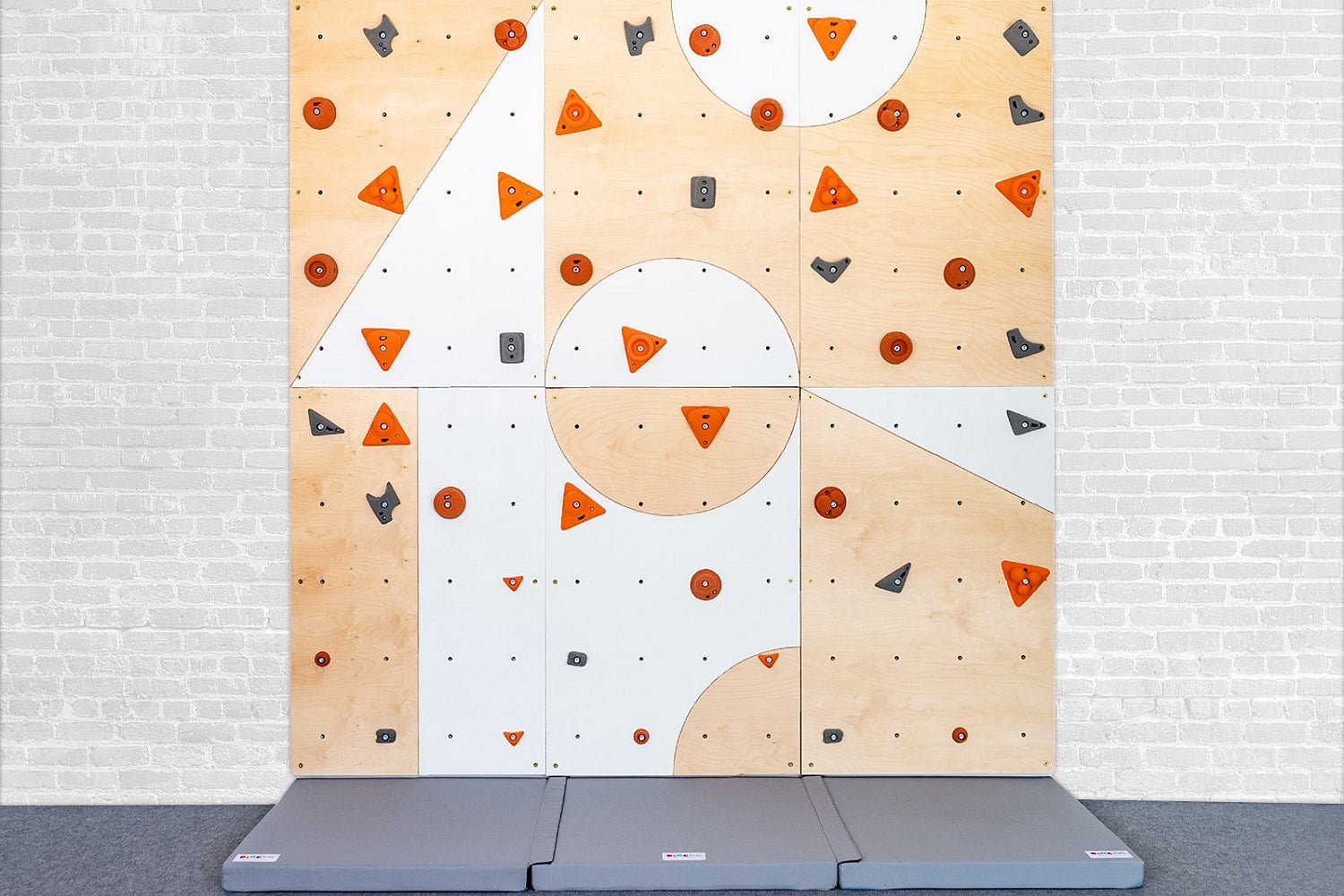
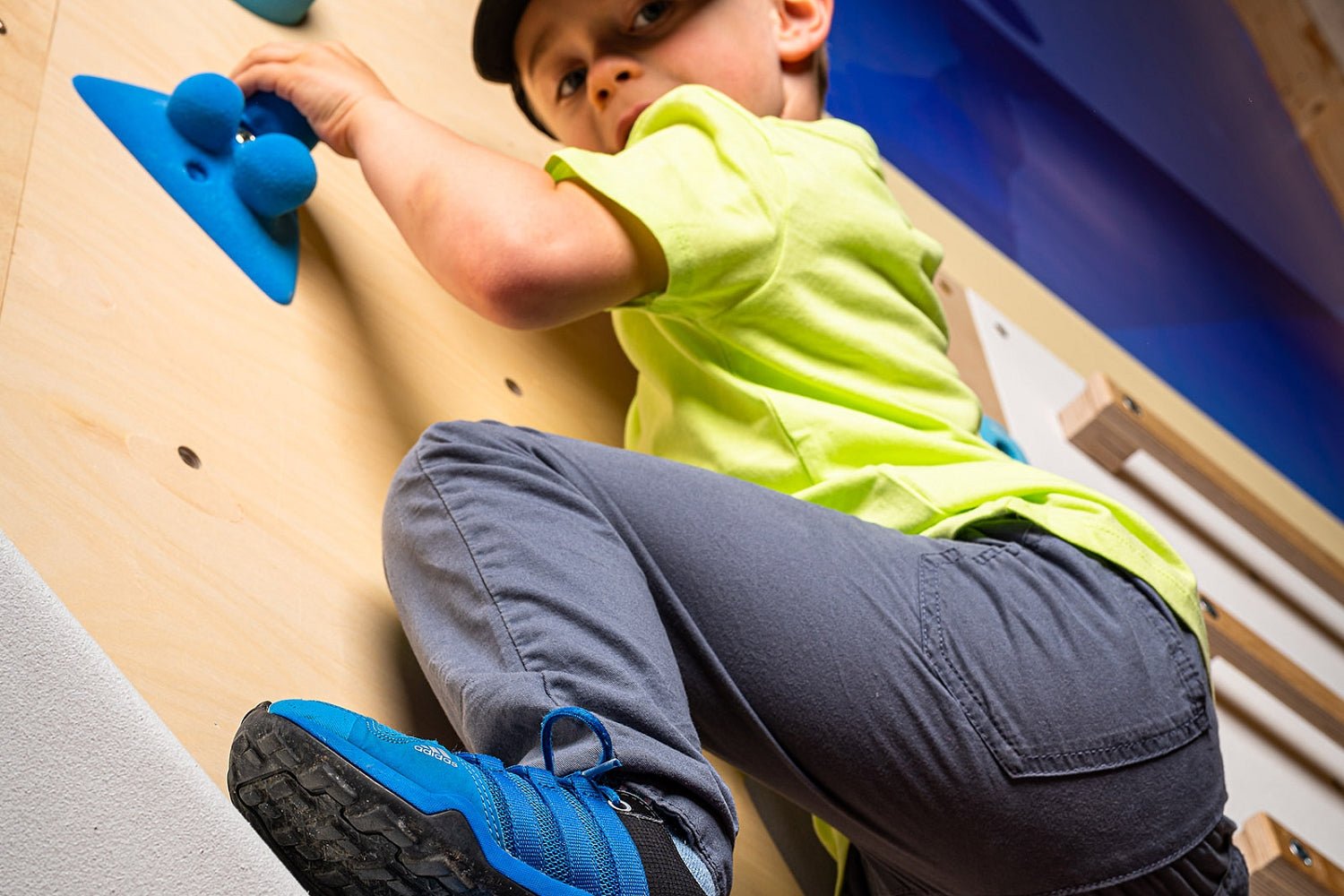
Kletterwand BK INDOOR aus 6 Teilen | 236 cm x 234 cm | inkl. 45 Griffen | 120 Loch
€1.199,00
Unit price perKletterwand BK INDOOR aus 6 Teilen | 236 cm x 234 cm | inkl. 45 Griffen | 120 Loch
€1.199,00
Unit price perExtra breite Kletterwand für drinnen – für Kinder mit viel Energie und großer Entdeckerlust
Sechs massive Kletterplatten aus Holz verwandeln jede Wand in einen kreativen Bewegungsraum. Ideal für Kinder, die gerne aktiv sind, ihre Grenzen austesten und dabei motorisch wie mental wachsen wollen.
Technische Daten:
• Maße pro Platte: 78 cm × 118 cm × 3,6 cm (inkl. Holzrahmen)
• Material: 18 mm Birken-Multiplex mit hinterlegtem Holzrahmen
• Bohrungen: 20 pro Platte (insgesamt 120) für flexible Griffpositionierung
• Griffe: 45 Klettergriffe in Wunschfarbe (Orange, Blau, Mintgrün, Lila)
• Montage: geeignet für Massivwände, Holzstrukturen und Trockenbau
• Lieferumfang:
• 6 Kletterplatten
• 45 frei kombinierbare Klettergriffe
• Komplettes Montageset für Platten & Griffe
• Erweiterbar: mit zusätzlichen Holzelementen wie Überhängen oder Seitenteilen
Viel Fläche – für große Ideen
Wenn Kinder die Möglichkeit haben, sich körperlich auszutoben, entwickeln sie nicht nur Kraft und Koordination – sie gewinnen auch Vertrauen in sich selbst. Diese 6-teilige Indoor-Kletterwand schafft genau dafür den Raum: eine breite Kletterfläche, die sich problemlos in den Wohnalltag integrieren lässt und sich an jede Wohnsituation anpasst – ob Spielzimmer, Flur oder Multifunktionswand im Kinderzimmer.
Flexibel gestaltbar – immer wieder neu
Jede der sechs Birkenplatten ist mit 20 Bohrungen ausgestattet – das ergibt ganze 120 Montagemöglichkeiten für die mitgelieferten 45 Klettergriffe. Die Griffe lassen sich jederzeit neu anordnen, sodass sich neue Routen und Schwierigkeitsstufen ganz einfach realisieren lassen. Ob Parcours, Boulderpfad oder Kletterspiel: die Wand wächst mit der Fantasie deines Kindes.
Die Griffe sind in vier stimmigen Farbkombinationen wählbar – von kräftigem Orange bis zu ruhigem Mintgrün oder Lila – abgestimmt auf moderne Kinderzimmer.
Einfach montiert – und trotzdem extrem stabil
Gefertigt aus robustem 18 mm starkem Birken-Multiplex und verstärkt durch rückseitige Holzrahmen, bieten die Platten eine langlebige Basis für jahrelangen Spielspaß. Trotz ihrer Größe bleibt die Tiefe mit nur 3,6 cm wandnah – für flache, sichere und optisch ansprechende Installationen.
Die Wand lässt sich an verschiedenen Untergründen befestigen – das nötige Zubehör liegt bei. Durch optional erhältliche Erweiterungen (z. B. Überhänge, Seitenwände oder Verbindungselemente) bleibt die Anlage jederzeit erweiterbar.
Das steckt drin:
• 6 robuste Kletterplatten aus Birke
• 45 Klettergriffe in Wunschfarbe
• 120 Bohrungen für individuelle Routen
• Inklusive Montageset für Platten & Griffe
• Erweiterbar durch modulare Elemente
• Für den Innenbereich – flach, stabil, kindersicher
Fazit
Die großflächige Indoor-Kletterwand mit 6 Platten bietet alles, was Kinder für aktives Spiel und körperliche Entwicklung brauchen. Sie vereint Funktion, Design und Sicherheit in einem System, das mitwächst, mitdenkt und mit jedem Klettergriff neue Abenteuer entstehen lässt.
📎 Anleitungen & technische Infos:
Technische Zeichnung
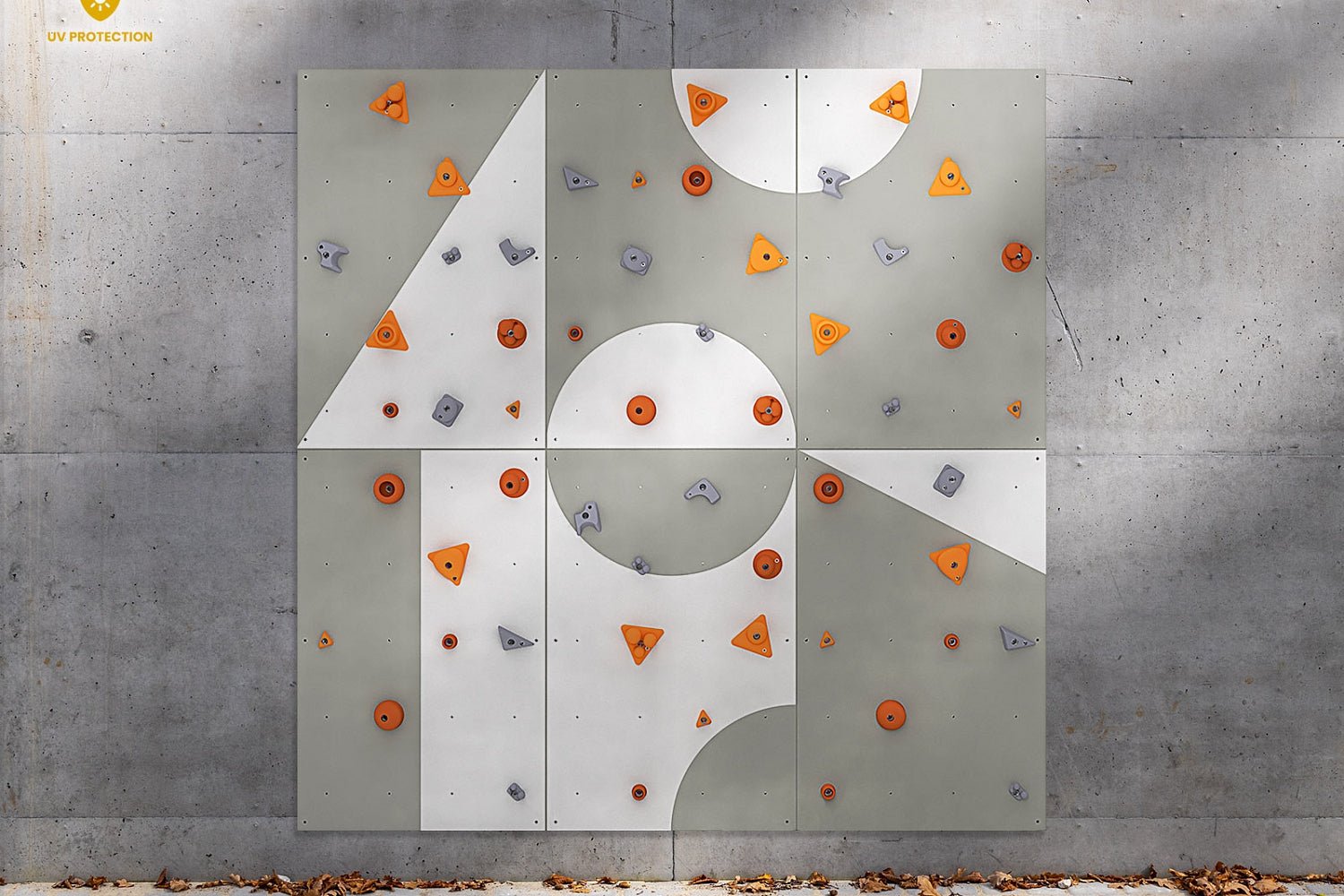
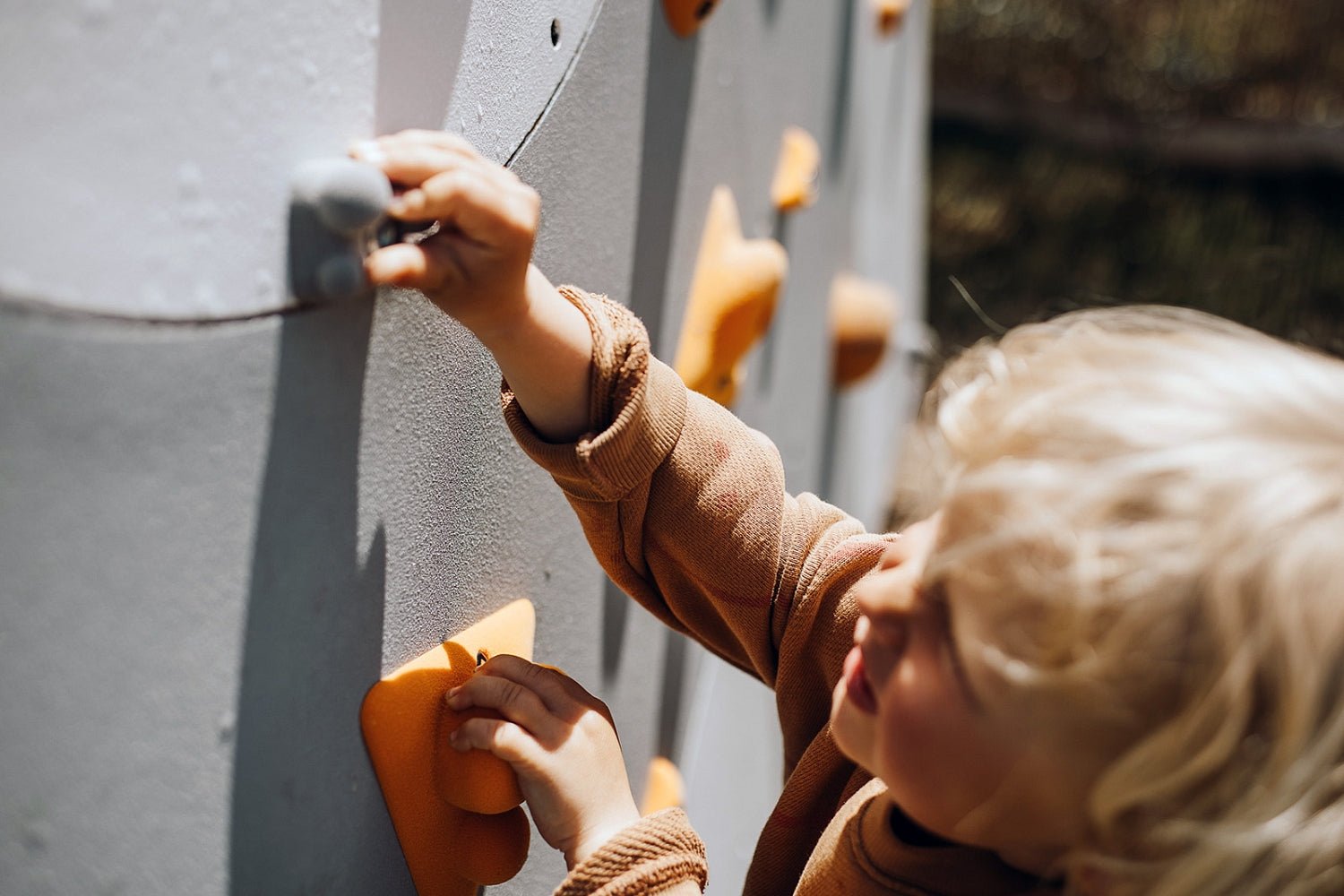
Kletterwand BK OUTDOOR aus 6 Teilen | 236 cm x 234 cm | inkl. 45 Griffen | 120 Loch
€1.399,00
Unit price perKletterwand BK OUTDOOR aus 6 Teilen | 236 cm x 234 cm | inkl. 45 Griffen | 120 Loch
€1.399,00
Unit price perOutdoor-Kletterwand – 6-teiliges Komplett-Set für große Flächen im Garten, Hof oder Sportfläche – mit echten Trainingsoptionen für Kinder & Eltern
Das 6-teilige Kletterwandsystem bietet eine große Kletterfläche, für professionelles Training und Erweiterungen. Für den gesamten Outdoor-Bereich geeignet. Ideal für aktive Kinder, Jugendliche oder Eltern, die gemeinsam trainieren und klettern möchten.
Technische Daten:
-
Maße pro Platte: 78 cm × 118 cm × 3,6 cm
-
Material: 18 mm wetterfestes Outdoor-Sperrholz
-
Bohrungen: 20 pro Platte (insgesamt 120) zur freien Griffpositionierung
-
Griffe: 45 UV-stabile Klettergriffe (Farbauswahl: Orange, Blau, Minze-Lila)
-
Montage: geeignet für Außenwände, Holzkonstruktionen oder Trockenbau
Lieferumfang:
-
6 wetterfeste Kletterplatten
-
45 UV-resistente Klettergriffe in Wunschfarbe
-
Vollständiges Montageset für Wand & Griffe
Diese umfangreiche Kletterwand ist wie gemacht für sportliche Herausforderungen im Freien. Ob im Garten, auf dem Schulhof oder in Bewegungsecken – sie bietet Raum für Spielspaß, Körpergefühl und echtes Klettertraining.
Noch mehr Möglichkeiten mit Zusatzelementen
Die Wand kann mit optionalem Zubehör wie Holzelementen für Überhänge oder seitliche Griffe ergänzt werden. Für ältere Kinder und Erwachsene empfehlen wir unsere Spezialgriffe wie "Potatoes" oder "Boomerangs", die echtes Krafttraining fördern und das gesamte Muskelkorsett aktivieren.
Modular, langlebig & sicher
Das UV-beständige Griffmaterial widersteht Sonnenlicht und ist langlebig. Dank 120 Bohrungen lässt sich der Schwierigkeitsgrad laufend verändern. Die Platten bestehen aus robustem Outdoor-Sperrholz mit rückseitiger Verstärkung – für langfristige Sicherheit.
Enthalten:
-
6 Outdoor-Kletterplatten mit je 20 Bohrungen
-
45 UV-geschützte Klettergriffe in Wunschfarbe
-
Komplette Montagesets für Wand & Griffe
-
Erweiterbar mit Holzelementen und Trainingsgriffen
Zertifizierung: Alle Platten und Griffe sind einzeln zertifiziert.
📎 Anleitungen & technische Infos:
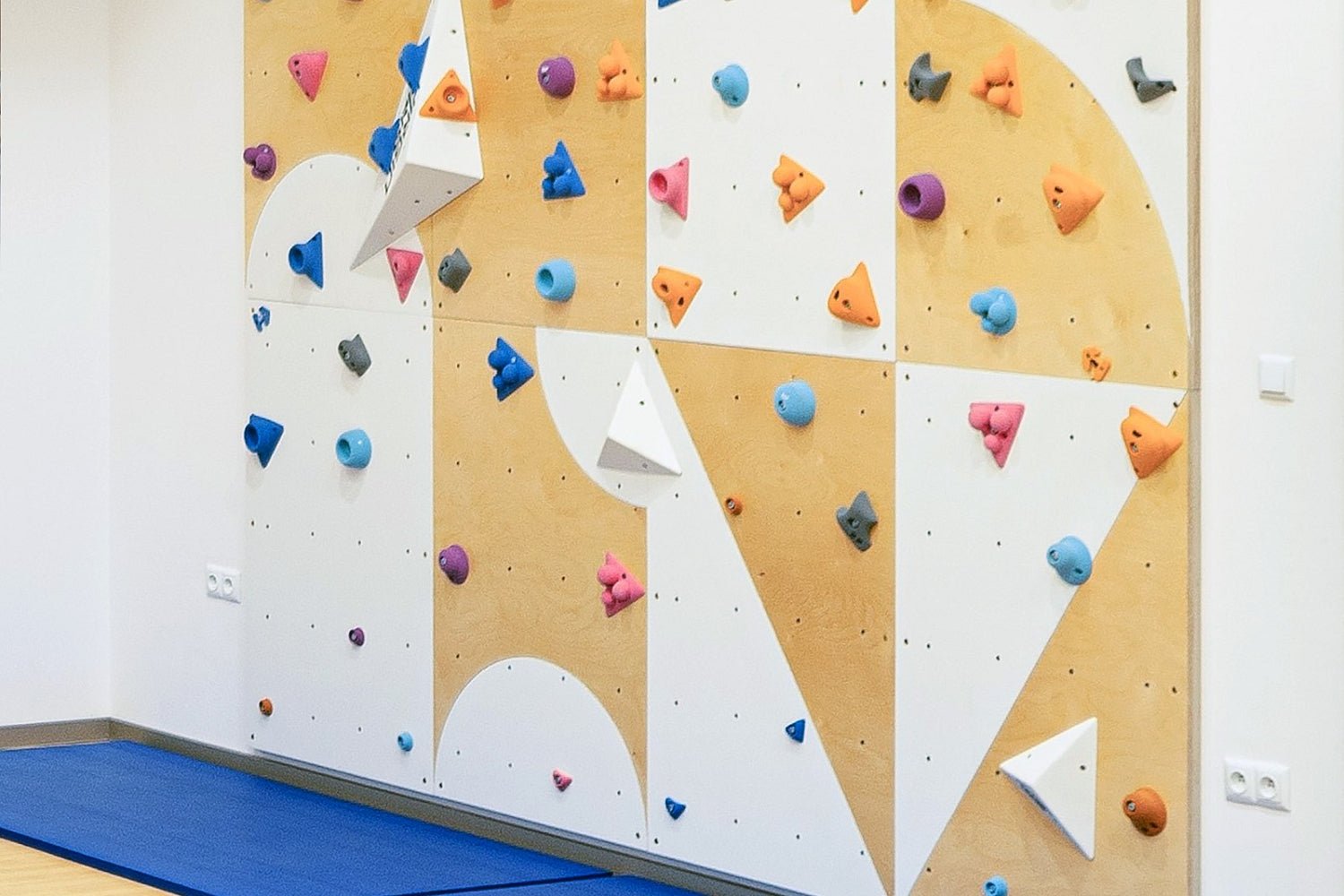
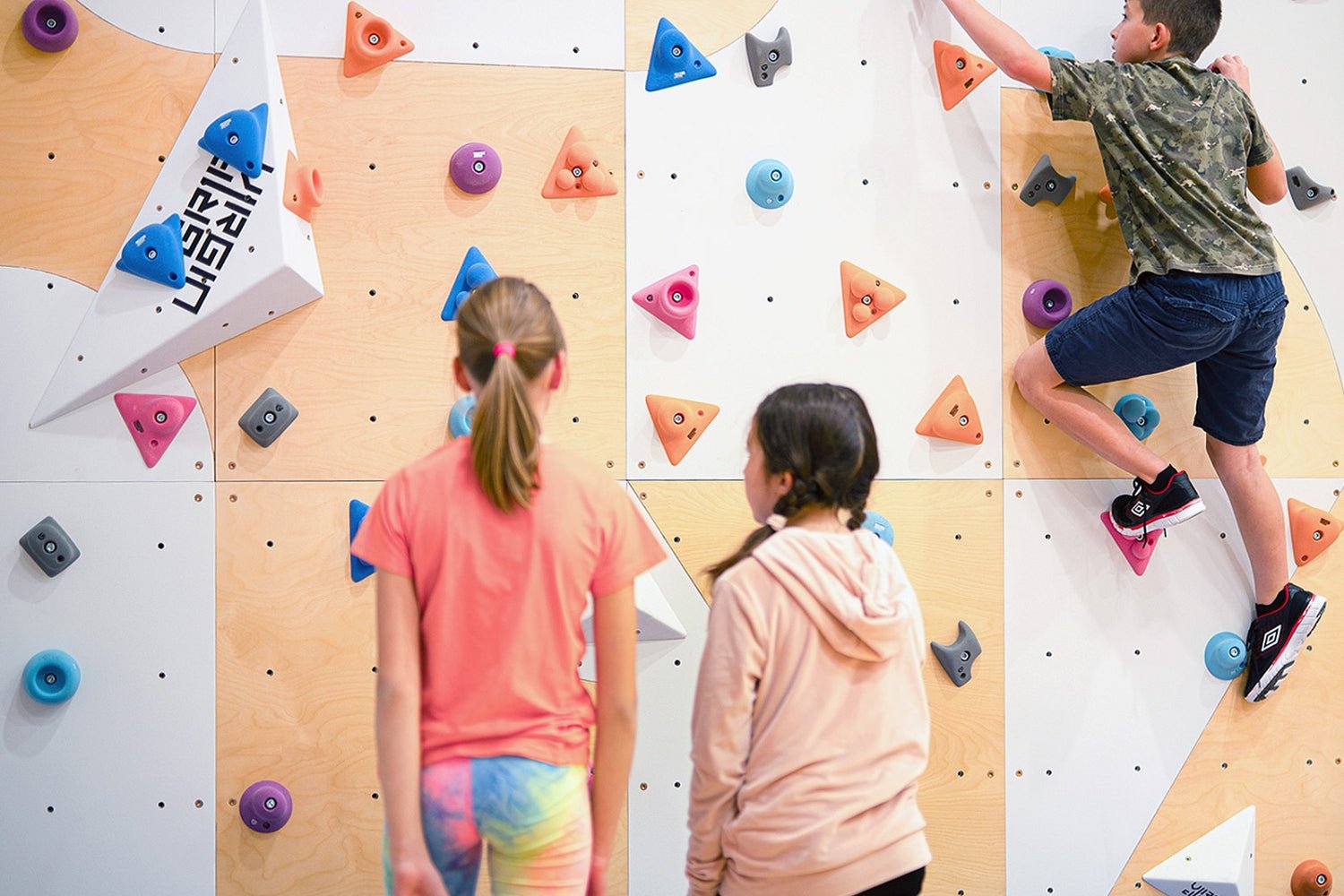
Kletterwand BK INDOOR aus 8 Teilen | 236 cm x 312 cm | inkl. 60 Griffen | 160 Loch
€1.549,00
Unit price perKletterwand BK INDOOR aus 8 Teilen | 236 cm x 312 cm | inkl. 60 Griffen | 160 Loch
€1.549,00
Unit price perProfi Kletterwand – 8-teilige Profi-Kletterfläche für Kinder & Erwachsene
Einsatz in privat und für Sport, Therapie & Spiel – ideal für Turnhallen, Sportzentren & öffentliche Einrichtungen
Diese extra große Kletterwand wurde für den Einsatz in öffentlichen Innenbereichen entwickelt – robust, modular und geeignet für Kinder und Erwachsene. Perfekt für alle, die professionelles Klettertraining oder freie Bewegung fördern wollen.
Technische Daten:
• Maße pro Platte: 78 cm × 118 cm × 3,6 cm (inkl. Holzrahmen)
• Material: 18 mm Birken-Multiplex mit verstärktem Holzrahmen
• Bohrungen: 20 pro Platte (insgesamt 160) für flexible Griffpositionierung
• Griffe: 60 Klettergriffe in Wunschfarbe (Orange, Blau, Minze-Lila)
• Montage: geeignet für Wände, Holzunterkonstruktionen und Gipskarton
• Lieferumfang:
• 8 Kletterplatten
• 60 Klettergriffe in wählbarer Farbkombination
• Vollständiges Montageset für Wand & Griffe
• Erweiterbar: mit Holzstrukturen, Griff-Sets & zertifizierten Fallmatten
Die Wand für große Ideen – auch im professionellen Umfeld
Diese Indoor-Kletterwand mit 8 Platten bietet besonders viel Raum für Bewegung, Training und gezielte Förderung – sei es in der Kita, im Sportverein, in der Schule oder in therapeutischen Einrichtungen. Mit 160 flexibel nutzbaren Bohrungen und 60 Griffen lassen sich vielfältige Kletterrouten für jedes Alter und jedes Niveau gestalten – vom freien Spiel bis zum funktionellen Ganzkörpertraining.
Für Kinder & Erwachsene – individuell erweiterbar
Die Wand kann mit unseren Kletter-Zubehörsets ergänzt werden, darunter spezielle Klettergriffe wie „Potato“ oder „Boomerang“, die besonders bei Erwachsenen echtes Training ermöglichen. Auch unsere modularen Holzstrukturen für Überhänge oder Seitenelemente bieten spannende Erweiterungen für größere Flächen. So wird die Kletterwand zum wandelbaren Erlebnis- und Trainingsraum – drinnen, sicher und dauerhaft belastbar.
Sicherheit für öffentliche Nutzung
Für öffentliche Räume gilt: Sicherheit geht vor. Wir empfehlen den Einsatz unserer zertifizierten Fallschutzmatten, speziell passend zur Breite dieser Wand. Sie decken den Fallbereich optimal ab und sind geprüft für Schulen, Turnhallen und Therapieeinrichtungen. Solltest du bereits über große Matten verfügen, können diese alternativ verwendet werden.
Das steckt drin:
• 8 großflächige Kletterplatten mit 160 Griffpositionen
• 60 Griffe in wählbarer Farbkombination
• Robuste Materialien für Kinder und Erwachsene
• Komplettes Zubehör zur Montage inklusive
• Optional erweiterbar mit Trainingsgriffen, Modulen und Fallmatten
• Ideal für Sportzentren, öffentliche Spielbereiche & Therapieeinrichtungen
Fazit
Diese 8-teilige Profi-Kletterwand ist eine durchdachte Lösung für alle, die Bewegung, Spiel und gezieltes Training kombinieren wollen. Für Kinder, Jugendliche und Erwachsene – im privaten oder öffentlichen Raum. Sicher, modular, zertifizierbar.
-
📎 Anleitungen & technische Infos:
Technische Zeichnung
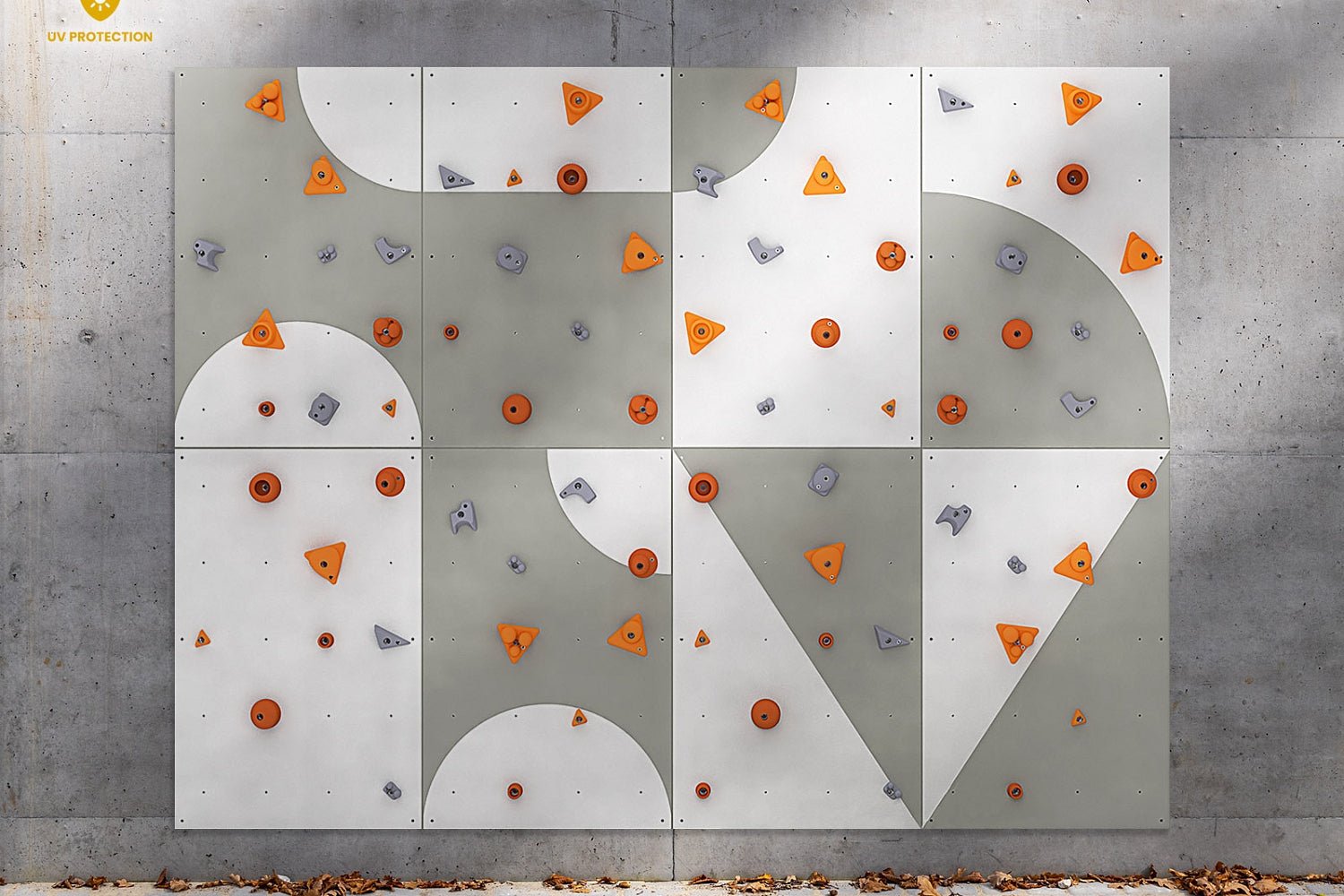
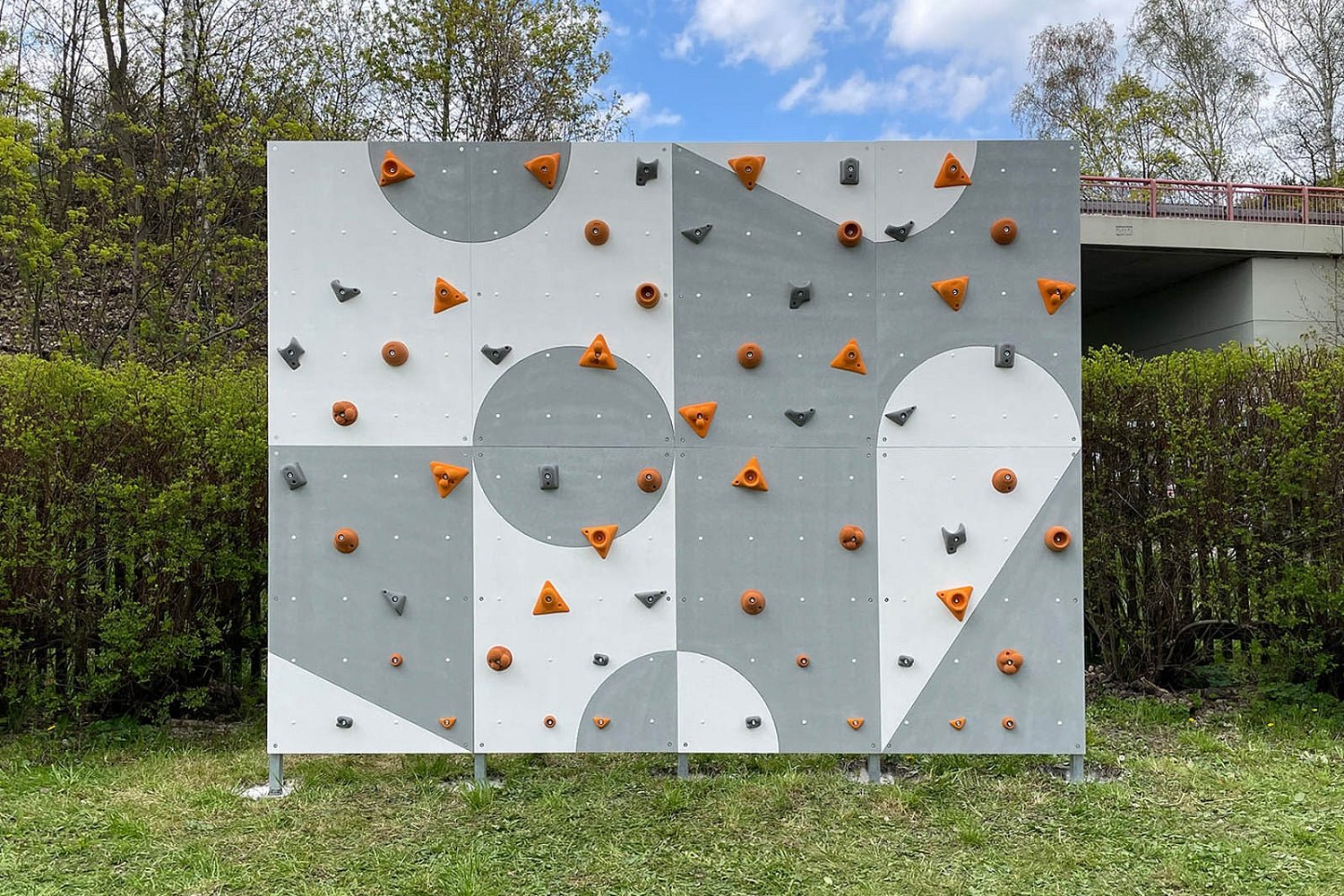
Kletterwand BK OUTDOOR aus 8 Teilen | 236 cm x 312 cm | inkl. 60 Griffen | 160 Loch
€1.789,00
Unit price perKletterwand BK OUTDOOR aus 8 Teilen | 236 cm x 312 cm | inkl. 60 Griffen | 160 Loch
€1.789,00
Unit price perOutdoor-Kletterwand für Kinder & Eltern – 8-teilige riesige Bewegungsfläche im Garten oder an der Hauswand – für sportliche Familien, die hoch hinaus wollen
Mit dieser 8-teiligen Outdoor-Kletterwand erschafft ihr ein echtes Kletterparadies im Freien. Genug Platz für intensives Spiel, abwechslungsreiches Training und gemeinsame Bewegungserlebnisse mit euren Kindern.
Technische Daten:
-
Maße pro Platte: 78 cm × 118 cm × 3,6 cm
-
Material: 18 mm wetterfestes Outdoor-Sperrholz
-
Bohrungen: 20 pro Platte (insgesamt 160) zur freien Griffpositionierung
-
Griffe: 60 UV-stabile Klettergriffe (Farbauswahl: Orange, Blau, Minze-Lila)
-
Montage: geeignet für Außenwände, Holzstrukturen oder Trockenbau
Lieferumfang:
-
8 wetterfeste Kletterplatten
-
60 UV-resistente Klettergriffe in Wunschfarbe
-
Vollständiges Montageset für Wand & Griffe
Diese große Kletterwand bietet euch eine durchgehende Spielfläche mit 160 Bohrungen – ideal für kreatives Klettern, Hangelpartien und Krafttraining. Ob an der Hauswand, im Garten oder als Teil eines größeren Spielkonzepts: Mit diesem Set entstehen neue Möglichkeiten für Bewegung und gemeinsames Aktivsein.
Auch für Eltern geeignet: Training für den ganzen Körper
Dank optionalem Zubehör wie Trainingsgriffen (z. B. "Potatoes" oder "Boomerangs") oder Holzelementen für Überhänge wird aus dem Spielgerät eine funktionale Kletteranlage. So könnt auch ihr Eltern mittrainieren und gemeinsam mit den Kindern wachsen.
Langlebig, modular und wandelbar
Die wetterfesten Sperrholzplatten mit Verstärkung sind für den langfristigen Einsatz im Freien konzipiert. Die Griffe können beliebig umgesetzt werden und passen sich dem Entwicklungsstand eurer Kinder an. Das System ist mit weiteren Platten und Zubehör kombinierbar.
Enthalten:
-
8 robuste Outdoor-Kletterplatten
-
60 UV-geschützte Griffe in Wunschfarbe
-
Komplettes Montagezubehör
-
Erweiterungsmöglichkeiten für Familien- oder Sportnutzung
Zertifizierung: zertifiziertes Sperrholz und Klettergriffe.
📎 Anleitungen & technische Infos:
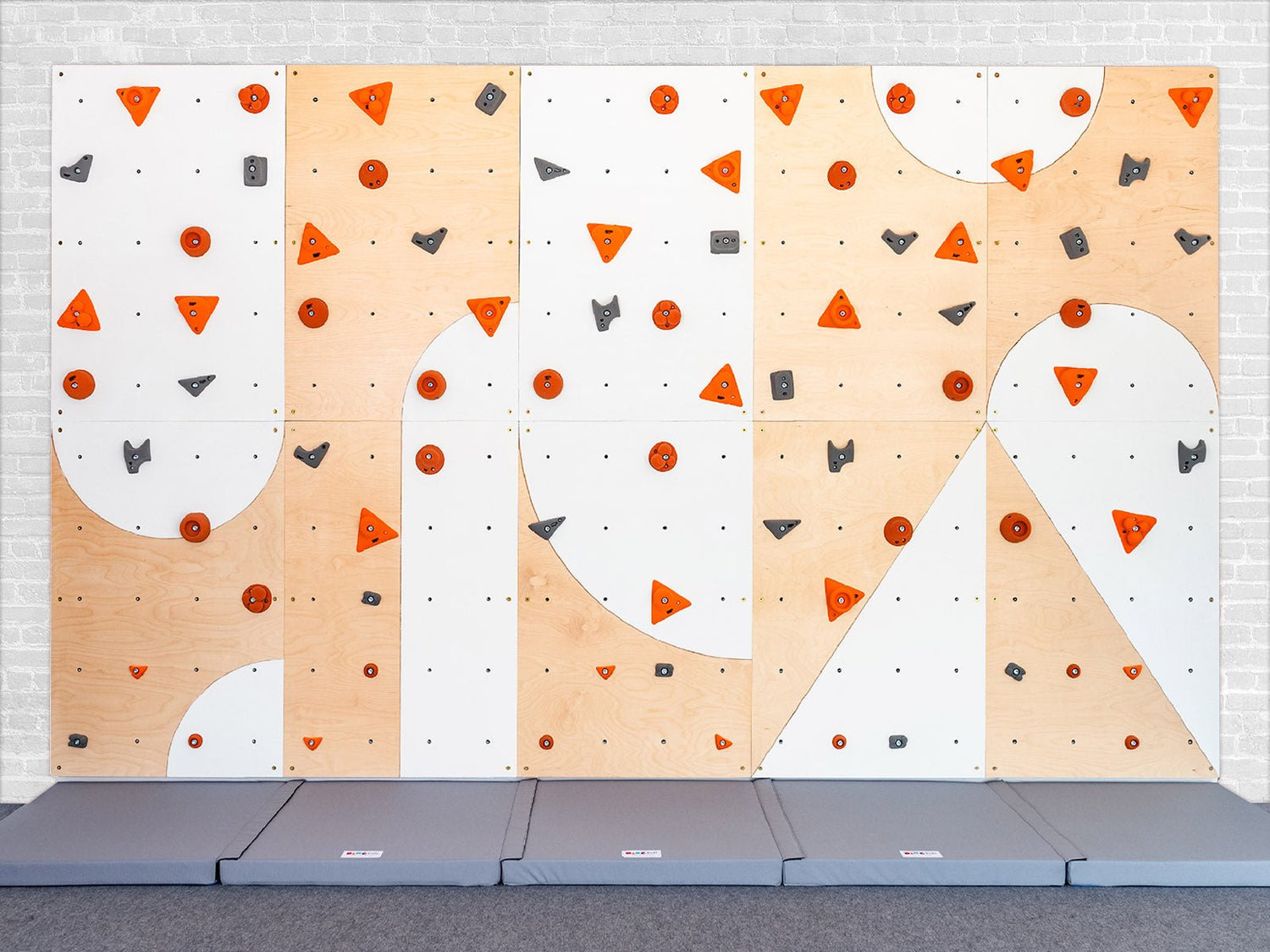

Kletterwand BK INDOOR aus 10 Teilen | 236 cm x 390 cm | inkl. 75 Griffen | 200 Loch
€1.889,00
Unit price perKletterwand BK INDOOR aus 10 Teilen | 236 cm x 390 cm | inkl. 75 Griffen | 200 Loch
€1.889,00
Unit price perKletterwand – 10-teilige Reha-Kletterfläche für Therapie & Gruppenübungen für Bewegungstherapie, Reha und Gesundheitsförderung – ideal für Praxen, Kliniken & Therapiezentren ABER auch für Privat!
Diese Kletterwand wurde speziell für therapeutische Anwendungen konzipiert – ob Einzel- oder Gruppentherapie, Kinder oder Erwachsene. Sie bringt Bewegung, Koordination und gezielte Förderung in die tägliche Arbeit von Therapeut:innen und Pädagog:innen.
Technische Daten:
• Maße pro Platte: 78 cm × 118 cm × 3,6 cm (inkl. Holzrahmen)
• Material: 18 mm Birken-Multiplex mit verstärktem Rückrahmen
• Bohrungen: 20 pro Platte (insgesamt 200) zur freien Griffmontage
• Griffe: 75 Klettergriffe in Wunschfarben (Orange, Blau, Mintgrün, Lila)
• Montage: geeignet für Gipskarton, Holzunterbauten und gemauerte Wände
• Lieferumfang:
• 10 Kletterplatten
• 75 Klettergriffe
• Komplettes Zubehör zur Wand- und Griffmontage
• Empfohlene Ergänzung: kleine oder große Fallschutzmatten je nach Einrichtung
Bewegung trifft auf Wirkung – die Kletterwand für Therapie und Reha
Klettern ist mehr als Spiel – es kann auch eine sanfte, natürliche und effektive Form von Bewegungstherapie sein. Diese großflächige Kletterwand mit 10 Modulen wurde speziell für den Einsatz in Praxen, Rehazentren und Therapieeinrichtungen entwickelt. Sie ermöglicht therapeutische Übungen für Einzelpersonen oder ganze Gruppen – abgestimmt auf individuelle Bedürfnisse.
Flexible Griffpositionierung – für personalisierte Übungen
Dank 200 Bohrungen und 75 Klettergriffen lassen sich Griffpositionen jederzeit anpassen – je nach Klient:in, Therapieform oder Trainingsziel. Ob zur Verbesserung von Beweglichkeit, Koordination, Haltung oder zur Unterstützung bei neurologischen oder orthopädischen Beschwerden: Diese Wand macht funktionelles Klettern zugänglich, leicht umsetzbar und vielseitig einsetzbar.
Ergänzbar mit Zubehör – für jede Praxis die passende Lösung
Unsere separat erhältlichen Klettergriffe und Holzaufsätze (z. B. „Potato“ oder „Boomerang“) erweitern die therapeutischen Möglichkeiten zusätzlich – von Greifkrafttraining bis Gleichgewichtsübungen. Je nach räumlicher Ausstattung empfehlen wir außerdem kleine Matten für Einzelpraxen oder unsere zertifizierten großen Fallschutzmatten für Gruppensettings oder Kliniken.
Langlebig, hygienisch & leicht zu pflegen
Die Kletterplatten bestehen aus stabilem, 18 mm starkem Birken-Multiplex und sind mit einem Holzrahmen auf der Rückseite verstärkt. Sie sind pflegeleicht, splitterfrei geschliffen und mit kindersicheren, wasserbasierten Lacken behandelt. Ideal für den täglichen Einsatz in Innenräumen – robust, hygienisch und langlebig.
Das steckt drin:
• 10 Kletterplatten mit 200 Bohrungen
• 75 frei wählbare Klettergriffe
• Modular & individuell anpassbar
• Inkl. Montagematerial für Platten & Griffe
• Optimal für therapeutische Anwendungen
• Kompatibel mit zertifizierten Fallschutzmatten
• Ideal für Rehazentren, Praxen & Gruppentherapie
Fazit
Diese 10-teilige Indoor-Kletterwand ist mehr als ein Sportgerät – sie ist ein wirkungsvolles Werkzeug für moderne Bewegungstherapie. Für Kinder, Erwachsene, Einzelsettings oder Gruppenübungen – flexibel, professionell und durchdacht in jedem Detail.
📎 Anleitungen & technische Infos:
• ➤ Anleitung Sturzmatten (PDF)
• ➤ Anleitung Kletterwand Montage (PDF)
Technical drawing
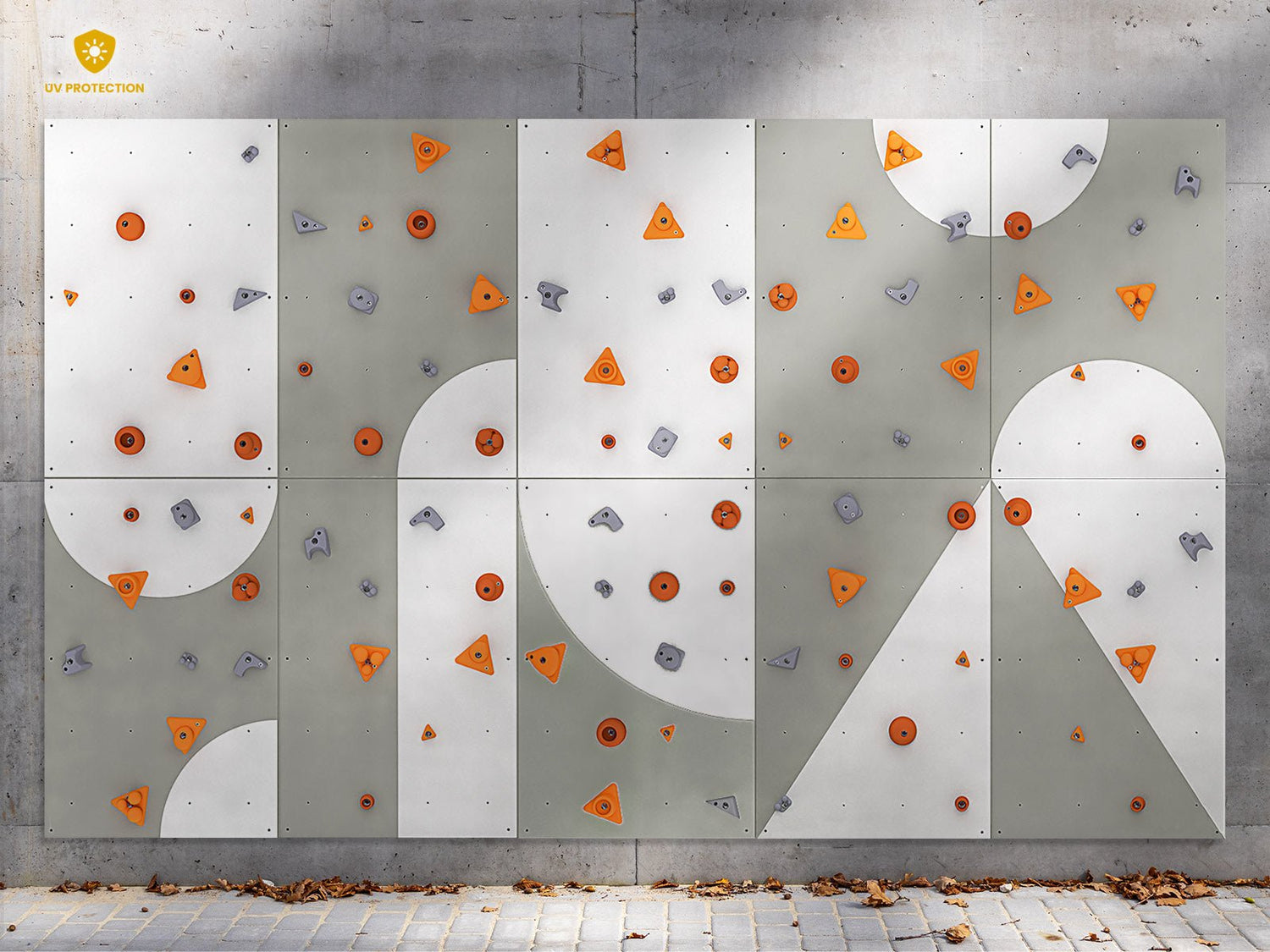
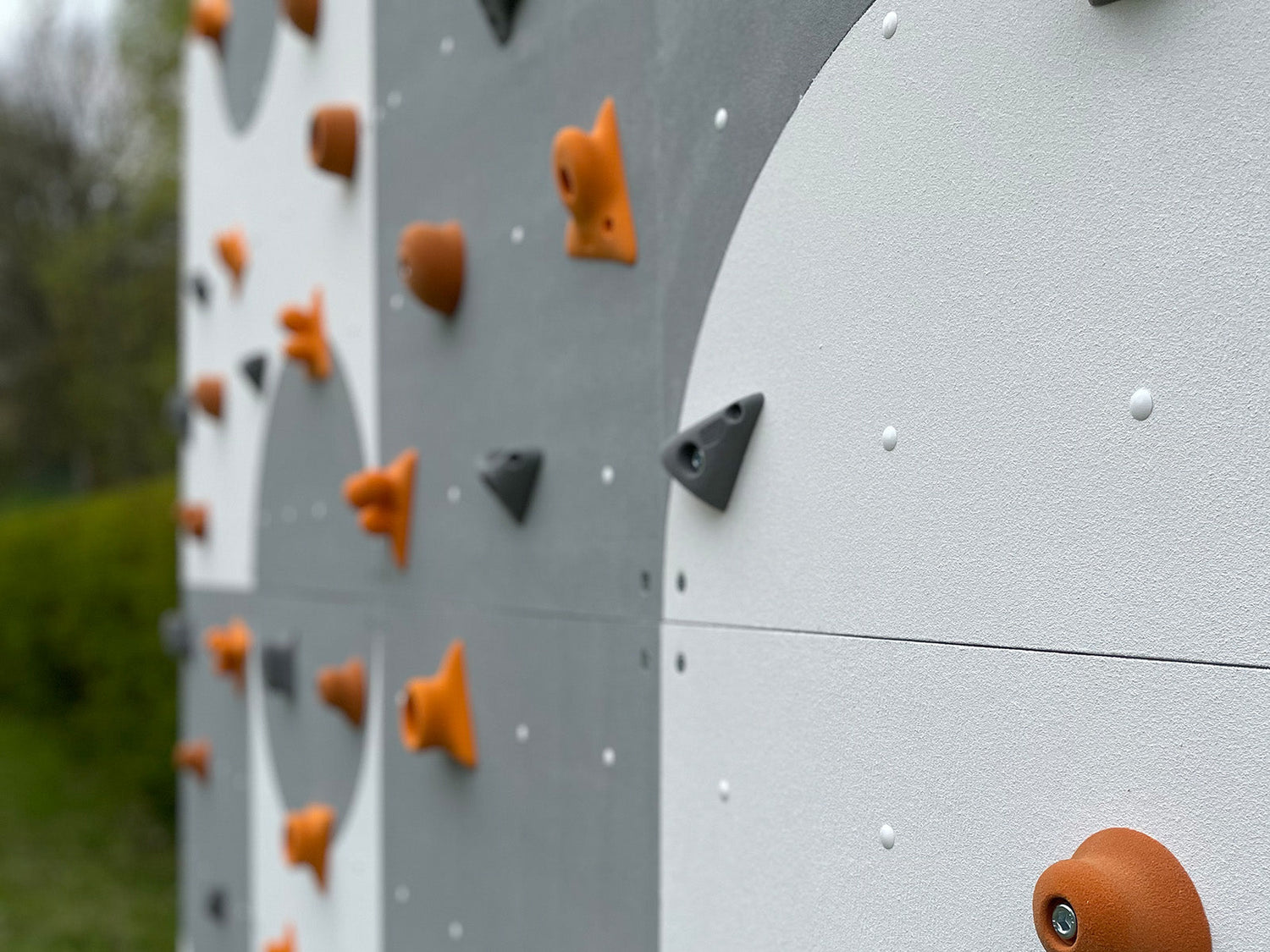
Kletterwand BK OUTDOOR aus 10 Teilen | 236 cm x 390 cm | inkl. 75 Griffen | 200 Loch
€2.190,00
Unit price perKletterwand BK OUTDOOR aus 10 Teilen | 236 cm x 390 cm | inkl. 75 Griffen | 200 Loch
€2.190,00
Unit price perOutdoor-Kletterwand für Kinder & Eltern – 10-teilig, riesige Outdoor-Kletterfläche für Kinder & Erwachsene – ideal für Familien mit Platz und Kletterlust
Dieses Komplett-Set mit zehn großen Kletterplatten bietet alles, was ihr für ein echtes Klettertraining im eigenen Garten braucht. Ob als Spielplatz für die Kinder oder als Fitness-Parcours für Eltern: Hier ist für jeden etwas dabei.
Technische Daten:
-
Maße pro Platte: 78 cm × 118 cm × 3,6 cm
-
Material: 18 mm wetterfestes Outdoor-Sperrholz
-
Bohrungen: 20 pro Platte (insgesamt 200) zur freien Griffplatzierung
-
Griffe: 75 UV-stabile Klettergriffe (Farbauswahl: Orange, Blau, Minze-Lila)
-
Montage: geeignet für Außenwände, Holzkonstruktionen oder Trockenbau
Lieferumfang:
-
10 wetterfeste Kletterplatten
-
75 UV-resistente Klettergriffe in Wunschfarbe
-
Vollständiges Montageset für Wand & Griffe
Kletterlandschaft mit Trainingsfunktion
Mit 200 Bohrungen und 75 Klettergriffen bietet dieses Set eine außergewöhnliche Bewegungsfläche für kreative Routen, Gleichgewichtsübungen und echtes Krafttraining. Ideal für große Gärten, Schulhöfe oder Sporteinrichtungen.
Klettern für Kinder UND Eltern
Dieses System kann durch unsere Kletter-Accessoires wie die Potato Bars oder Boomerang Bars erweitert werden – ideal für alle, die ein echtes Ganzkörpertraining suchen. Auch unsere Holzelemente sorgen für noch mehr Abwechslung, schaffen Überhänge oder Seitenstützen und machen aus einer Wand eine Erlebnisfläche.
Sicher, modular und zukunftstauglich
Die UV-geschützten Griffe lassen sich beliebig anbringen und sorgen für langlebigen Kletterspaß. Die modularen Platten können beliebig erweitert oder ergänzt werden. Eine durchdachte Investition für viele Jahre Spiel, Training und Familienzeit.
Enthalten:
-
10 Outdoor-Kletterplatten mit je 20 Bohrungen
-
75 UV-beständige Klettergriffe in Wunschfarbe
-
Vollständige Montagekits für Platten & Griffe
-
Erweiterbar mit Holzelementen und Trainingsgriffen
📎 Anleitungen & technische Infos:


Einzelelement BK Dreieck rechts | Kletterwand BK OUTDOOR | 118 x 78 cm | 9 Loch
€159,00
Unit price perEinzelelement BK Dreieck rechts | Kletterwand BK OUTDOOR | 118 x 78 cm | 9 Loch
€159,00
Unit price perEinzelelement Dreieck rechts für Kletterwand BK OUTDOOR – Rechtes Abschlussdreieck – formschöner Abschluss & flexibler Ausbau in der BK-Serie
Diese spezielle Kletterwand-Platte in rechter Dreiecksform eignet sich perfekt als seitlicher Abschluss eurer BK Outdoor-Kletterwand. Sie bringt nicht nur Abwechslung ins Kletterbild, sondern ermöglicht eine harmonische Ergänzung oder neue Kletterverläufe.
Technische Daten:
-
Maße: 118 × 78 cm (rechtes Dreieck)
-
Material: 18 mm Birken-Multiplex (inkl. rückseitigem Rahmen: 36 mm Gesamttiefe)
-
Bohrungen: 9 Löcher zur Montage von Klettergriffen
-
Montagezubehör: 5 x Schrauben 8 mm × 120 mm (Torx-Kopf), 5 x passende Dübel
Lieferumfang:
-
1 x Kletterplatte – rechtes Dreieck mit 9 Bohrlöchern
-
5 x Montageschrauben mit Dübeln
Die rechte Dreiecksplatte ist ideal für die Erweiterung oder den seitlichen Abschluss einer bestehenden Kletterwand. Ob als Übergang, zur Ergänzung von Kletterrouten oder für kreative Wandformen – dieses Einzelelement macht’s möglich. Voll kompatibel mit allen Kletterwand OUTDOOR-Elementen.
📎 Anleitungen & technische Infos:

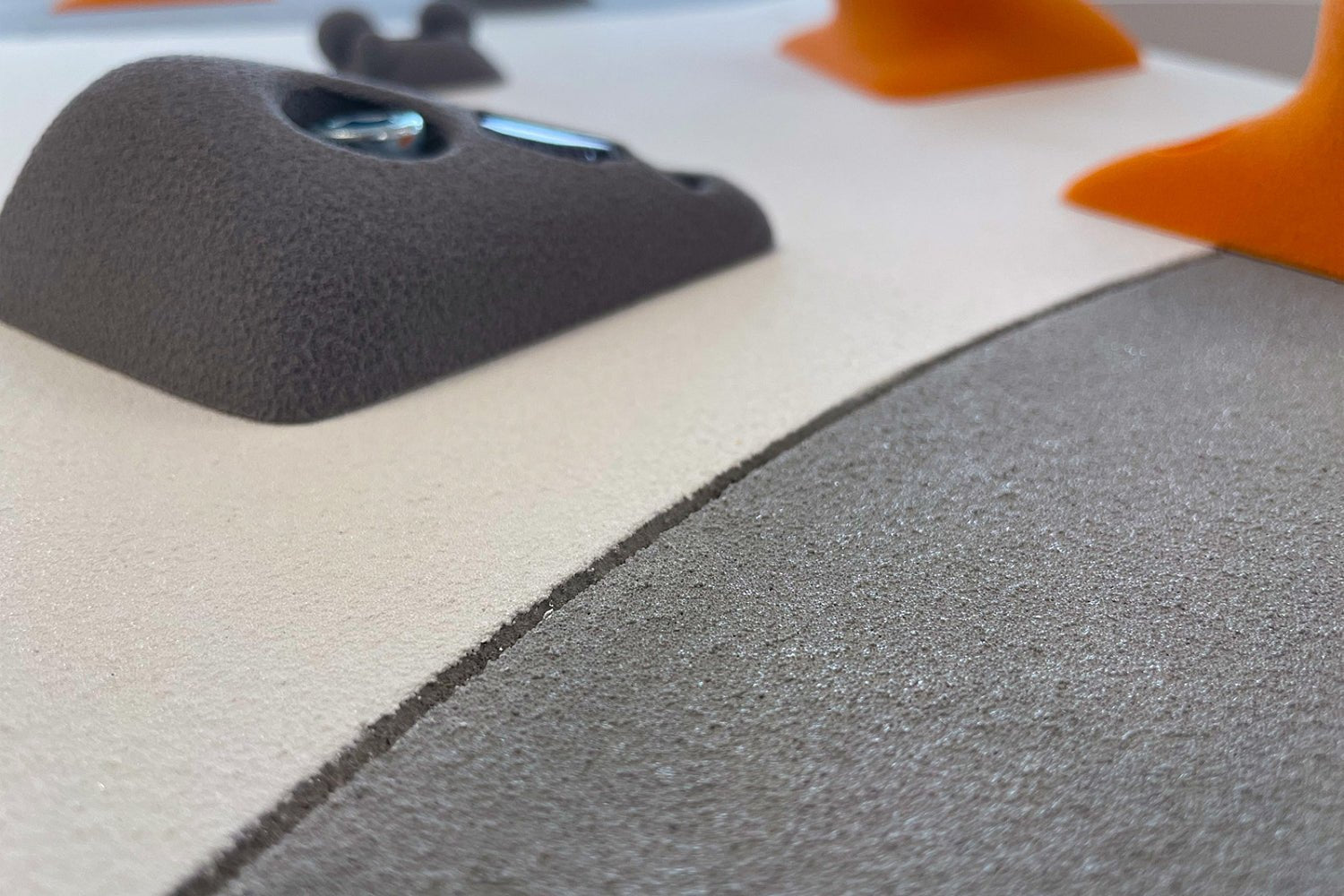
Einzelelement BK Dreieck links | Kletterwand BK OUTDOOR | 118 x 78 cm | 9 Loch
€159,00
Unit price perEinzelelement BK Dreieck links | Kletterwand BK OUTDOOR | 118 x 78 cm | 9 Loch
€159,00
Unit price perEinzelelement Dreieck links für Kletterwand BK OUTDOOR – für den linken Abschluss – flexibel und passgenau zur BK-Serie
Diese spezielle Indoor-Kletterplatte in linker Dreiecksform bringt Dynamik in jede Kletterwand. Ideal als Abschluss, für schräge Übergänge oder zum Ausgleichen – sie wächst mit euren Kindern mit und erweitert jede Bewegungslösung sinnvoll.
Technische Daten:
-
Maße: 118 × 78 cm (linkes Dreieck)
-
Material: 18 mm Birken-Multiplex (Gesamttiefe inkl. Rahmen: 36 mm)
-
Bohrungen: 9 Löcher für Klettergriffe
-
Montagezubehör: 5 x Fischerdübel, 5 x Schrauben 8 mm × 120 mm (Torx-Kopf)
Lieferumfang:
-
1 x Einzelelement Kletterplatte – linkes Dreieck mit 9 Bohrungen
-
5 x Montageschrauben mit Dübeln
Diese linke Dreieckplatte lässt sich passgenau mit bestehenden Kletterwänden kombinieren. Sie eignet sich ideal, um den Wandabschluss harmonisch zu gestalten oder gezielt neue Kletterwege zu eröffnen. Wie alle Elemente im Kletterwand OUTDOOR System ist sie robust, modular und langlebig.
📎 Anleitungen & technische Infos:
Einzelelement für Kletterplatte BK OUTDOOR – rechteckige Erweiterung für den Außenbereich – flexibel, stabil und leicht zu montieren
Diese einzelne rechteckige Kletterplatte ist perfekt, um eure Kletterwand BK OUTDOOR zu erweitern oder individuelle Kletterideen umzusetzen. Sie wird inklusive allem Montagezubehör geliefert und lässt sich direkt in die bestehende Kletterwand BK OUTDOOR Systeme integrieren.
Technische Daten:
-
Maße: 118 x 78 cm
-
Material: 18 mm Birken-Multiplex (Gesamttiefe inkl. Rahmen: 36 mm)
-
Bohrungen: 20 Löcher zur Griffmontage
-
Montagezubehör: 6 x Fischerdübel, 6 x Schrauben 8 mm × 120 mm (Torx-Kopf)
Lieferumfang:
-
1 x Einzelelement rechteckige Kletterplatte (118 × 78 cm)
-
6 x Montageschrauben & Dübel
Stabil und erweiterbar
Die rechteckige Platte bildet das Herzstück jeder Kletterwand OUTDOOR. Mit 20 Bohrungen bietet sie vielfältige Gestaltungsmöglichkeiten und lässt sich durch weiteres Zubehör (z. B. Klettergriffe, Matten oder Dreiecksplatten) jederzeit erweitern. Ideal für Spielzimmer, Sportbereiche oder Bewegungslandschaften im Außenbereich.
Installations- und Gebrauchsanweisungen zur Montage der Kletterplatten


Einzelelement BK Dreieck rechts | Kletterwand BK INDOOR | 118 x 78 cm | 9 Loch
€149,00
Unit price perEinzelelement BK Dreieck rechts | Kletterwand BK INDOOR | 118 x 78 cm | 9 Loch
€149,00
Unit price perEinzelelement Dreieck rechts - Erweiterungsmodul BK-Serie, für neue Bewegungsideen & mehr Spielspaß
Diese dreieckige Kletterplatte BK INDOOR für den Innenbereich erweitert eure BK Kletterwand spielerisch und platzsparend. Durch ihre Form eignet sie sich perfekt für Ecken oder kreative Zwischenlösungen – mit allen Vorteilen des Kletterwand BK INDOOR Systems.
Technische Daten:
-
Maße: Katheten 118 × 78 cm (rechteckiges Dreieck)
-
Material: 18 mm Birken-Multiplex
-
Gesamttiefe: 36 mm (inkl. rückseitigem Rahmen)
-
Bohrungen: 9 Löcher für Klettergriffe
-
Montagezubehör: 5 x Schrauben 8 mm × 120 mm (Torx-Kopf), 5 x Fischerdübel
Lieferumfang:
-
1 x Kletterplatte – rechtes Dreieck mit 9 Bohrungen
-
5 x Montageschrauben mit Dübeln zur Wandbefestigung
Die Indoor-Dreiecksplatte eignet sich ideal zum Schließen von Ecken, als Abschluss einer Kletterstrecke oder zur optischen Auflockerung großer Flächen. Dank der standardisierten Maße kann sie jederzeit in bestehende Systeme integriert werden.
Enthalten:
-
1 x dreieckige Kletterplatte
-
5 x Schrauben & Dübel zur stabilen Montage
📎 Anleitungen & technische Infos:
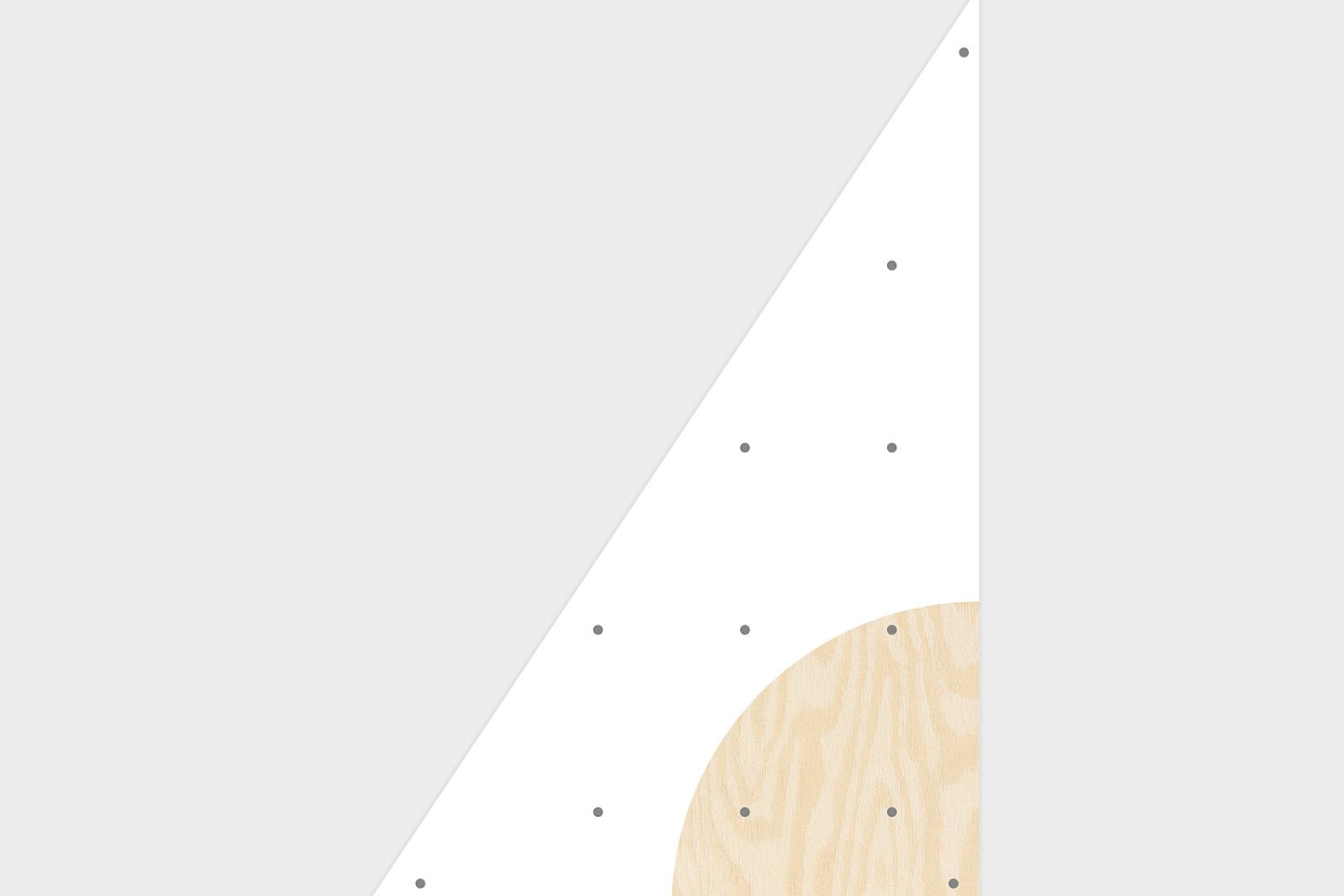
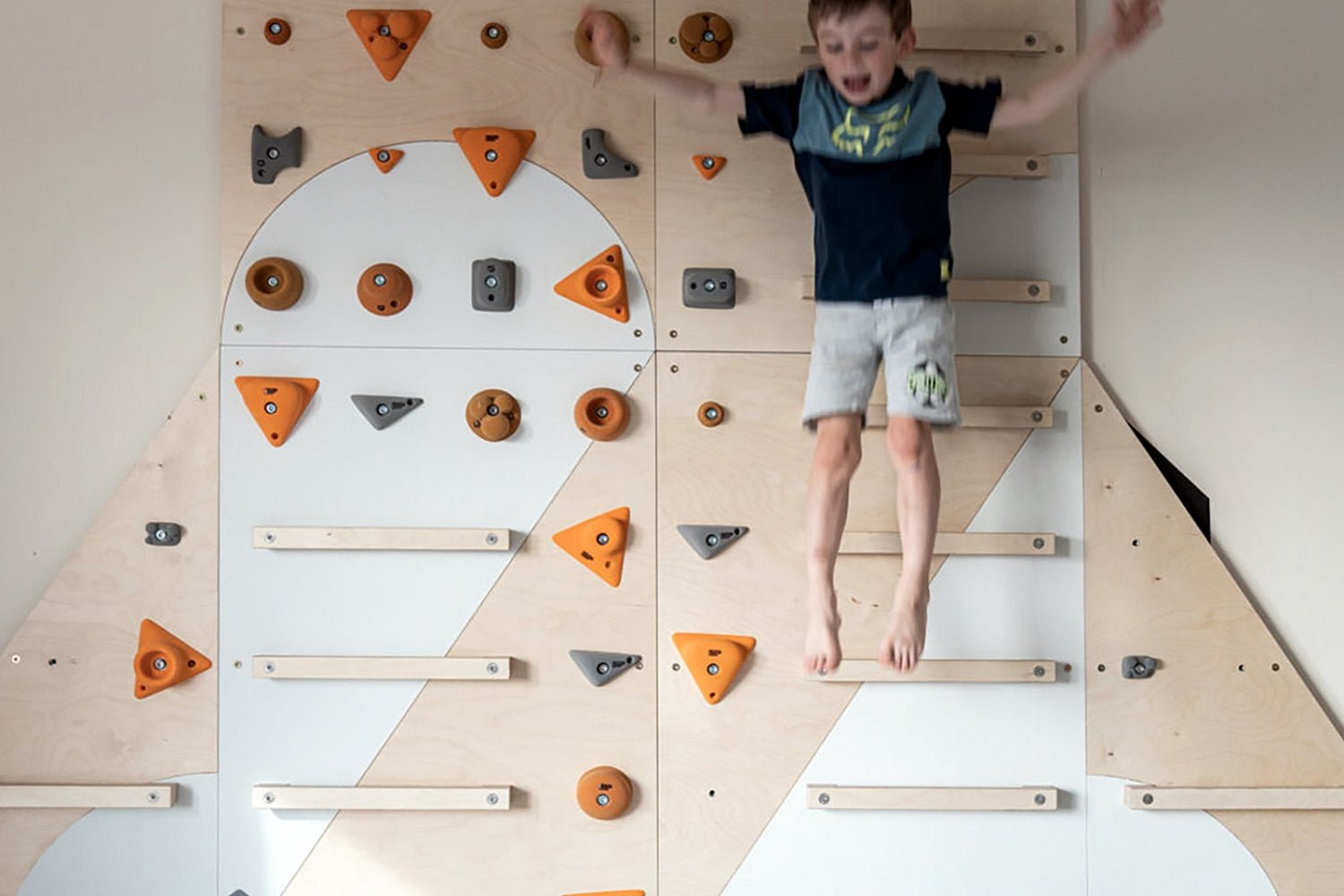
Einzelelement BK Dreieck links | Kletterwand BK INDOOR | 118 x 78 cm | 9 Loch
€149,00
Unit price perEinzelelement BK Dreieck links | Kletterwand BK INDOOR | 118 x 78 cm | 9 Loch
€149,00
Unit price perEinzelelement Dreieck links für Kletterwand INDOOR – für den linken Abschluss und kreative Erweiterungen & individuelle Gestaltung der BK-Serie
Diese besondere Kletterplatte bringt Abwechslung ins Spiel: Ihre dreieckige Form eignet sich ideal, um neue Routen zu schaffen, Kletterecken zu gestalten oder bestehende Systeme aufzulockern. Wie alle Kletterwände INDOOR ist sie robust, modular, hochwertig verarbeitet und zertifiziert.
Technische Daten:
-
Maße: 118 x 78 cm (dreieckige Form)
-
Material: 18 mm wetterfestes Sperrholz
-
Bohrungen: 9 Löcher zur Griffmontage
-
Montagezubehör: 5 x Schrauben 8 mm × 120 mm (Torx-Kopf)
Lieferumfang:
-
1 x Kletterplatte in Dreiecksform mit 9 Bohrungen
-
5 x Montageschrauben zur Wandbefestigung
Mit ihrer außergewöhnlichen Form sorgt die dreieckige Kletterplatte für neue Herausforderungen und optische Abwechslung. Sie ist ideal als Abschluss, Zwischenstück oder als Teil eines eigenen DIY-Kletterprojekts.
📎 Anleitungen & technische Infos:
Einzelelement zur Kletterwand BK INDOOR – 1-teilig
Erweiterungs-Kletterplatte INDOOR für Erweiterung oder Eigenkonstruktion zur BK-Serie
Du willst deine bestehende Kletterwand erweitern, dein eigenes Projekt starten oder eine defekte Platte ersetzen? Mit dieser einzelnen Kletterplatte bist du flexibel und kreierst dein individuelles Kletter-System.
Technische Daten:
-
Maße: 118 x 78 cm
-
Materialstärke: 18 mm Birken-Multiplex (inkl. Rahmen: Gesamttiefe 36 mm)
-
Bohrungen: 20 Löcher zur Griffmontage
-
Montagezubehör: 6 x Schrauben 8 mm × 120 mm (Torx-Kopf)
Lieferumfang:
-
1 x Kletterplatte 118 x 78 cm, 18 mm stark (36 mm inkl. Rahmen)
-
6 x Montageschrauben
Diese Einzelplatte entspricht exakt der Kletterwand INDOOR und kann direkt in bestehende Systeme integriert werden. Ob als Ersatz, Erweiterung oder für individuelle Konstruktionen: So bleibt euer Kletterbereich modular und wandelbar.
Zertifizierung: Zertifizierte Sperrholzplatte.
📎 Anleitungen & technische Infos:
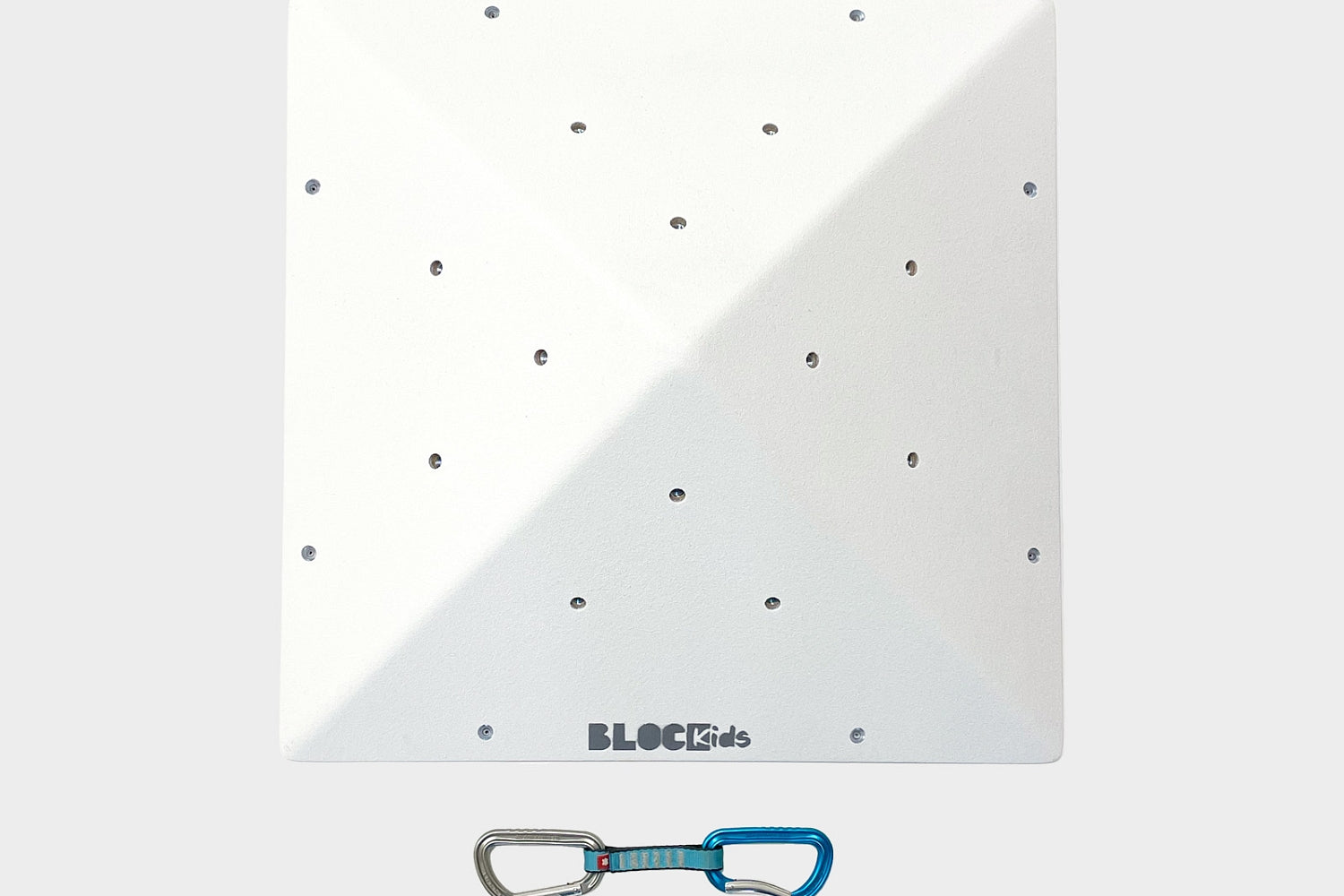
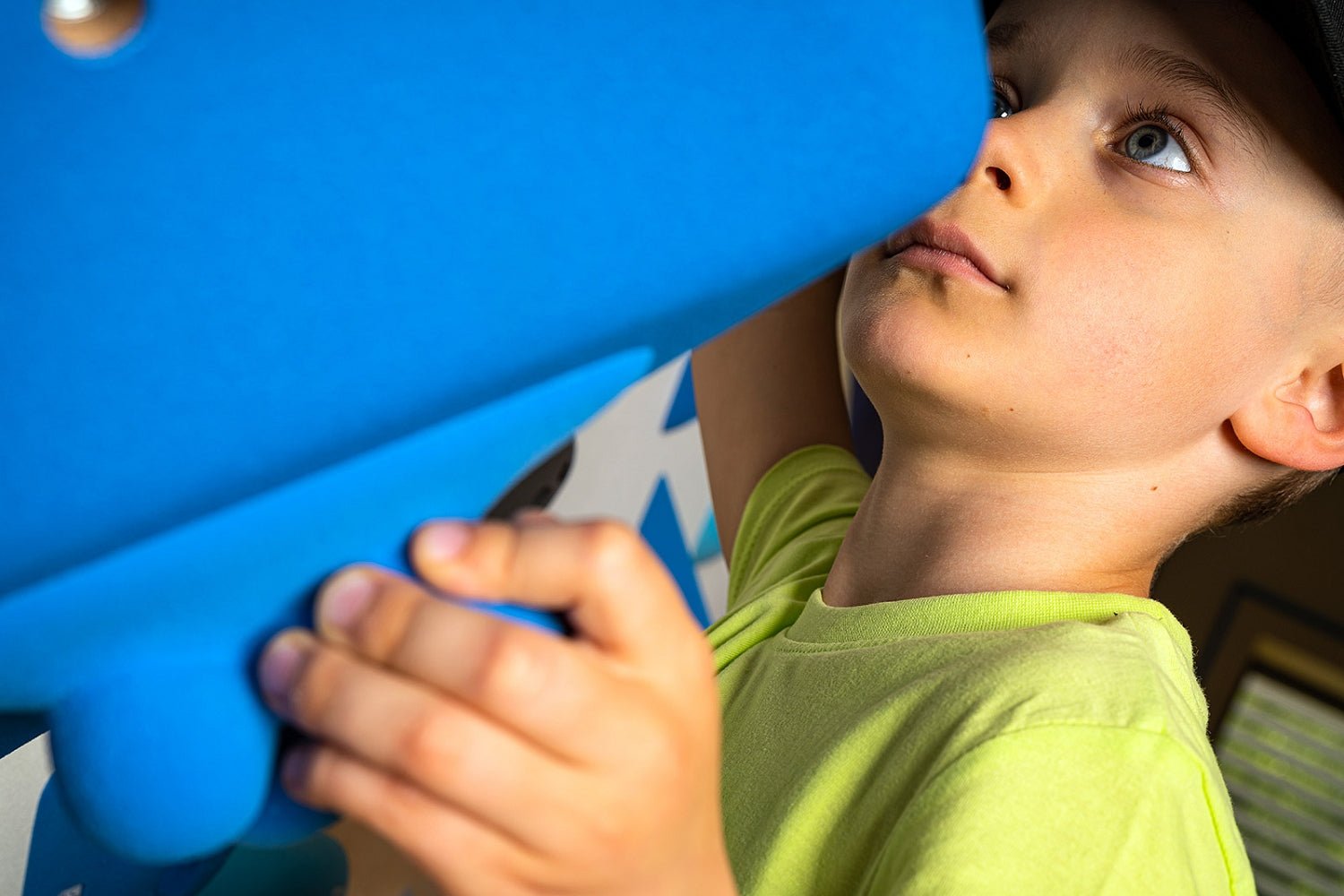
3D Klettervolumen BK PYRAMIDE INDOOR | 1 Teil | 60 x 60 x 24 cm | Zubehör BK Kletterwände
€189,00
Unit price per3D Klettervolumen BK PYRAMIDE INDOOR | 1 Teil | 60 x 60 x 24 cm | Zubehör BK Kletterwände
€189,00
Unit price perBK Holzanbau (Klettervolumen) – Erweiterung für Kletterwände. Mehr Tiefe, mehr Dynamik – das perfekte Zubehör für spannende Routen
Dieses dreidimensionale Kletterelement bringt neue Spannung auf eure BK Kletterwand. Das Volumen aus 18 mm starkem Sperrholz wird direkt auf der Wand montiert und verfügt über eingelassene Gewindebuchsen für die Befestigung von Klettergriffen. Ideal, um Routen abwechslungsreicher zu gestalten und neue Reize beim Klettern zu setzen – für Kinder und Eltern geeignet.
Technische Daten:
-
Maße: 60 × 60 × 24 cm (Kantenlänge x Kantenlänge x Höhe)
-
Material: 18 mm Birkensperrholz mit glatten, hochwertigen Oberflächen
-
Farben: Weiß, Blau, Lila (Farbbeispiele anhand des Dreieckvolumens)
-
Befestigung: inklusive Schrauben für sichere Montage an der Wand
Lieferumfang:
-
1 x BK Holzaufbau Klettervolumen
-
1 x Set Schrauben zur Wandmontage
Mit dem BK Holzvolumen eröffnest du an deiner Indoor-Kletterwand für Kinder neue Möglichkeiten. Die zusätzliche Dimension ermöglicht seitliche Griffe, Aufleger, kleine Überhänge oder einfach neue Bewegungsabläufe. Durch die standardisierte Gewindeaufnahme lässt sich das Volumen flexibel mit handelsüblichen Klettergriffen bestücken – und damit perfekt in jede vorhandene Kletterwand integrieren. Ob für verspielte Parcours oder gezieltes Training: Dieses Zubehör sorgt für neue Motivation und mehr Abwechslung im Kinderzimmer.
📎 Technische Dokumentation & Anleitung:
➤ Anleitung zur Installation der BLOCKids Kinderkletterwand
Showing 20/36
Entdecke Kletterling
Kletterdreiecke sind nur der Start in eine bewegte Kindheit. Du findest bei uns Kindermöbel, Sprossenwände, Sitzsäcke, Sofas, Schaukeln und noch so viel mehr.

Familienunternehmen mit Herz
Persönlich beraten
Wir beraten dich persönlich in Entwicklungs- und Einrichtungsfragen bequem zu Hause. Schon ein paar leicht aufzustellende und sichere Bewegungselemente, wie ein Kletterdreieck, verändern die Auslastung deines Kindes und damit seine Stimmung zum Positiven. Doch das ist nur der Anfang, mit uns kannst du euer Zuhause in einen Ort verwandeln, in dem dein Kind jederzeit seinem Bedürfnis nach Bewegung und Entspannung nachgehen kann und dann passiert etwas Magisches, wie von Zauberhand zieht Gelassenheit bei euch ein, in deinem Kind und in dir!
Wir sind Isabell, Erik und Kosmo. Gegründet haben wir Kletterling aus der Not heraus: Qualität wird so oft mit Marketing-Blabla vorgetäuscht. Wir wollen so viel Transparenz, wie möglich ist. Aus welchem Material ist mein Kinderspielzeug, woher kommt es und wurden Chemikalien verwendet? Wie steht es um die Sicherheit und wird es wirklich in Europa produziert? In China produziert, in Deutschland zusammengebaut und dann Made in Germany, gibt es bei uns nicht. Alle Produkte stammen von kleinen Herstellern aus Europa, denen wir hier ihre verdiente Plattform bieten. Dabei hapert es meist am Kundendienst in einer fremden Sprache, den wir komplett übernehmen, weil wir es lieben, mit euch im Austausch zu stehen, was heutzutage leider immer seltener wird.
Außerdem kaufst du bei uns mit sicheren Zahlmethoden in Deutschland bei einem deutschen Unternehmen ein, was dir ein gutes Gefühl und Sicherheit bringt, damit du dich voll auf das konzentrieren kannst, weshalb du hier bist: Das richtige Bewegungsspielzeug für dein Kind zu finden.
Danke für dein Vertrauen!
- Isabell & Erik
Kategoriebeschreibung
A climbing wall for your home: advantages and the right choice of materials
A climbing wall in your home or garden can be an exciting adventure not only for children but also for adults. It not only promotes physical fitness, but also mental strength and the ability to overcome challenges. Here, you'll learn everything you need to know to choose the right climbing wall for you and your family. From the different types and materials to safety tips and assembly instructions, we'll cover all the relevant points to help you make the right decision. Let's explore the world of climbing together and find out how you can transform your home into an exciting playground.
The most important things in brief
 - A climbing wall at home promotes physical fitness and mental strength in children and adults. It also improves the ability to face challenges and promotes social interaction through teamwork and communication.
- A climbing wall at home promotes physical fitness and mental strength in children and adults. It also improves the ability to face challenges and promotes social interaction through teamwork and communication.
- Choosing the right wood is crucial for the safety and longevity of a climbing wall. Birch plywood and plywood are particularly suitable for indoor climbing walls, while Douglas fir and pine are ideal for outdoor use, although they must always be weather-resistant and require regular maintenance.
- The optimal height of a climbing wall varies depending on the user group: For children, a height of 1.5 to 2.5 meters is recommended for safe climbing, while for adults and experienced climbers, up to 4 meters and more is appropriate (taking safety measures into account).
- In addition to wood, plastic and metal can also be used as materials for climbing walls – depending on the location (indoor vs. outdoor) and individual needs. Complete kits simplify assembly and, if safety instructions are followed, guarantee long-lasting climbing fun.
- A climbing wall in your own four walls not only promotes motor skills and physical health, but also important life skills such as concentration, self-confidence and strategic thinking, especially for children.
Which wood is suitable for a climbing wall?
When building a climbing wall, whether in a child's room, in the garden, or as part of an outdoor climbing frame, choosing the right wood plays a crucial role. After all, your climbing wall should not only be safe and stable, but also last a long time. Here are the best types of wood for your projects:
1. Birch plywood : This wood is characterized by its exceptional strength and durability. Birch plywood is also moisture-resistant, making it ideal for indoor climbing walls. The smooth surface provides an ideal base for climbing holds.
2. Plywood : A cost-effective alternative to birch plywood is plywood. It offers good stability and is easy to work with. For additional protection, plywood can be sealed with a weather-resistant varnish, making it suitable for use in the garden.
3. Douglas Fir: Douglas fir is an excellent choice for building an outdoor climbing wall due to its natural weather resistance. This robust softwood has a beautiful texture and color that looks natural outdoors.
4. Pine: Another option for outdoor climbing walls is pine, which offers good value for money and is relatively easy to work with. With appropriate treatment, this wood can also be made weather-resistant.
The following applies to all types of wood: Make sure that you take good care of the material and revarnish or paint it as needed to ensure the longevity and safety of your climbing wall - whether indoors in the children's room or outdoors in the garden.
The use of high-quality fastening materials such as special screws and dowels also guarantees the stability of the wall and the secure attachment of the handles.
By choosing the right wood and high-quality assembly, you can create a safe environment for playing and romping - indoors and outdoors - that will make not only children's eyes light up.
How high should a climbing wall be?
 The optimal height of a climbing wall depends on several factors, including the age and experience of the users and the available space. When building a climbing wall in a child's room or garden, it's important to create a safe and challenging environment that's also fun.
The optimal height of a climbing wall depends on several factors, including the age and experience of the users and the available space. When building a climbing wall in a child's room or garden, it's important to create a safe and challenging environment that's also fun.
For children
For children's safety, climbing walls shouldn't be too high. The ideal height is between 1.5 and 2.5 meters. This allows children to climb under supervision in a safe environment. It's also important to consider soft surfaces like play mats that can cushion falls.
For adults
Adults and experienced climbers often seek greater challenges. In this case, a climbing wall can be up to 4 meters or higher. Indoor climbing walls in sports centers or specialized facilities often offer even greater heights for challenging bouldering or rope climbing.
Security aspects
Regardless of the height, safety is the top priority. Ensure that all materials used—wood types such as birch plywood or Douglas fir, and fastening materials such as screws and dowels—are of high quality and installed correctly. Choosing the right accessories, such as climbing holds, also plays a crucial role in safety.
If you follow these tips, you can choose a suitable climbing wall for your home - whether in the children's room or in the garden - that is not only safe, but also contributes to physical fitness and is fun.
What does a climbing wall promote?
A climbing wall in the children's room or garden offers more than just fun. It promotes a variety of skills in children and adults that go far beyond simple climbing. Learn more about the benefits of such an investment here.
Physical fitness
Regular climbing improves strength, endurance, and flexibility. Muscles are built, especially in the arms, legs, and core. A climbing wall for children or adults therefore actively contributes to increasing physical fitness. Climbing triangles and arches are ideal for the youngest members of the family to get started.
Mental strength
Climbing challenges not only the body but also the mind. It trains concentration, as every step and grip must be carefully considered. It also builds self-confidence and helps overcome fears—be it fear of heights or fear of failure.
Problem-solving skills
Each route on the climbing wall can be viewed as a new problem to be solved. While climbing, children learn to think strategically and find solutions. This skill is not only useful in sports, but also supports them in academic performance and in everyday situations.
Social interaction
Although climbing is often perceived as an individual sport, it also promotes social skills. Climbing or belaying together fosters team spirit. Children learn to take responsibility for one another, and their communication skills are strengthened.
Choosing a children's climbing wall isn't just investing in the fun factor in the nursery or garden , but also actively supporting the development of important life skills for your child. Whether indoors or outdoors next to the playground , every wooden climbing wall offers a variety of possibilities to promote your family's health and well-being.
Which material is suitable for a climbing wall?
 Choosing the right material for your climbing wall is crucial for safety and longevity. Whether you're planning a climbing wall in a child's room, in the garden, or as part of a climbing frame , each environment requires specific materials.
Choosing the right material for your climbing wall is crucial for safety and longevity. Whether you're planning a climbing wall in a child's room, in the garden, or as part of a climbing frame , each environment requires specific materials.
Wood
Wood is the most popular material for indoor climbing walls, especially in children's rooms. It looks natural, feels comfortable, and is relatively easy to work with. A wooden climbing wall fits well in living spaces and can be customized with various colors. For outdoor use, however, you should choose weather-resistant wood such as cedar or treated wood to withstand the elements.
plastic
Plastic can also be a good choice for outdoor children's climbing walls. This material is extremely weather-resistant, colorful, and offers a wide range of design options. Plastic is often used, especially for playground equipment. Make sure you choose a high-quality, UV-stabilized plastic to ensure the colors remain vibrant and the material doesn't become brittle.
metal
Metal is primarily used for professional and public climbing equipment. It is very robust and resistant to all weather conditions. Metal structures are generally less suitable for private use, as they require more complex assembly and can be more expensive.
Complete kits
For a simpler solution, many manufacturers offer complete kits. These kits often include all the necessary components, such as climbing holds, mounting hardware, and instructions for setting up the climbing wall, for both indoor and outdoor use. They allow you to create a safe and attractive climbing area without requiring extensive prior DIY skills.
Regardless of the material chosen, the safety instructions must always be observed: The surface under the wall must be shock-absorbing (e.g. with fall protection mats), all screws must be tight and regular checks guarantee long-term climbing fun.
The best material for your climbing wall depends on your individual needs: Do you want a durable outdoor project? Or do you prefer something warm and inviting for your child's room, such as a climbing wall for children with a load capacity of up to 120 kg ? With the right approach, you can ensure your family can climb safely, whether indoors or outdoors.
Conclusion
A climbing wall at home offers much more than just the opportunity for physical exercise. It promotes mental strength, problem-solving skills, and brings people together. Whether you choose wood, plastic, or metal depends on individual needs and the desired location. Always remember that safety comes first. With the right materials and professional installation, you can create a safe and attractive climbing environment that will bring you and your family joy for many years. Be inspired by the possibilities and tackle the project. Your own climbing wall will not only be an exciting element in your home, but also a valuable tool for the development and growth of all users. In addition to climbing walls, you will find many other toys at Kletterling that promote your child's motor skills. We also carry a great selection of child-friendly furniture. A children's wardrobe or a children's bookshelf create structure and support your child's independence.
Frequently Asked Questions

What are the advantages of having a climbing wall in your own home or garden?
A climbing wall promotes physical fitness, strengthens mental abilities, and improves problem-solving skills. It also encourages social interaction, develops important life skills in children, and fosters team spirit.
How does climbing contribute to children’s development?
Climbing promotes the development of important life skills such as problem-solving, promotes physical fitness, and builds self-confidence through the achievement of personal goals. It also promotes social interaction and teamwork in children.
What can you use to build a climbing wall at home?
Climbing walls can be made from various materials, such as wood, plastic, or metal. Wood is popular for indoor climbing walls, while plastic is weather-resistant and suitable for outdoor projects. Metal is usually recommended for professional installations.
Why is wood a popular material for indoor climbing walls?
Wood is a popular material for indoor climbing walls because it has a natural look, is easy to work with, and adds warmth to the space. It also integrates well with the interior design of a home.
Are complete sets for climbing walls recommended?
Yes, complete kits are a simple solution that includes all the necessary components for building a climbing wall. They're especially suitable for beginners who aren't familiar with purchasing materials and construction.
What safety instructions should be observed when building a climbing wall?
Selecting suitable materials, a stable wall construction, and adequate fall protection are important. Regular inspections of the materials and construction for wear and damage are also essential to ensure long-term enjoyment with the greatest possible safety.
Discover more in: Play & Climb
Top Categories: Slides | Swings | Wall Bars | Seesaw | Tents & Pillows | Balance Boards for Kids

